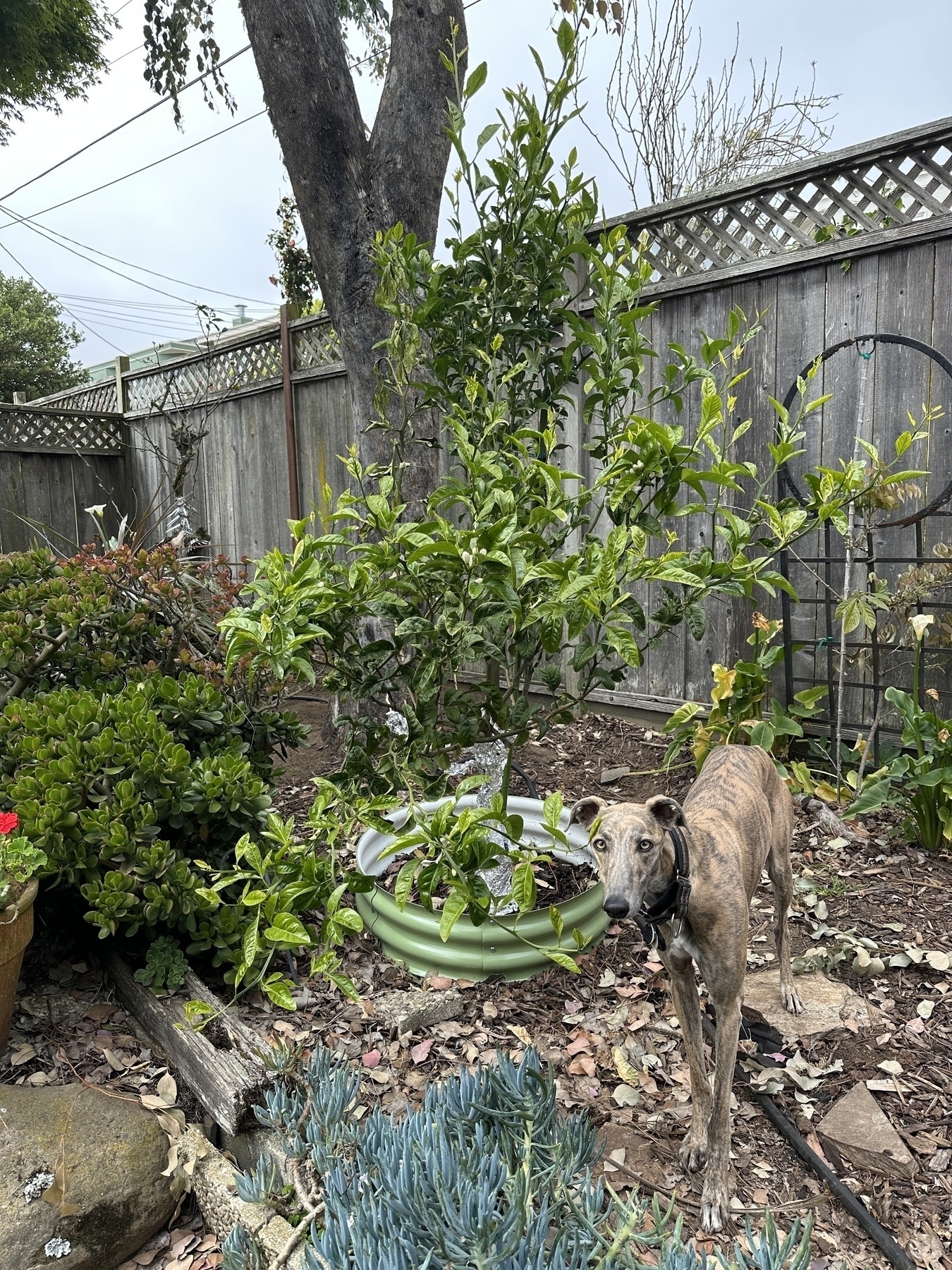Ranunculus Sweater by Midori Hirose
This started with a co-worker chatting to me about her discovery that the Ranunculus is far and away the most popular pattern on Ravelry, and she wasn’t sure why. We did some research and learned that it’s very modifiable, and because popularity breeds popularity, there were tons of knit-along videos available to help knitters through the tricky parts. I could tell that this was probably a little bit above my skill level, but thought it would be fun to attempt with the help of all those videos.
It’s obviously way too big, even at the smallest size (1), but I did some math and figured out that if I used DK yarn with size 6 and 8 needles, I could get the right size. Unfortunately, I forgot to switch from 6 to 8 after I finished the yoke (facepalm), so it’s a bit smaller than I intended, but I still think it looks nice.
My other big mistake was not accounting for the fact that smaller needles meant that I would need more yarn, so I ran out of grey before I got to the end. My yarn shop no longer had that color, so I switched to black for the remainder of the body, then undid the ends of the sleeves and added black to the ends. I actually think it turned out really well! I might do this again, on purpose, for another project.
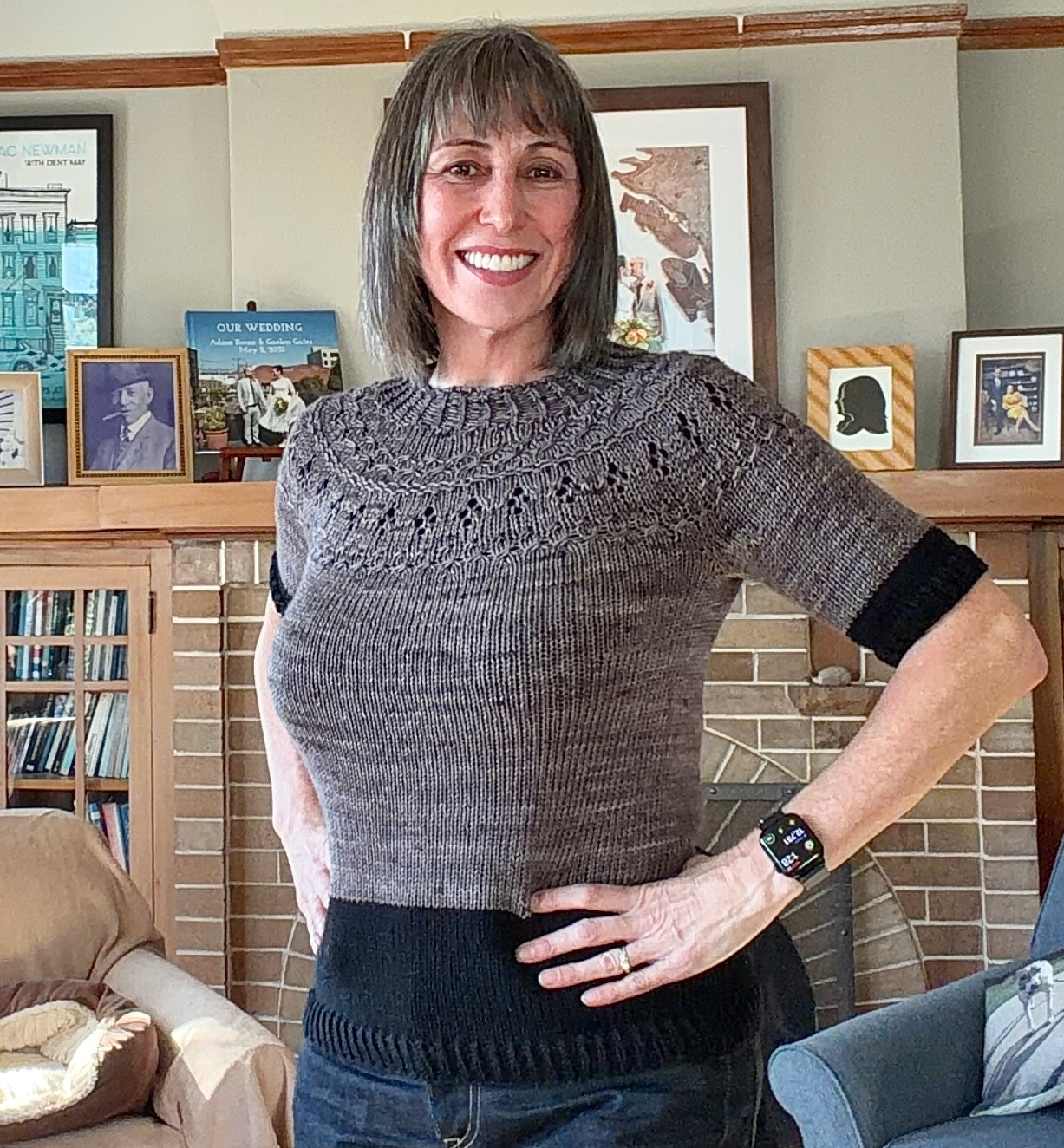
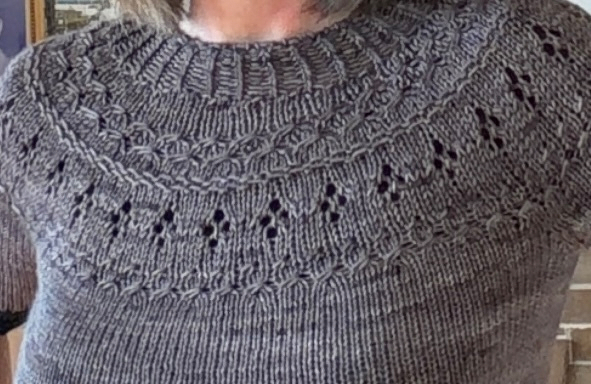
Shopping for Japanese Selvedge Denim in Osaka
I pride myself on being a light packer, and if you ever see me dragging a roller bag behind me, I’m on the way to hell because I’m dead. My husband and I both travel with hiking backpacks, and for a 2-week trip, there’s not really any free space to bring back souvenirs. I also hate shopping, and don’t want to spend time on it while on vacation! That being said, well-made clothing basics are something Adam and I always appreciate, especially if it’s hard or expensive to find them in the U.S.
For that reason, we went shopping for Japanese selvedge denim in Osaka. How is Japanese denim different? For some reason, Japan is VERY INTO JEANS. They became popular as a symbol of modernity after WWII, and there is a group of Japanese designers who have built their business on making jeans the “old” way, with the kind of quality materials most clothing makers no longer use. You can buy jeans from these designers in the U.S., but it will cost you at least $400-$600 a pair. Adam got a pair at Studio d’Artisan, and I got one at Momotaro, each for less than $200 (about what I typically pay for much lower-quality American jeans), thanks to the weak yen and tax-free shopping.
The factors that make these jeans awesome:
- They’re intended to last decades, and the weaving method means they can be repaired (without a patch) if they get a hole.
- They’re woven on old-style shuttle looms, a method that creates a stronger, sturdier fabric that has mostly been abandoned in favor of mass-production projectile loom machines. Slower weaving also puts less stress on the yarn, resulting in a softer feel.
- They’re made with much higher-quality cotton than most jeans. Momotaro uses hand-harvested Zimbabwean cotton, which creates a fabric that’s supple but also very sturdy.
- They’re made from 100% cotton, whereas most modern jeans incorporate some percentage of synthetic fibers.
- They usually feature a dark indigo dye that is intended to fade naturally with a pattern that’s unique to your body.
- They’re finished with french seams rather than a serged edge, which makes the seams more resilient and creates a more finished look.
If you’re in Osaka, it’s worth visiting the stores of the “Osaka Five” (Evisu, Studio d’Artisan, Momotaro, Denime, and Warehouse & Co.) and making room in your luggage for a pair!
Praise for Wanderlog, the Trip-Planning Tool I've Always Wanted (not an ad!)
Now that we’re back from Japan, I have to do a shout-out for a trip planning tool that I used for the first time on this trip: Wanderlog. There’s a free version and a paid version, and I used the free version. Paying gets you some additional features, notably one that orders your day’s itinerary in a way that makes sense from the locations.
As background, I really enjoy detailed trip-planning, and always give myself at least 4-5 months' lead time so I can really spend time learning about the place and designing an itinerary. I could never find one tool that does it all, and I typically use a combination of (1) multiple saved Google Maps, including one for restaurants, one for sightseeing stops, etc.; (2) Google Docs that combine notes, recommendations from other people, and research information; (3) a singular Google Doc with a day-by-day itinerary and page references to (4) travel books from Lonely Planet, Moon, or Rough Guide. It’s always kind of a pain to navigate and track things.
Enter Wanderlog. This is an app that has entries for almost all places a person might want to visit as a tourist, as well as almost every restaurant, train station, hotel, etc. It allows you to create separate “lists” for each of these things, and then combine the items into an itinerary. It will then estimate your walking/transit/driving time between each place. Here is a screenshot:
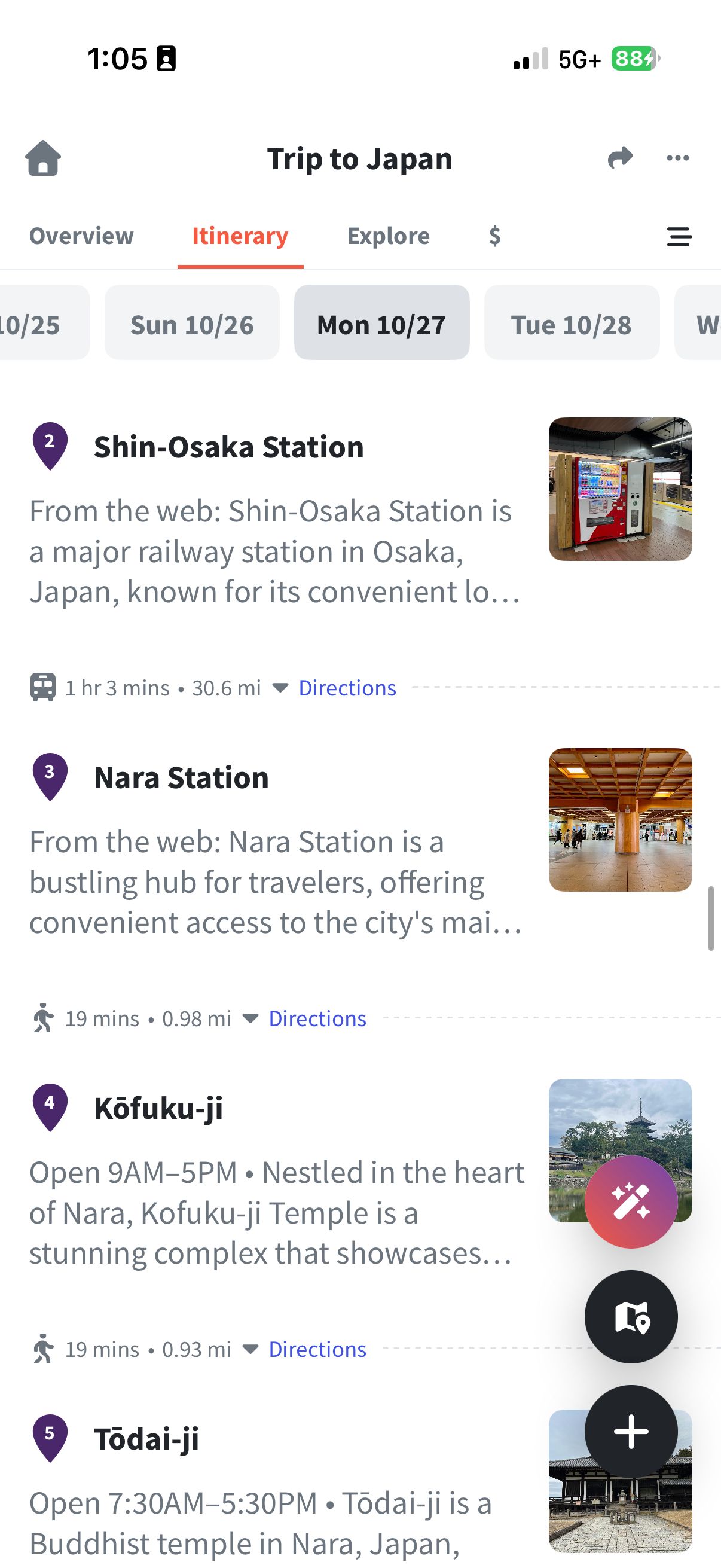
If you click onto any of the items, it will reveal more detailed information, including address, opening hours, and, often, how much time people typically spend in the place. If the display photo isn’t the right one to jog your memory of what the place is, you can change it. You can also add manual information like cost and notes.
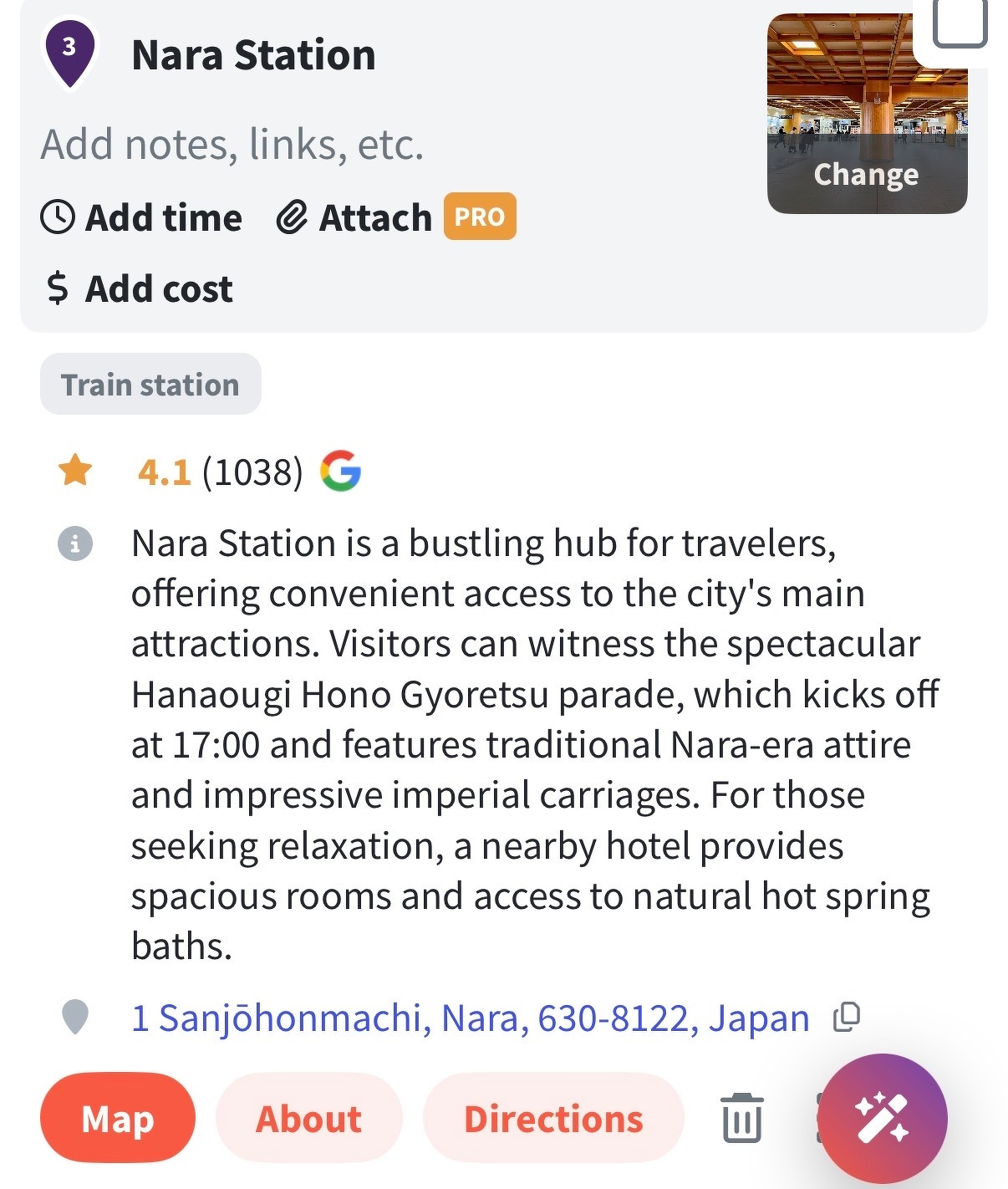
Finally, there is also a maps view that allows you to combine layers of lists, and one, some, or all of the item’s on a particular day’s itinerary. For example, this view combines my restaurant list (red) with my itinerary for a particular day (orange), so I can see which restaurants might be convenient as a lunch stop.
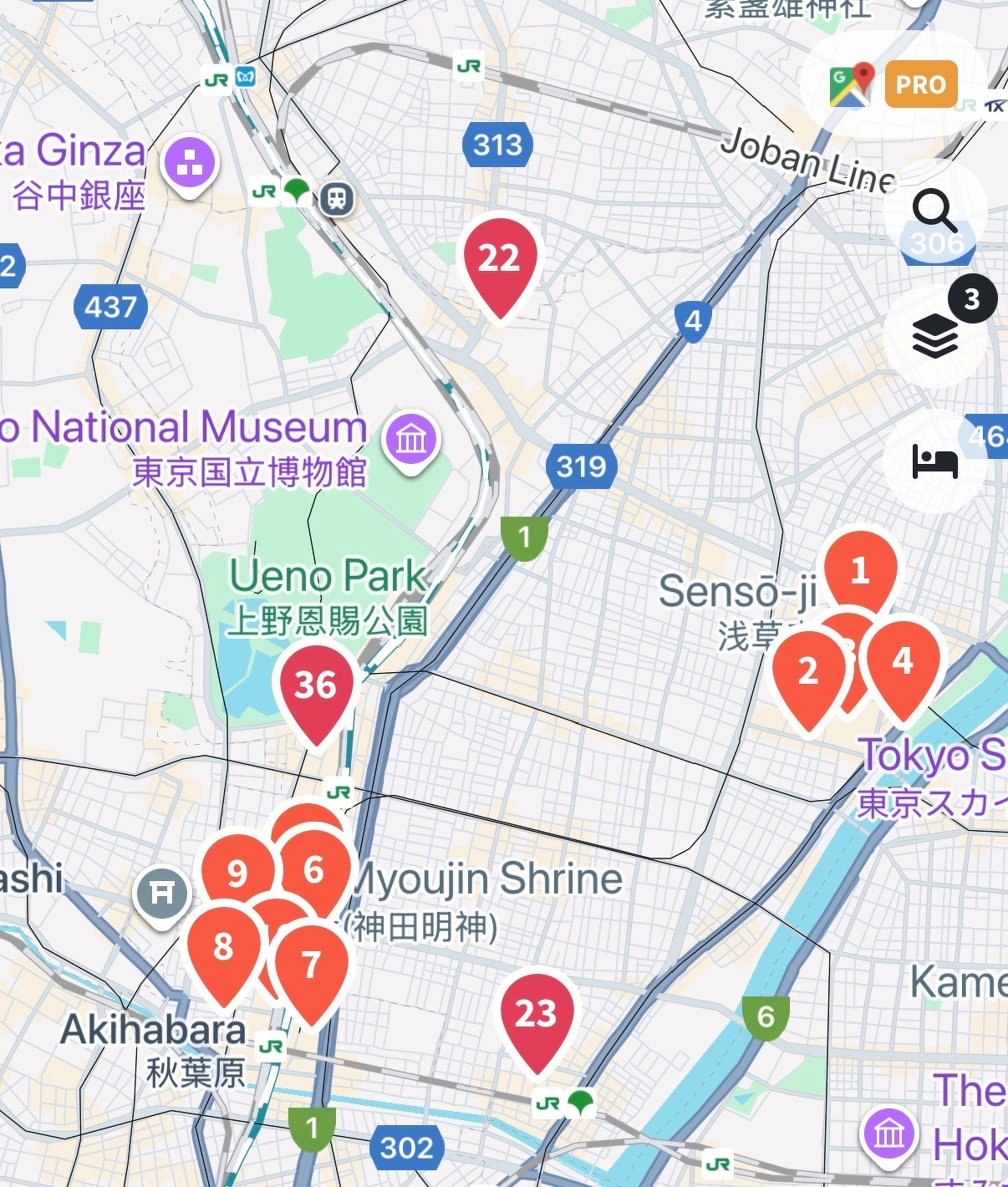
There is both an iPhone app and a desktop web page, and they sync together, so you can work off of both. As I noted, the paid version includes a relatively slick feature that will order your itinerary stops in a way that makes sense based on their location, although my experiments with that (you get a 7-day paid trial when you sign up) were mixed, and I had to double-check everything. That being said, I’m super impressed with this app. It’s presumably less useful for those planning non-traditional trips to see friends and family, or to visit other destinations that wouldn’t be on a public list, but for the average tourist, I found it to be excellent.
Japan! Photos and My Tips for First-Time Travellers
We’re back! We were awake for about 22 hours for the trip home, I slept 11 hours last night! I’ve uploaded my best photos to a Flickr album here, although I’m still working on the captions.
I posted most of them to Instagram as I went, here they are:
- Batch 1: Tokyo
- Batch 2: More Tokyo
- Batch 3: Hakone Open Air Museum
- Batch 4: Hakone
- Batch 5: Osaka
- Batch 6: More Osaka
- Batch 7: Nara
- Batch 8: Kyoto
- Batch 9: More Kyoto
- Batch 10: Last Days in Tokyo
The fact that Adam speaks some Japanese made a huge difference in terms of how friendly people were and what we were able to do! But as a first-time traveller to Japan, here’s what I learned from this trip and would tell other first-timers:
- Outside the big cities, many places are cash only. Many places that take credit cards require a plastic card (not phone pay).
- Wear comfortable shoes that you can walk 20K-30K steps a day in. This is our typical travel style, but I think even people who don’t typically walk a lot will walk a lot in Japan. Make sure they can slip on and off easily for no-shoes areas. I wore APL TechLoom Travelers, and I later saw a Skechers knockoff on sale for $50 so I bought those too, and BOY could you tell the difference at about 15K steps in a day. The APLs were comfortable even on hiking/long walk days.
- It rained more than we expected. Bring a good umbrella and waterproof shoe covers if you’re going during a somewhat rainy season!
- Get a Suica card and add it to your Apple Wallet (NOT the Suica app). Go to Apple Wallet —> + —> add transit card —> Japan —> Suica. Then download the Suica app (NOT the Suica mobile app). Add some money to the Suica card before you get there, so you’re ready to take the train from the airport. Then you’ll be set up to tap your phone to pay for all local transit systems throughout Japan.
- Once you have the Suica Card, get the SmartEx app for Shinkansen tickets (it requires a Suica number).
- In Kyoto, expect many popular sites to be crowded. Don’t go to Arayashima bamboo forest, which is PACKED, look up the locations of other bamboo forests that are just as nice. There isn’t really anything special about Arayashima.
- Japan has almost no animal welfare laws. The number of animal cafes have expanded, and no matter how well a cafe promises to treat their animals, there is no universe in which a wild animal, such as an owl, hedgehog, or otter being handled by strangers all day is a humane environment for that animal. Resist the temptation to patronize them.
- Related: Be prepared to see pet stores selling puppies and kittens. I didn’t expect this and it was jarring and upsetting.
- Carry a small container of hand soap, or sheets of paper soap, as many public bathrooms don’t have soap.
- In Nara, raise both empty hands in the air to show the deer you are out of crackers. Otherwise they may bite you! They understand the “hands up” gesture very well.
- Stairs and escalators have specific rules about where to walk and stand, and it’s not consistent. Look for signs.
- No walking and eating. If you buy food at a street food stall, you’re expected to stand next to the stall and eat it.
- If it’s your first time in Tokyo, stay in Shibuya or Shinjuku where you’ll be near all the major rail lines, which you’ll take everywhere.
- If you’re not from a city, don’t be intimidated about taking transit everywhere. Google Maps has good directions, and things are color-coded and signed well in English.
- As in Europe, many double-occupancy hotel rooms only have a “full” size bed (NOT enough room for 2 people!). I like to use Booking.com to sort for hotels where the bed is either a Queen or King.
- Carry a plastic bag for garbage, as trash cans are few and far between and you may need to carry it for a long time.
- Bring a coin purse or something to keep coins in, you’ll end up with a lot.
- At food establishments, each person is expected to order an item, and they can be very persnickety about insisting on the rule. For example, Adam and I went to a mostly-empty dessert pancake shop on a weekday afternoon, and wanted to share a very large pancake set with ice cream. We were required to order a drink (I got coffee) so we would each be ordering one item. We also encountered a “1 drink minimum” rule at a nicer restaurant where we spent about $50 pp.
- Don’t let reports that Japan is overtouristed stop you. Some of the most popular spots in Kyoto were packed at midday, but that was the only place we encountered uncomfortable crowding. It’s a beautiful and interesting country that’s worth visiting. With the weak yen, it’s also surprisingly cheap if you are used to living in San Francisco!
Link: What Made Blogging Different?
What Made Blogging Different? by Elizabeth Spiers
This piece really resonated for me. I started a website for a niche interest in the early 90s, which became surprisingly popular, mostly because so few people (and definitely few women in their early 20s) were making websites. About a decade later, I started a Blogspot blog (again about a niche interest, again becoming surprisingly popular, mostly due to the dearth of blogs on this subject), but by then the online masses had already started to curdle, and I learned that if you’re a woman online, you better keep it pseudonymous for your own safety and sanity. This piece brought all that back. I miss the blogging days, too. Hence this blog, I guess.
Testing Amazon’s New Grocery Delivery Service
About a month ago, I ordered something on Amazon that was a food item (maybe pecans?) and, on the way to checkout, I was asked whether I wanted to add things like 33-cent avocados (!!!!!), milk, or bananas to the order. I was a little confused, because I had been aware of the “Amazon Fresh” service (in partnership with Whole Foods, which they now own), but that was a separate service from Prime, with a separate annual fee.
I decided to try it out to see what happened— and who could resist 33-cent avocados? I added other items to get to the $25 minimum. I was offered a choice of 2 delivery windows: 5p-9p that evening, or 4a-8a the next morning. The items were exactly what I ordered and showed up on time.
I learned later that Amazon is testing this service, included for Prime members, in select cities (San Francisco being one of them). The goal is to compete with companies like Instacart and Wal-Mart, which apparently also offers grocery delivery.
I never use Instacart because it ends up being more trouble than just going to the store. Even if I add substitutions for every item and detailed instructions when I make my list, the shopper ends up texting incessantly during the trip (while I’m in meetings, which is always), half the time things on my list are unavailable, and some of the subsitutions are wrong. Amazon didn’t contact me at all during shopping, and presumably, they know exactly what is in stock when you order it.
Overall, it was a great experience, and I’ve used it a few times. I know Amazon is evil, but life is challenging, and this is a very useful tool in a pinch. I actually enjoy going to the grocery store, and there are both a Safeway and a Whole Foods within walking distance of my house. But work has been crazy lately, and this has been particularly useful for when we’ve run out of something midweek. I’m interested in seeing where it goes.
San Francisco Marathon - City Half (2025)
I ran the “City Half” of the San Francisco Marathon this weekend, which is the second half of the full marathon course. You can also opt to do the first half, which goes over the Golden Gate Bridge and back, but that’s the course I’ve done multiple times as part of the Golden Gate Half, which happens in November. The City Half has the advantage of a luxurious 8:30am start time (the first half starts at 7:00am, and the full marathon starts at 6:30am). I woke up before my alarm, which was nice, because the worst part of running a race is always having to get up at a ridiculous hour.
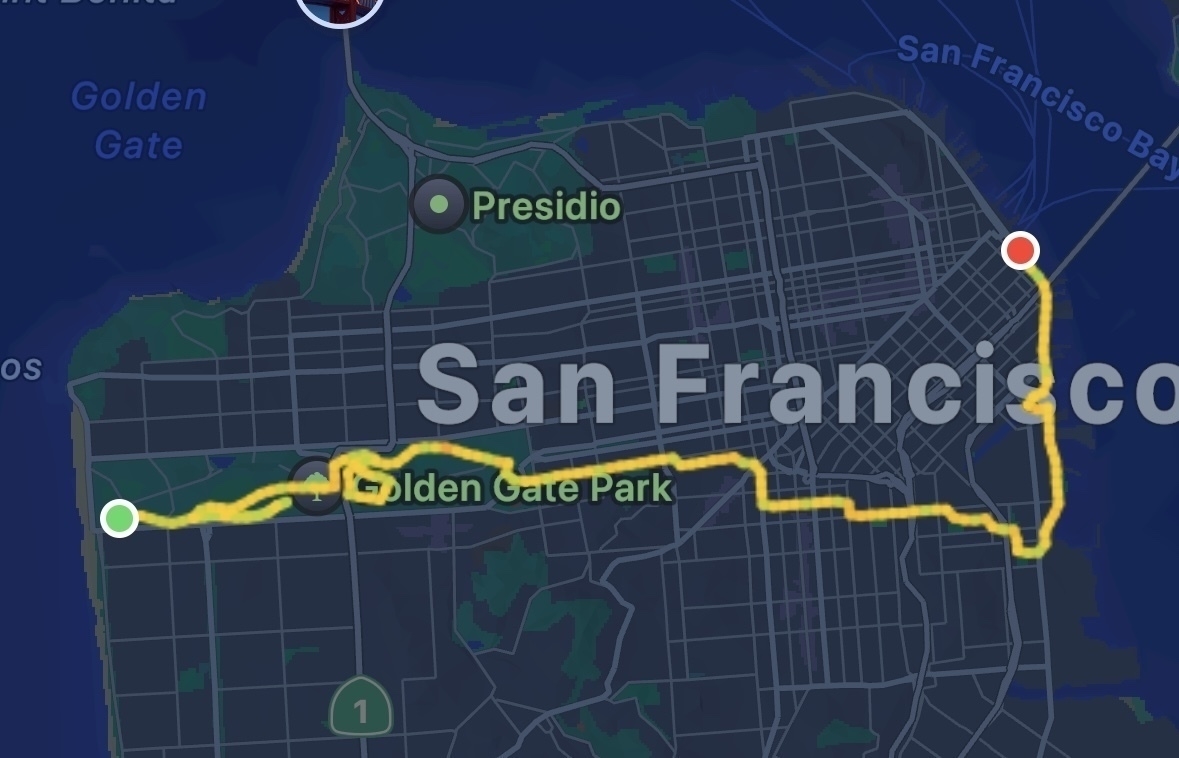
The course started at Ocean Beach, looped around Golden Gate Park, went southeast through Dogpatch, and ended at the Ferry Building. It was a very fun course, with only a few not-too-steep hills. It was very foggy, but not too cold, at the starting line.
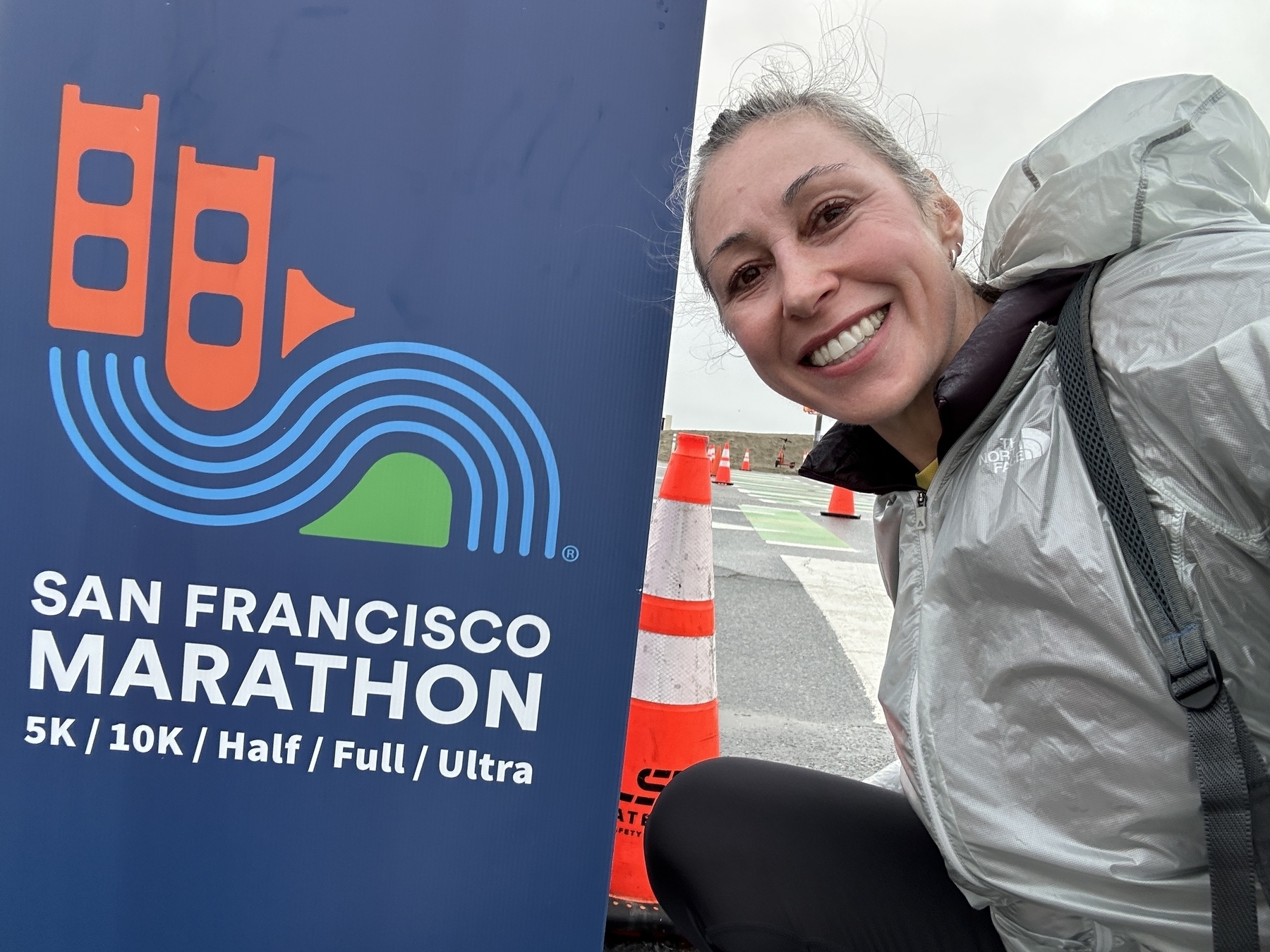
A benefit of going through the city was that a lot more spectators than usual were out, given that it went through neighborhoods where people lived. My favorite was a guy playing a tuba in the middle of Guerrero, and someone with the sign “YOU’RE RUNNING BETTER THAN THE U.S. GOVERNMENT!” Running across it also really helps you appreciate how small San Francisco is.
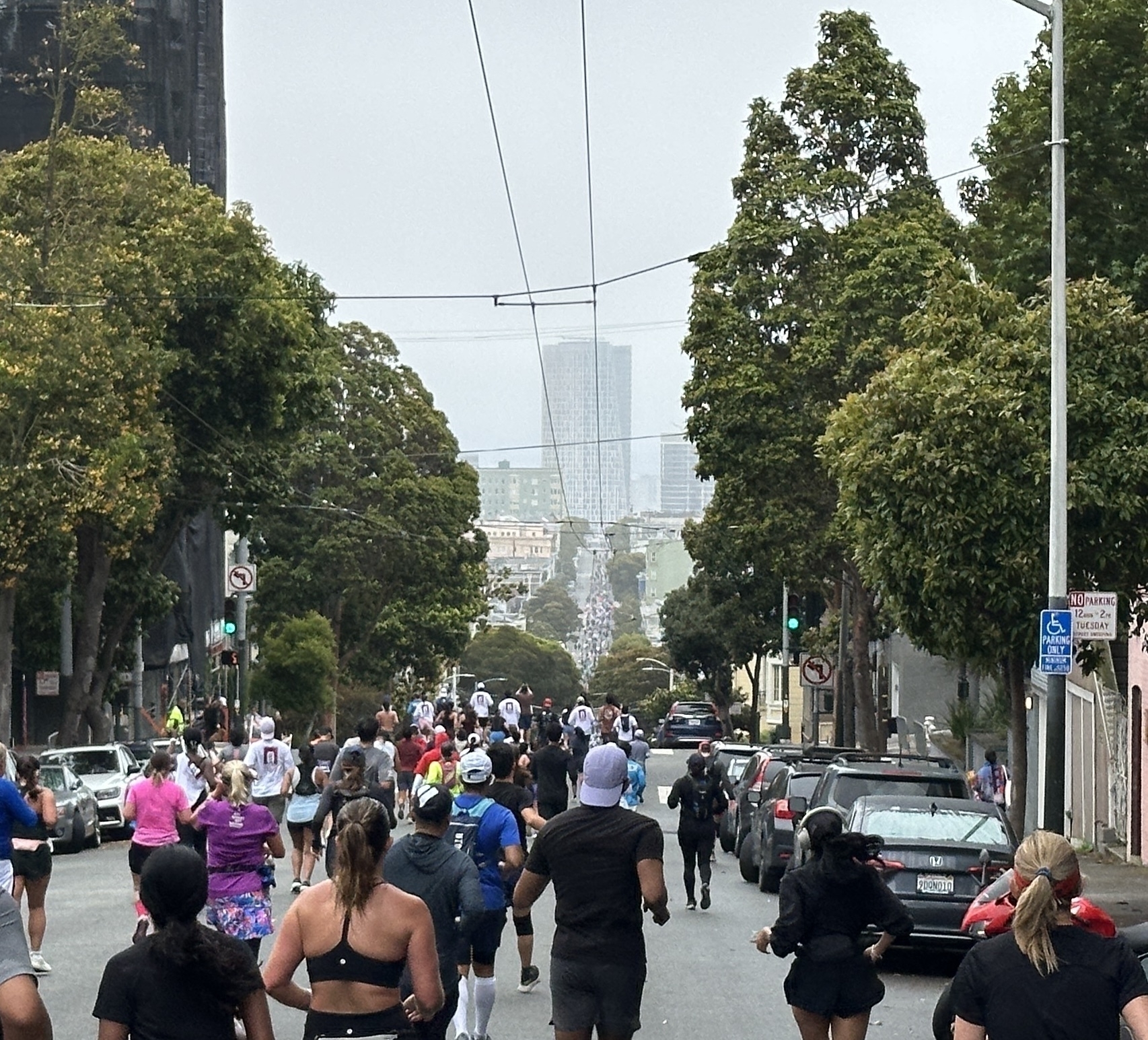
Going down JFK Drive in Golden Gate Bridge also allowed me to see the now-finished sea serpent sculpture that’s near the Prayerbook Cross waterfall. It looked super cool!

I placed 19th in the women 50-54 category, but I’m always just trying to match or beat my previous time. The only bummer about the race was that it wasn’t particularly well-organized – there was only one sugar gel station that I saw (luckily I brought my own), and the gear pickup at the end was a disaster. We waited almost an hour to get our stuff! Anyway, it was still a great experience, and I have another finisher medal for my shelf.
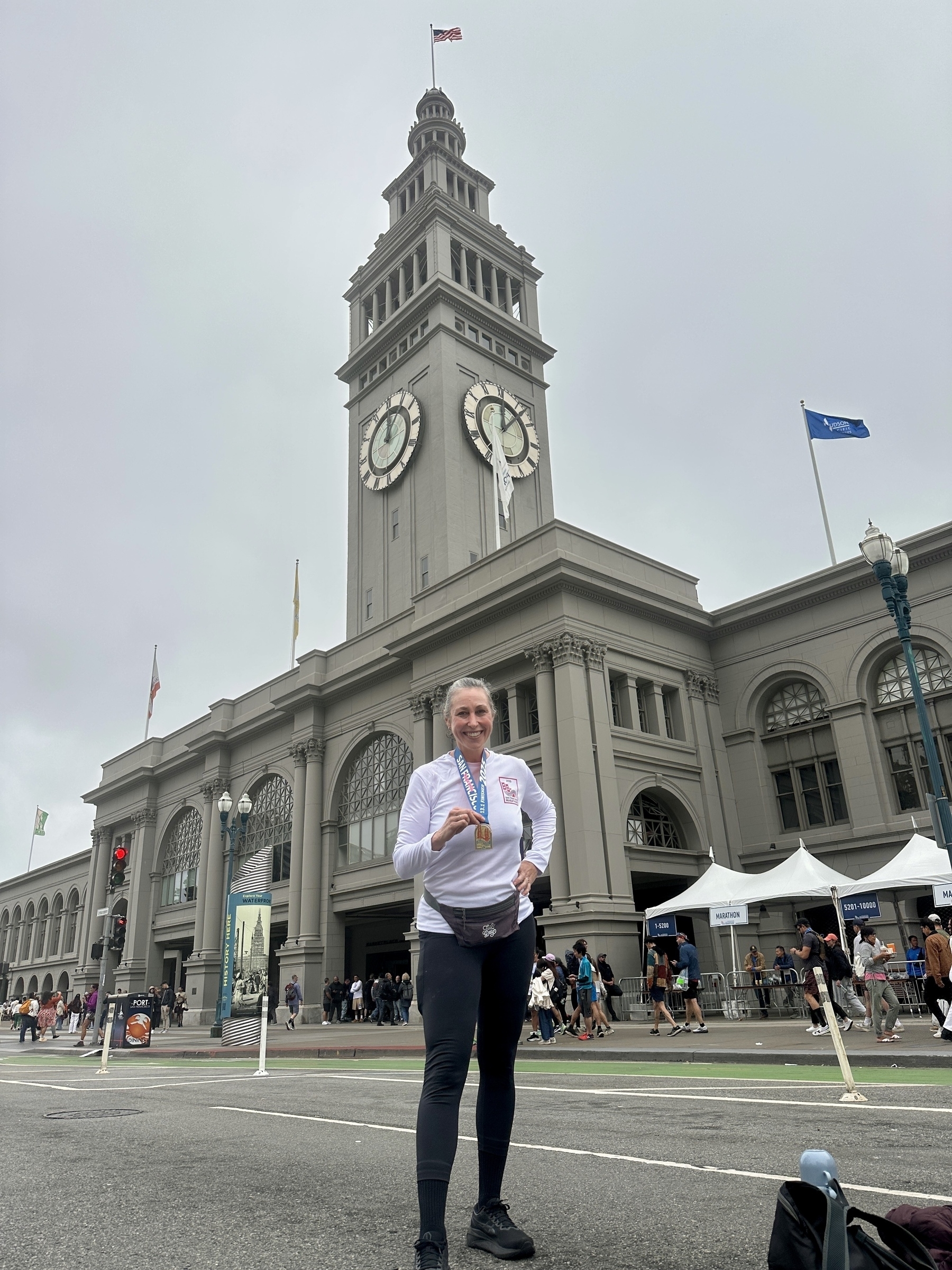
"Too Much" on Netflix is the Best Show I've Seen in a While
This show is such a gem, and I want it to get the attention it deserves! It’s written by Lena Dunham and her husband as a semi-autobiographical story about their relationship. It stars Meg Stalter from “Hacks,” who is hilarious, although it’s not a straight-up comedy – there are plenty of dramatic and poignant scenes. It made me cry multiple times.
I feel like the show got some negative reviews from people who don’t like Lena Dunham and used the opportunity to work out their own issues about her, or people who were expecting it to be more of a comedy, but I think this New Yorker review was pretty accurate.
Part of why I loved it is that it’s ultimately a show that very effectively communicates how we all have a lot of baggage from our childhoods, past relationships, etc., and often what we think of as those special “you know it when you meet THE ONE” romantic feelings are the result of being drawn to partners who help us heal that damage, even if we’re not necessarily conscious of it.
I also like the way it portrayed flawed characters who are capable of change – both Jessica and Felix are very flawed, as are most of the people in their orbits – but the show doesn’t condescend to any of them, and doesn’t “punish” them for their issues. Instead, it portrays them all as deserving of love and friendship (honestly, even Zev). The show also illustrates the way that people we think of as “villains” in our own personal stories may have a very different perspective. I thought the Wendy character arc was particularly satisfying and surprising.
Finally, it was wonderful to watch a female character who is not a size 2, but has a positive self-image and is not insecure about her weight. She’s also ambitious and very good at her job, which again, is unusual for shows with young women at the center.
The writing is excellent, and it’s definitely not a “two screen” show – there is a lot of subtlety in the dialogue and reactions that is easy to miss. I watched it through twice, because so much of it is told in flashbacks, and I picked up a lot of nuances the second time around, after I knew what was going to happen.
As a bonus, the soundtrack is incredible, and there are a ton of charming cameos. Richard E. Grant as Jessica’s boss was my personal favorite, as was Andrew Scott (from “Ripley”) as the narcissistic director. It’s just a wonderful show. It’s 10 episodes, ranging from 30 to 50-ish minutes, so not a huge time commitment. Just watch it and then we can talk about it!
The Incomparable Alemany Farmers' Market
I’m always shocked when someone who lives in San Francisco tells me they’ve never been to the Alemany Farmers' Market. It’s the biggest, cheapest, and most fun farmers' market in the city. I haven’t been to one anywhere in the Bay Area that compares.
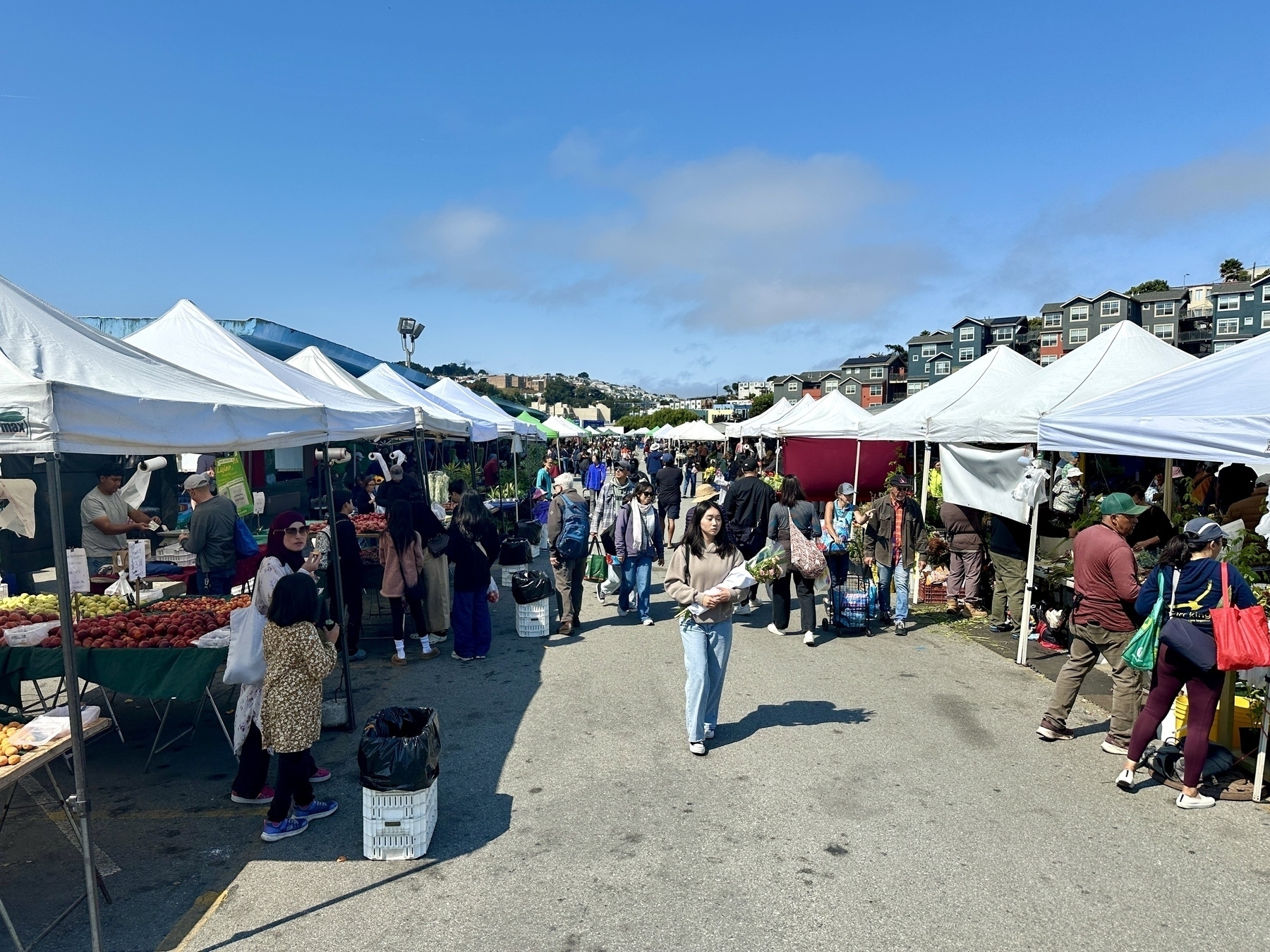
You can find every fruit and vegetable that’s in season, and discover new varieties you’ve never heard of – the one that was new to me today was the “Snow Leopard Melon.” Vendors are often happy to talk about what they have on offer and give you a free sample.
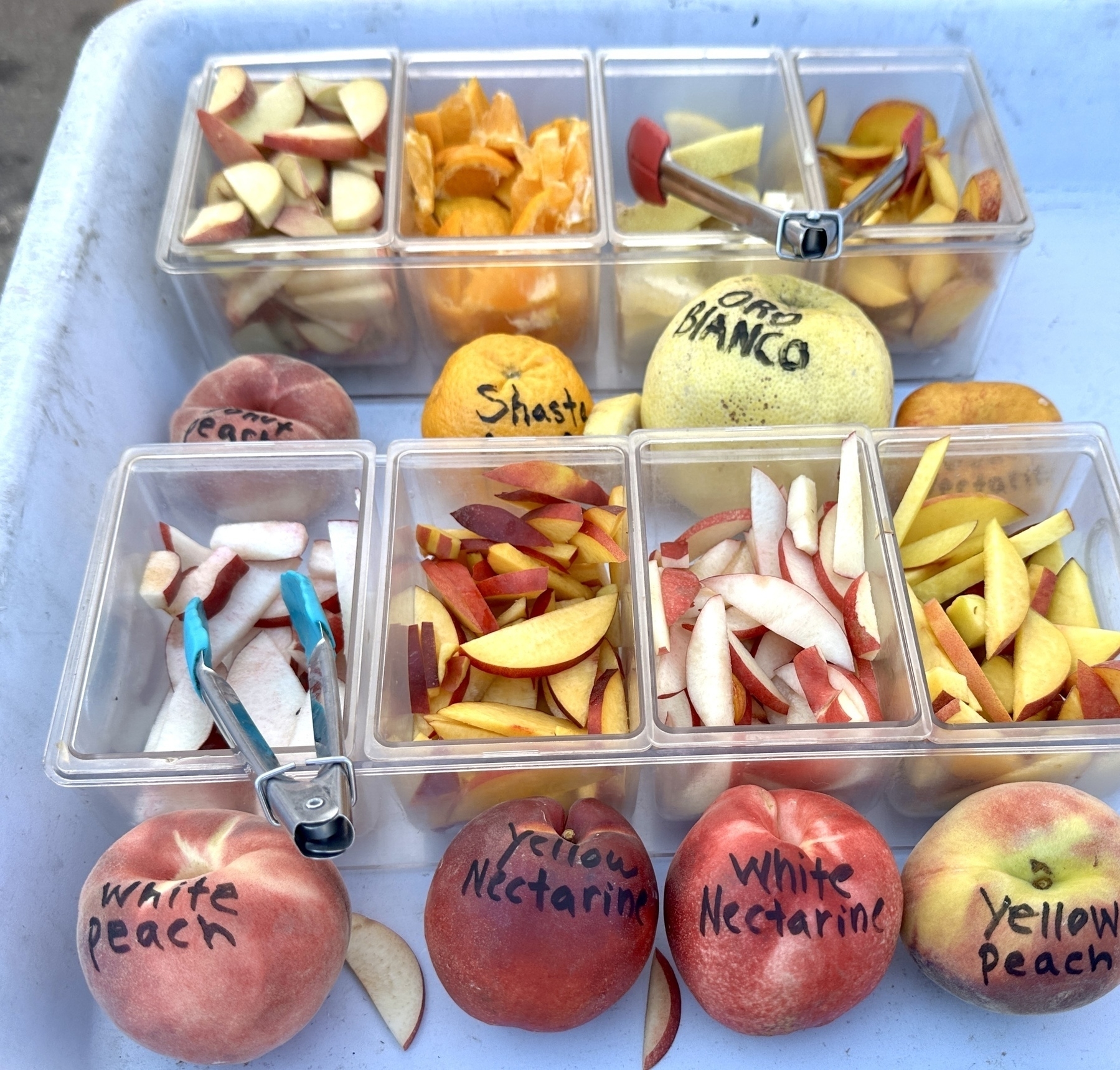
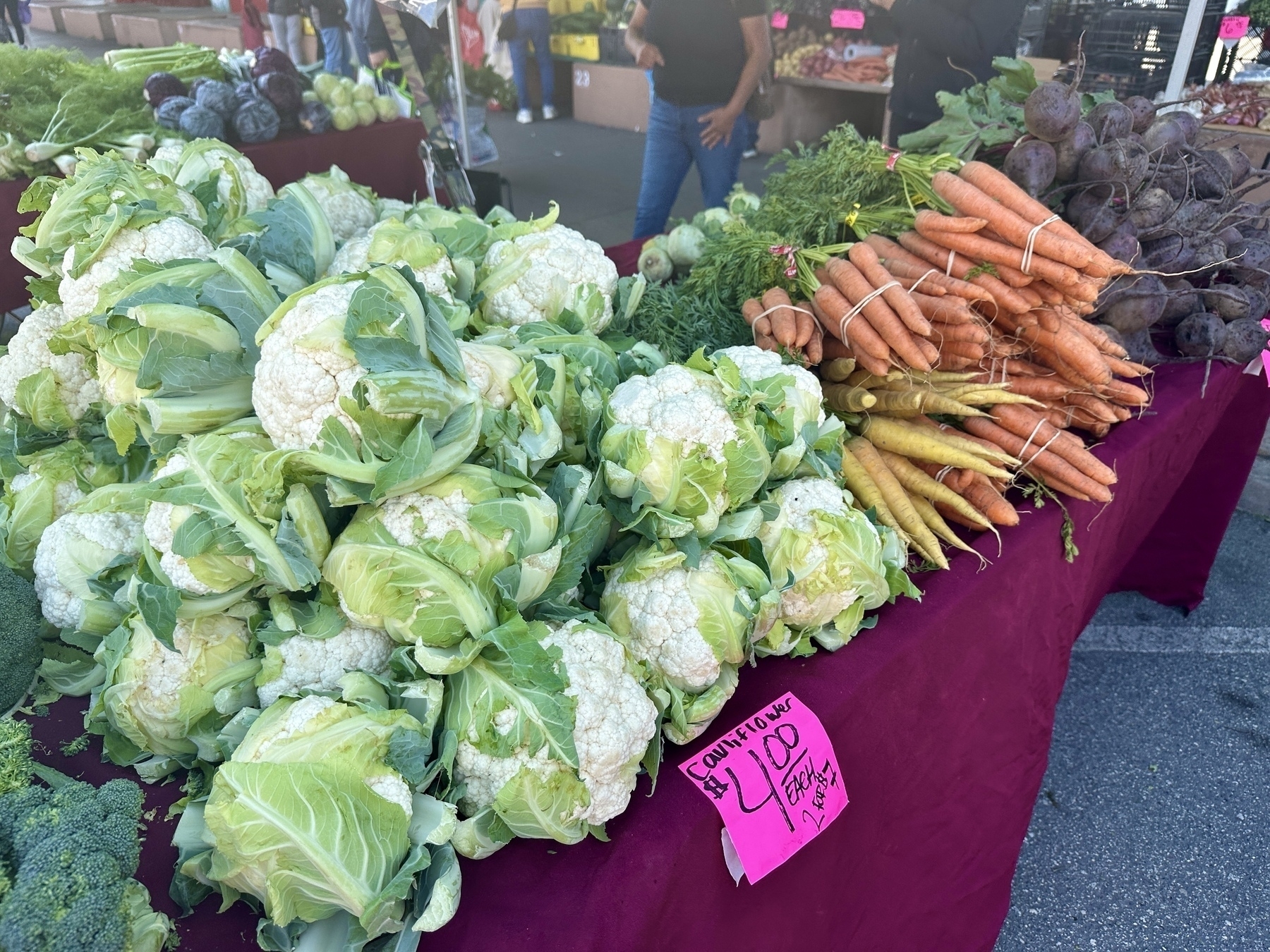
It takes place every Saturday morning, year-round, and is usually still selling until around 1pm. Late-comers have slimmer pickings, but can often get fantastic discounts as farmers try to unload the remainder of their stock that would otherwise have to be thrown into the trash or trucked back to the farm.
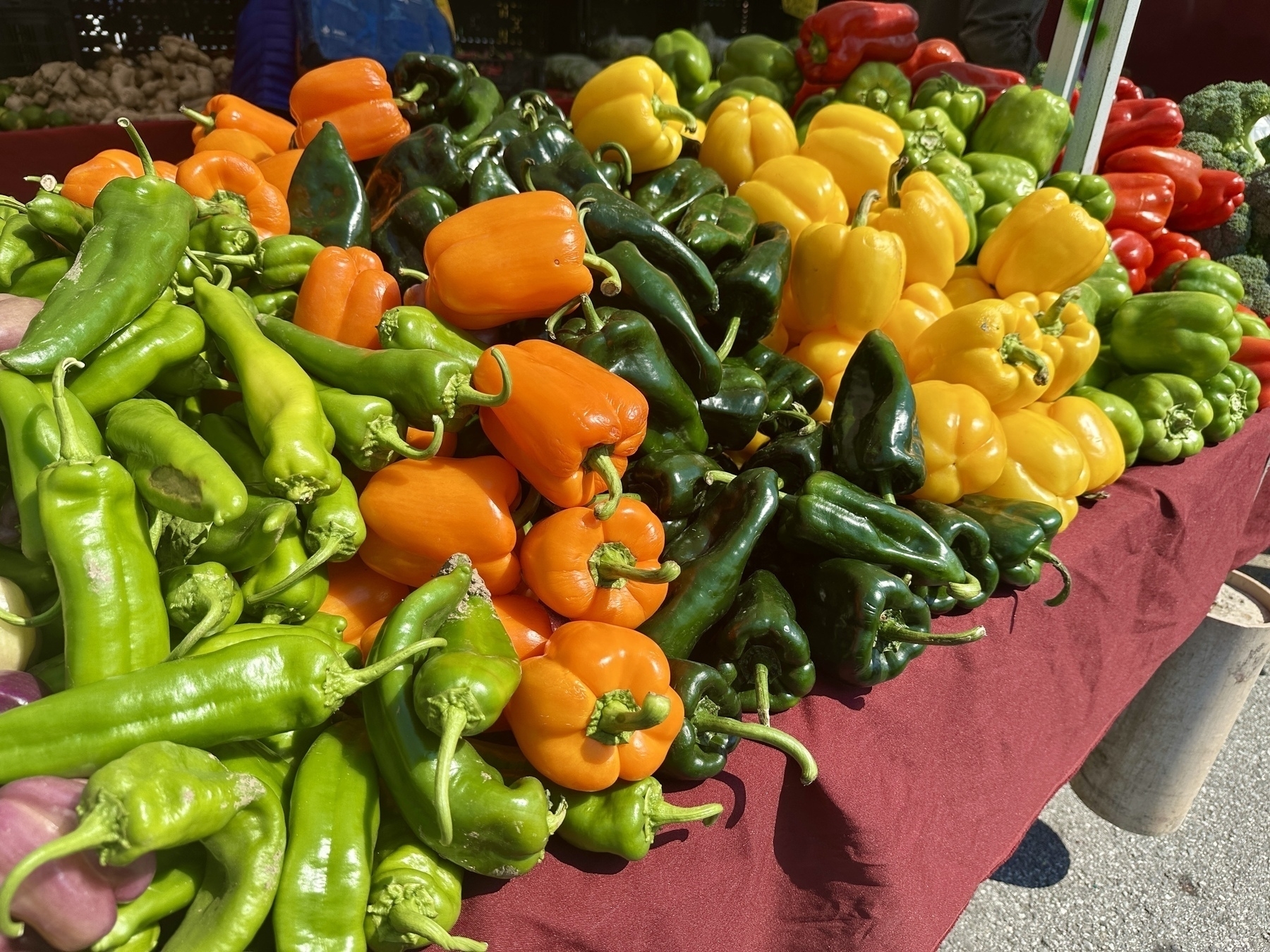
In addition to fruits and vegetables, you can get fresh bread, eggs, mushrooms (the generous bag of “ugly” Lion’s Mane for $20 is a steal!), orchids and other plants, cut flowers, fresh juice, honey, and olive oil. It’s worth a trip, even if you don’t live nearby, although DO NOT drive unless you plan to park several blocks away and walk over. The parking lot and intersection right in front of the market are a disaster if you’re in a car. The 23, 24, 8, 44, and 67 bus routes all stop nearby, and there is plenty of bike parking near the bathroom building.
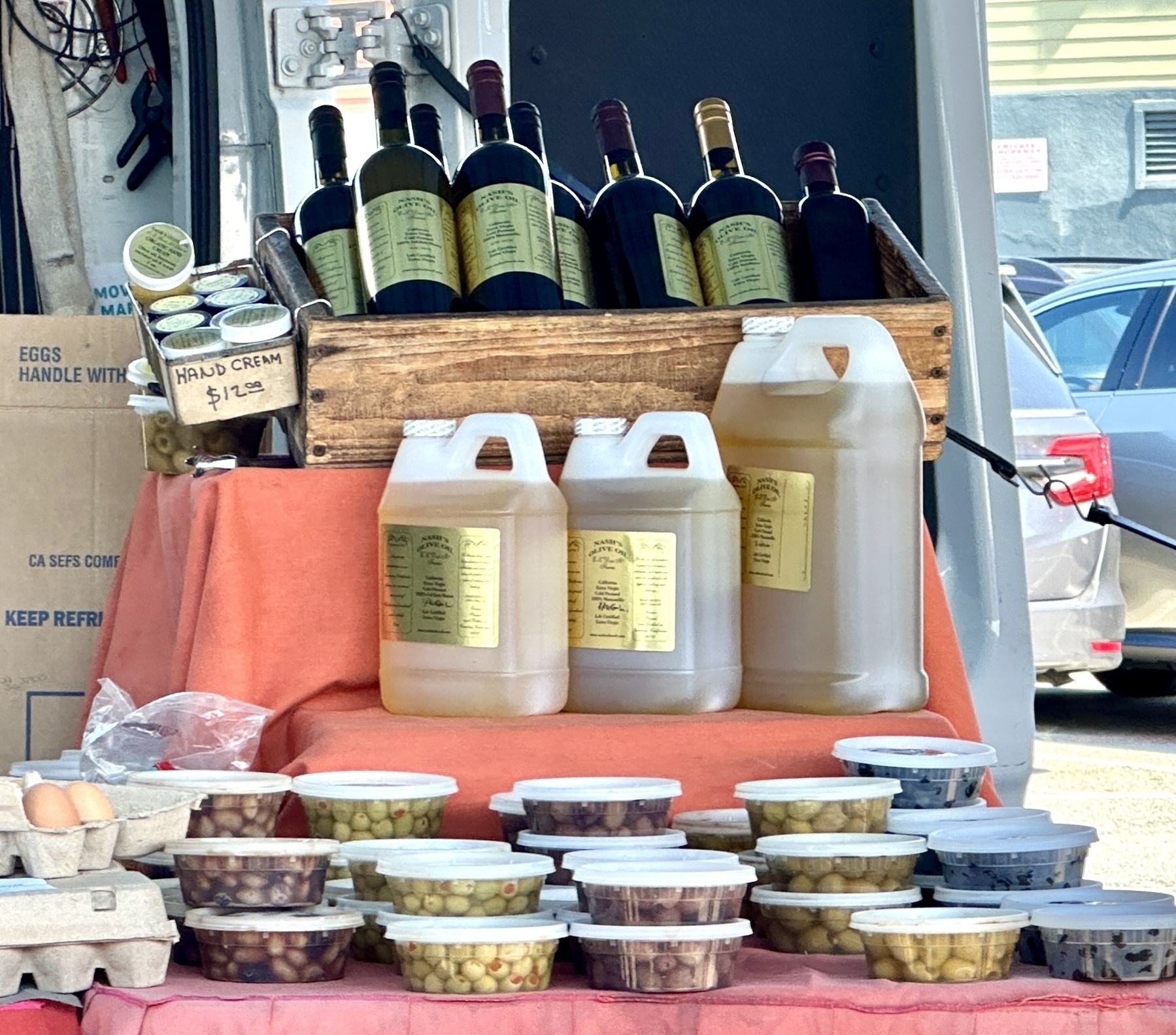
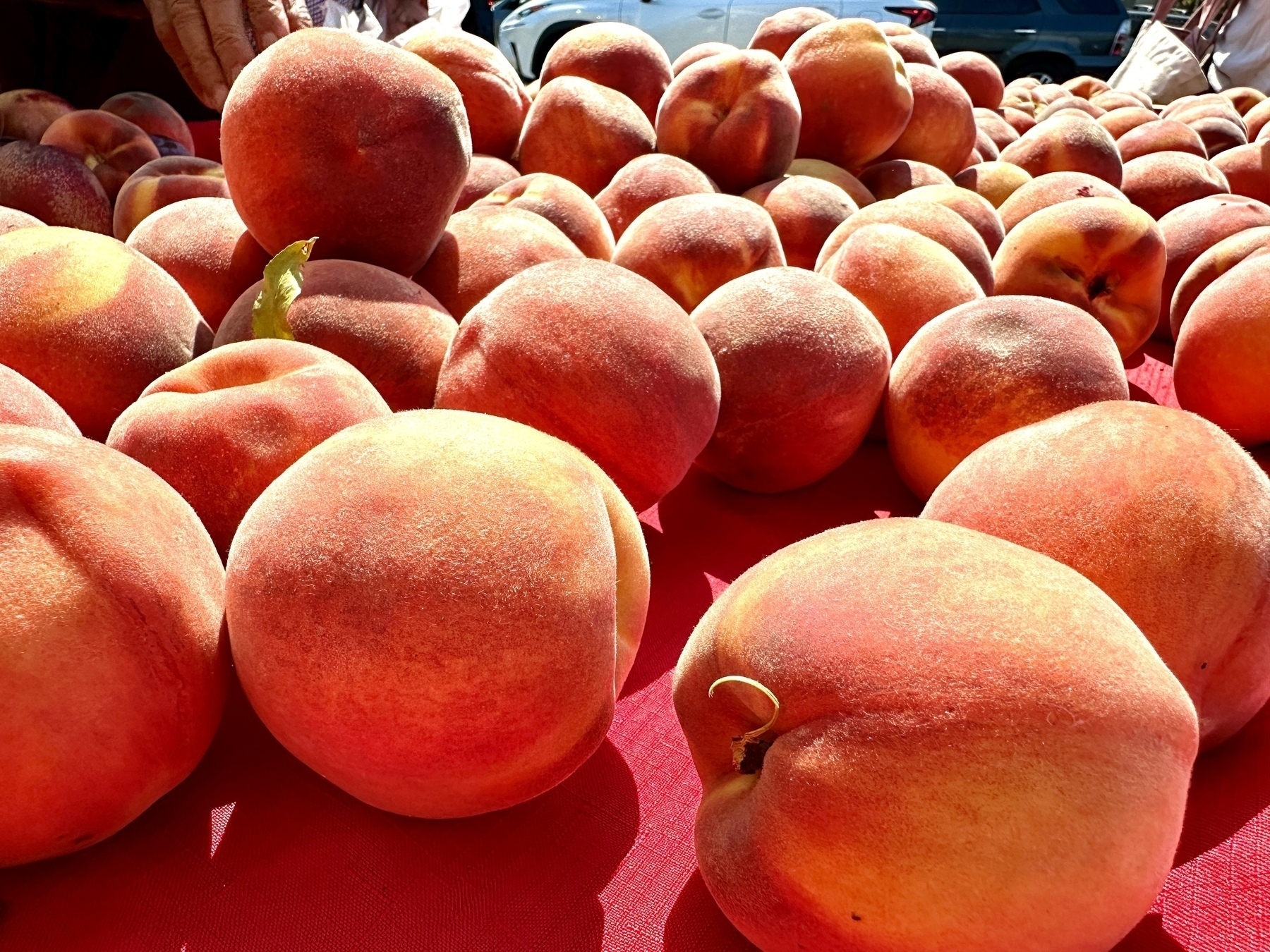

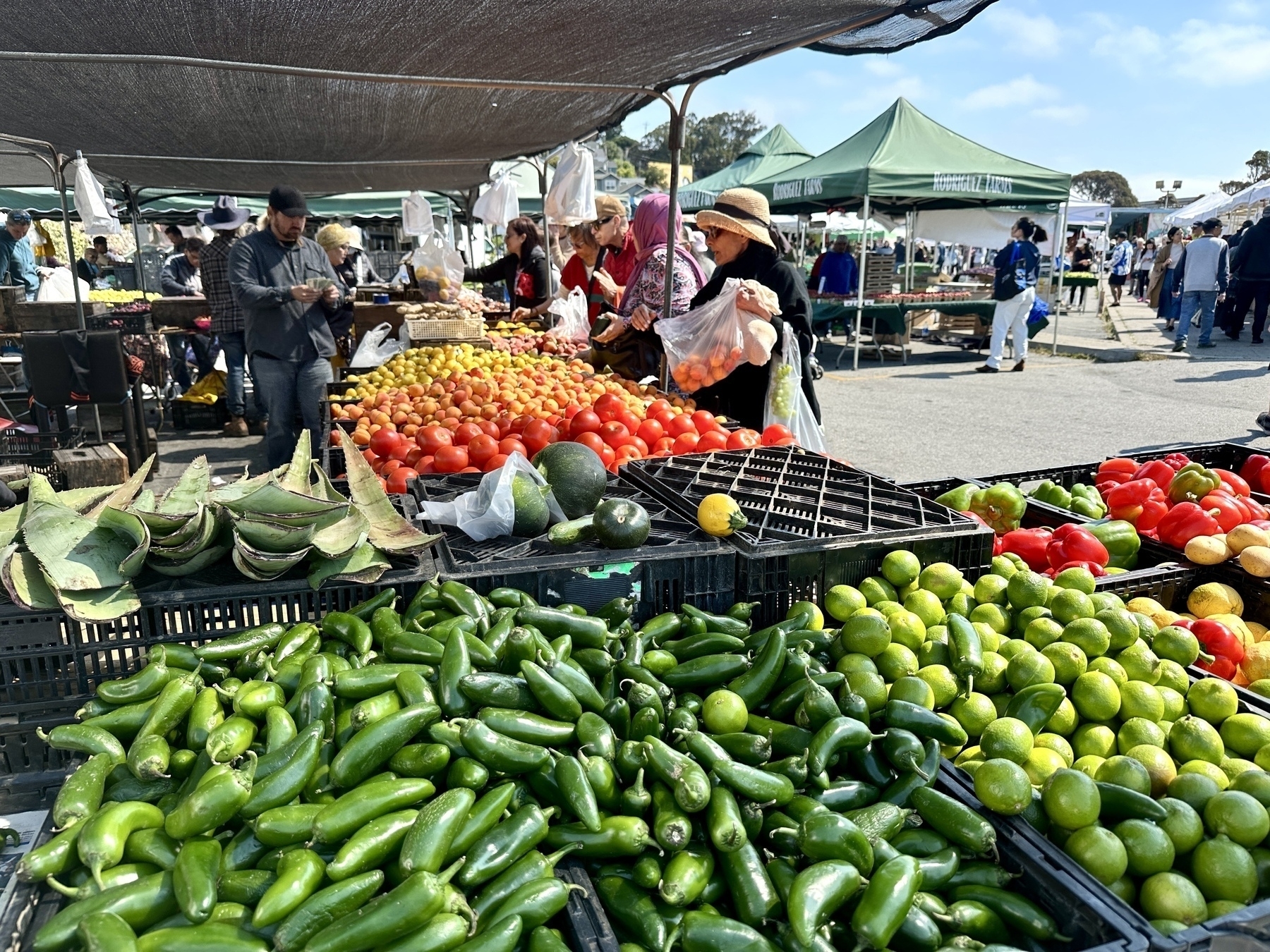
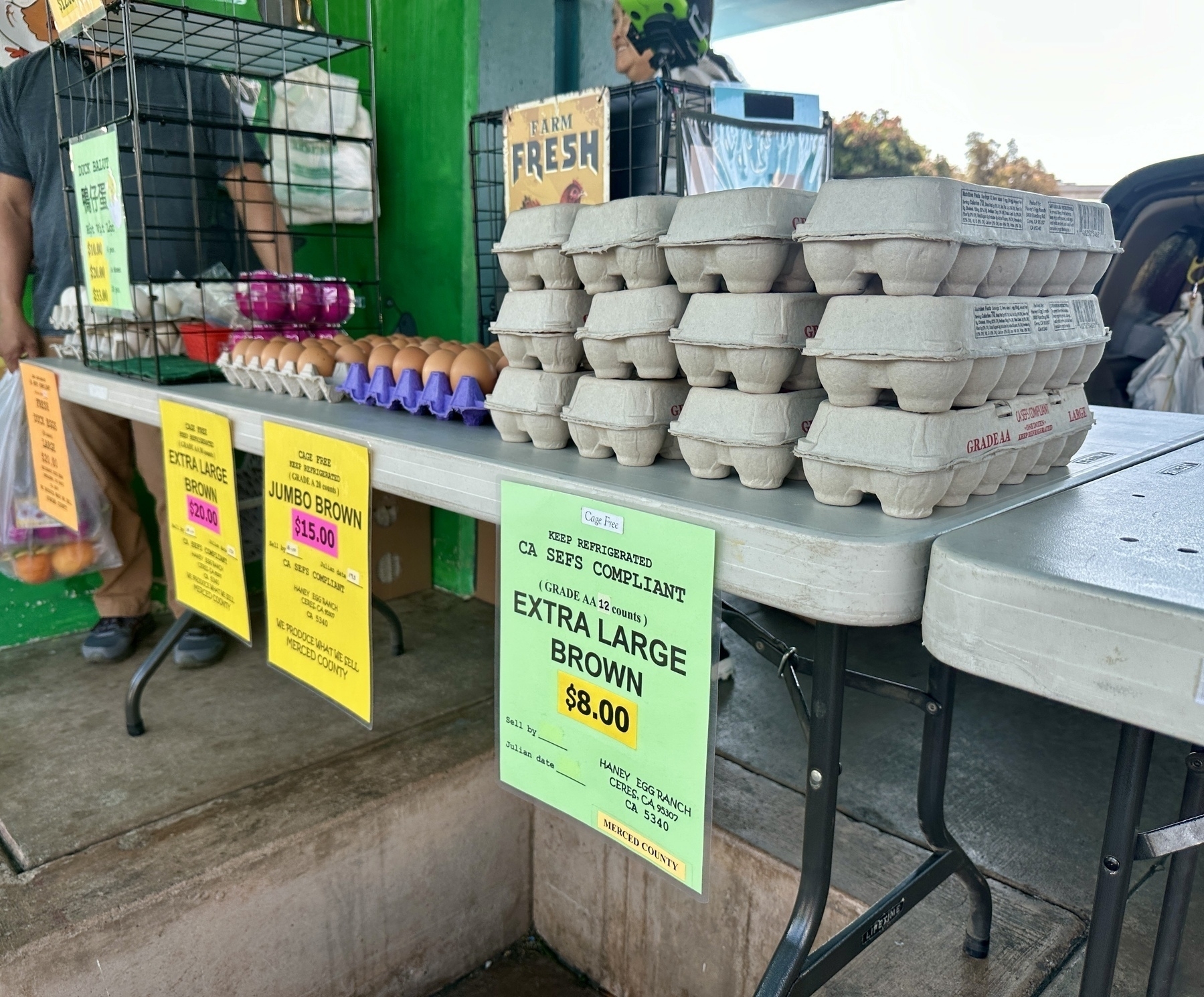
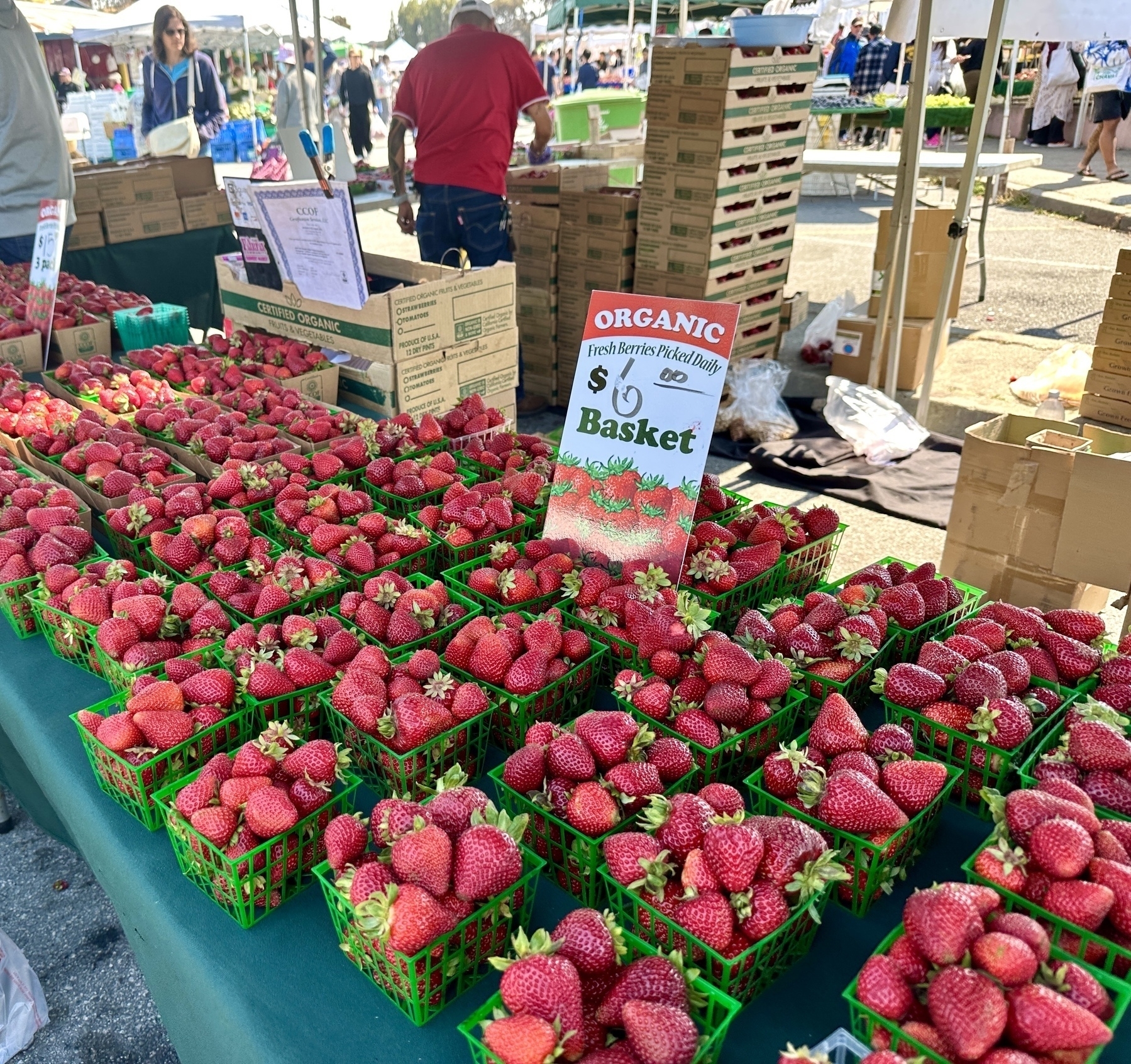
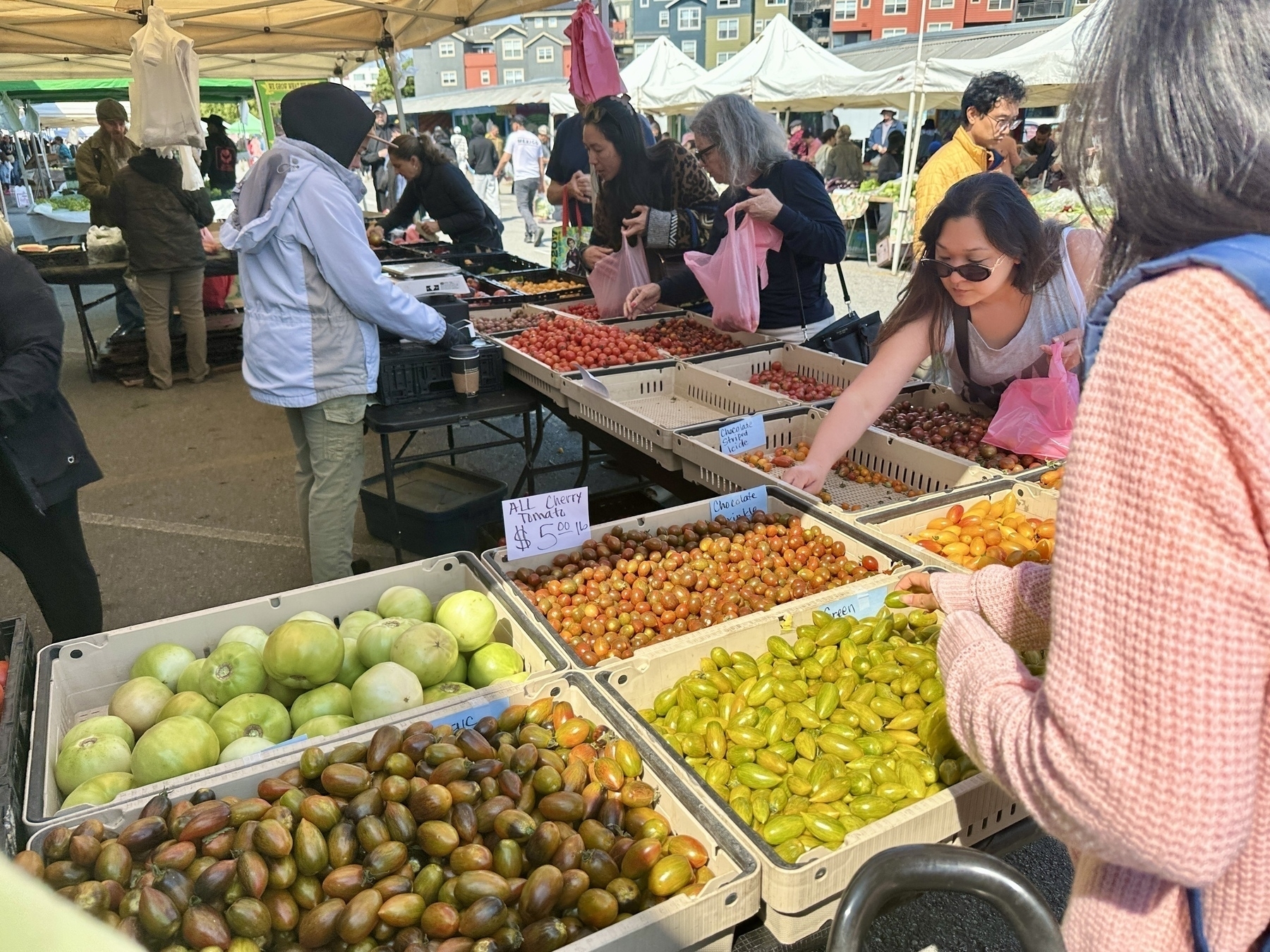
Success, Finally! Vegan Ice Cream Experiment #5
I finally did it! I successfully made a good vegan ice cream base!
As I’ve been experimenting over the course of this project, a lot of the information I found online and in books seemed to orient around the goal of making a vegan dessert that tasted good – often, a somewhat creamier version of a sorbet. But this was never my goal. I wanted to see if I could make a vegan ice cream that matched my standards for my traditional ice cream recipes: Not just enjoyable to eat, but scoopable right out of the container, with a creamy mouthfeel, and a bit of a “bite” (i.e., doesn’t just melt in your mouth immediately). I blended the following ingredients and heated them to almost-boiling on the stovetop:
- 340g of Oatly Barista style oat milk (available at Rainbow Grocery)
- 460g Califia Farms Heavy Whip (available at Rainbow Grocery)
- 12g soy lecithin (purchased online)
- 60g NOW brand coconut milk powder (purchased online)
- 200g sugar
- 50g corn syrup
- 50g dehydrated glucose DE42 (purchased online)
- 25g inulin (purchased online)
- ¼ tsp. Locust bean gum (purchased online)
- ⅛ tsp. Guar gum (purchased online)
- Pinch of salt
- 1 tsp. Ube extract (Butterfly brand) (purchased online)
It turned out great! I’m not sure how often I’ll make this, but I’m glad to have the option. It was a fun challenge.
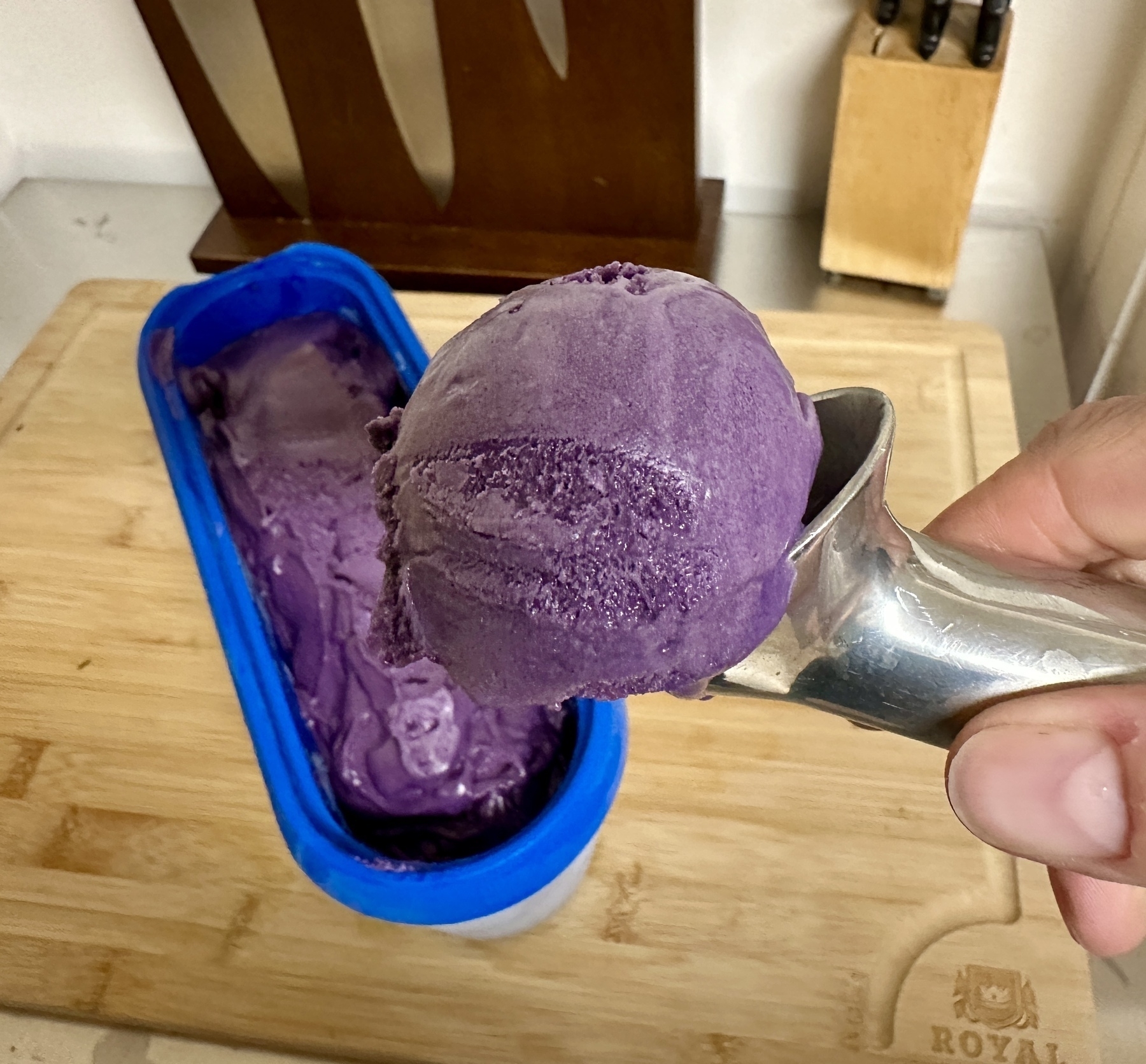
I Got Invisalign and I’m Going to Tell You About It
I had braces when I was a kid, but nearly 40 years later, my teeth have moved enough that they’re causing problems, so I started doing Invisalign to get them back into place (and will eventually have a retainer to KEEP them in place). My course will be short — only about 3 months — but people have asked a lot of questions about them, so I figured I’d share my experience.
-
You really do need to wear them 20-22 hours a day. You only take them off to eat.
-
While wearing them, you’re only supposed to drink water. That means no coffee, tea, etc. unless you take them out.
-
EVERY time you put them back in, you’re supposed to brush and floss your teeth. That means, for example, if you go out to dinner with friends, you’re bringing a toothbrush and floss and ducking into the bathroom after you finish eating, like a weirdo.
-
If you remove your aligners, say, for a special event, you will still have the 10-12 clear “nubs” that are glued to the outside of your teeth for the duration of the treatment (these are what allow the aligners to grip the teeth and move them).
-
Lipstick sticks to the aligners much more than to natural teeth. I have gotten into the habit of compulsively running my tongue along the front of my teeth to clean them.
-
Starting a new tray is uncomfortable. It’s the same feeling you used to get when you’d go to the orthodontist to get your braces tightened. Your teeth just ache all day.
-
Hopefully you end up with straighter teeth that last longer than they might have if they were misaligned!
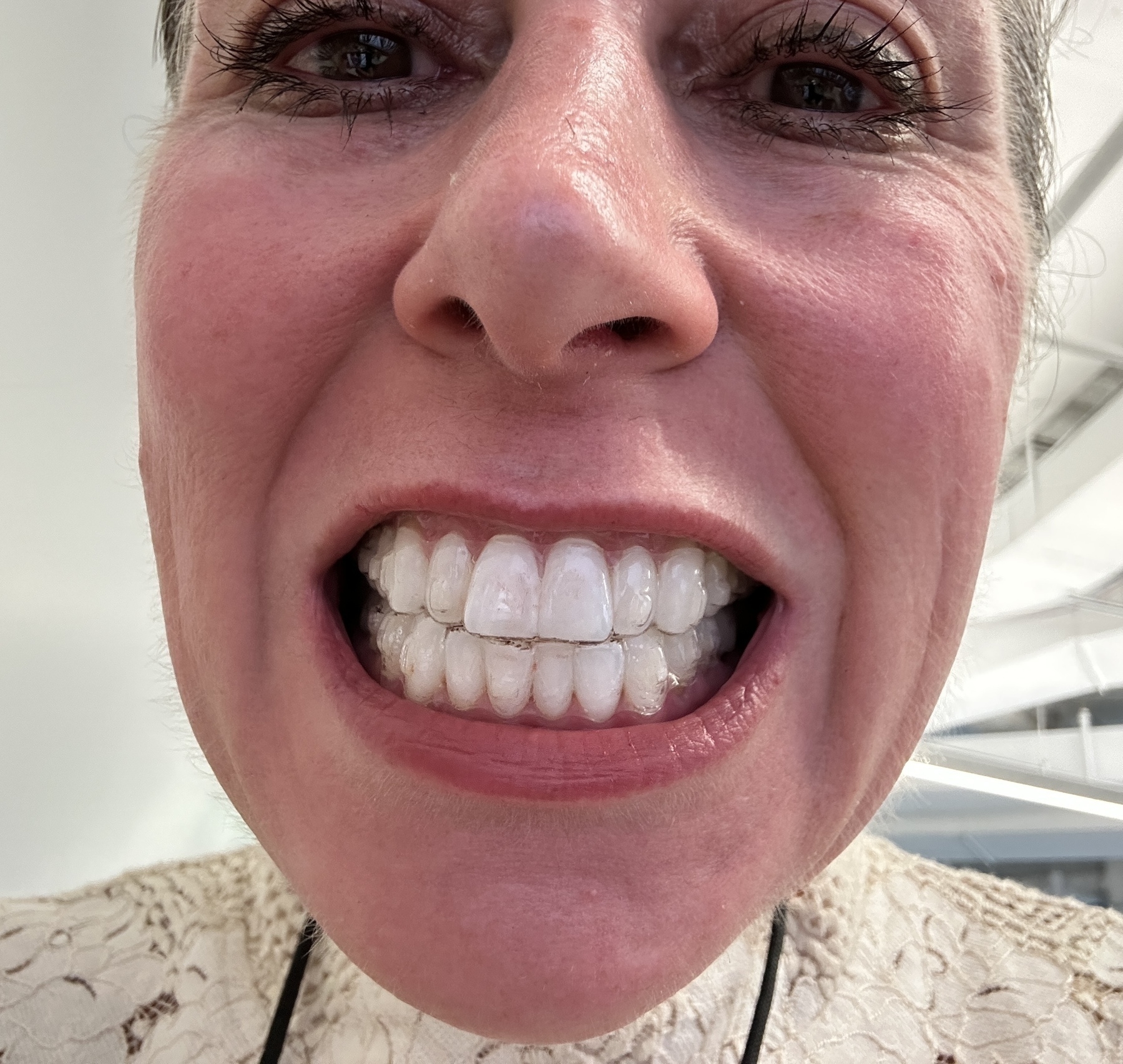
Vegetables Ranked From Best to Worst
- Avocado
- Peas (fresh)
- Beets (fresh, roasted)
- Asparagus
- Celery root
- Tomatoes
- Corn
- Sweet potatoes
- Red/yellow/orange bell peppers
- Lion’s Mane mushrooms
- Butter lettuce
- Green onions
- Garlic
- Leeks
- Shallots
- Artichokes
- Carrots
- Oyster mushrooms
- Kale
- Celery
- Cabbage
- Brussels sprouts (roasted)
- Onions
- Potatoes
- Turnips/parsnips (roasted)
- Green bell peppers
- Arugula
- Portobello mushrooms
- Cauliflower
- Green beans
- Button mushrooms
- Bok choy
- Radicchio
- Okra
- Broccoli
- Bean sprouts
- Fennel
- Butternut squash
- Chard
- Frisée
- Alfalfa sprouts
- Jicama
- Radishes
- Iceberg lettuce
- Zucchini
Things to do in San Francisco
After living in the Bay Area for 33 years, I’ve entertained a lot of guests, so I thought it would be helpful to make a list of ideas for out-of-towners. I’ll try and update this with new ideas when I get them.
- Rent a bike and ride over the Golden Gate Bridge to Sausalito, have lunch, take the ferry back
- Visit the Clare-Lilienthal House
- Go to the SFMOMA, eat lunch in Yerba Buena Gardens
- Visit the Legion of Honor
- Rent a bike and ride through Golden Gate Park from east to west, then south through Sunset Dunes Park
- Walk south down Valencia in the Mission and look at the murals in Clarion Alley, turn east and walk doen 24th Street, with detours along Balmy and Orange Alleys
- Walk along the Land’s End Trail
- Visit the Cable Car Museum
- Have lunch at The Ramp in Dogpatch, then walk through Crane Cove and Bayfront Parks
- Go to Alcatraz, or if tickets aren’t available, just take the ferry somewhere to enjoy the boat ride
- Walk up the Filbert Steps to Coit Tower and then check out the WPA murals inside
- Go roller skating at the Church of 8 Wheels
- Visit the historic ships at Hyde Street Pier Walk along the Embarcadero and stop at the Ferry Building for lunch
- Go to the Conservatory of Flowers
- Check out the sea lions at Pier 39
- California Academy of Sciences, especially if you can go on one of the adults-only nights. Visit the Japanese Tea Garden at the same time
- Combine the Japanese Tea Garden with the SF Botanical Gardens
- Tour Filoli Gardens (south down 280)
My June 2025 Trip to NYC
This was a work trip, as I was here for Chime’s IPO, but I decided to stay through the weekend so I could have Friday and Saturday free to be a tourist. Two full days obviously isn’t enough time for a visit to a huge city like NYC, but I was able to hit some highlights. I hadn’t been to NYC since I was a kid.
I stayed in midtown, right off Times Square. My hotel had a great view.
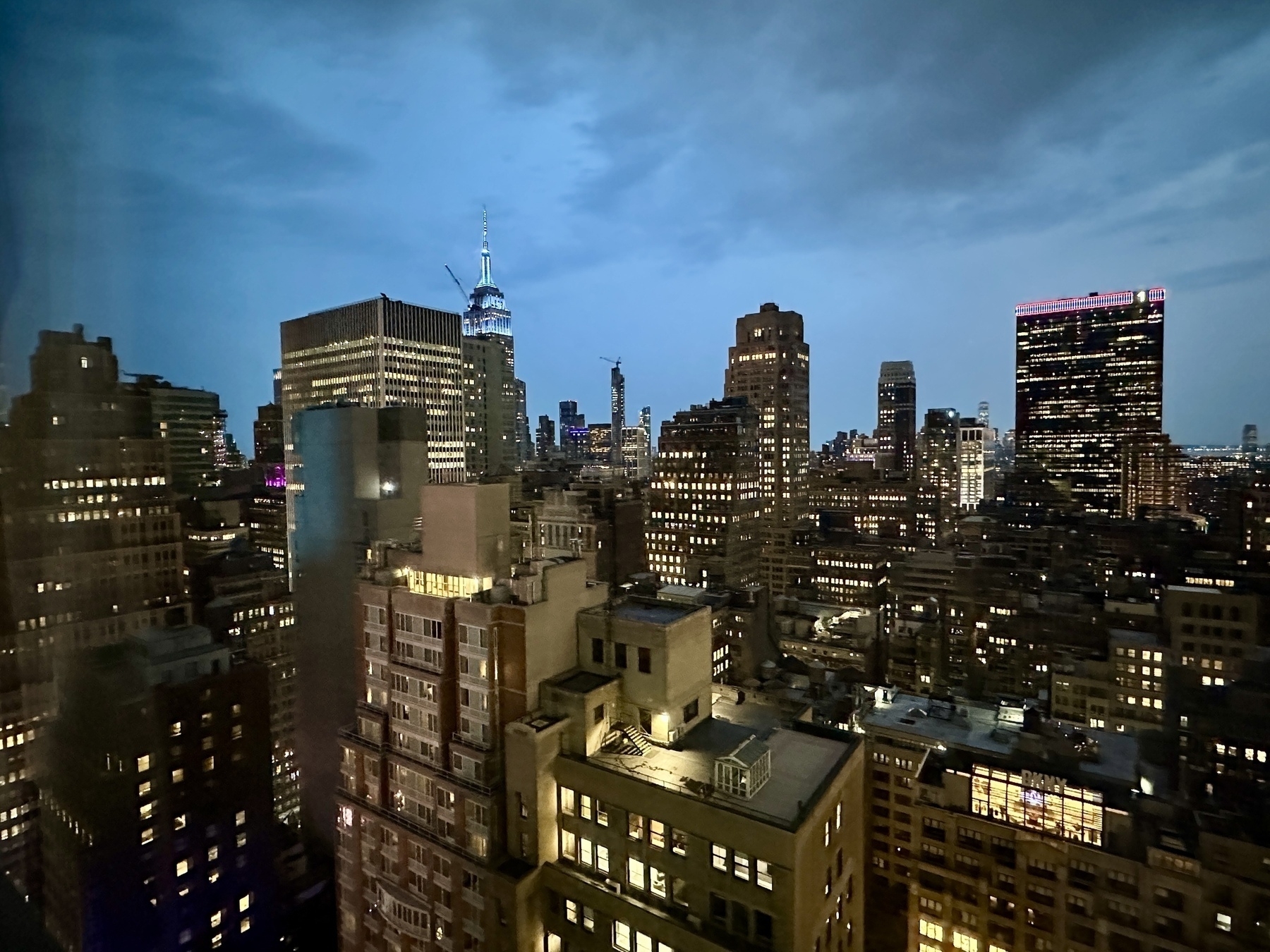
Times Square was crazy overwhelming. The digital billboards looked much more real than I expected.
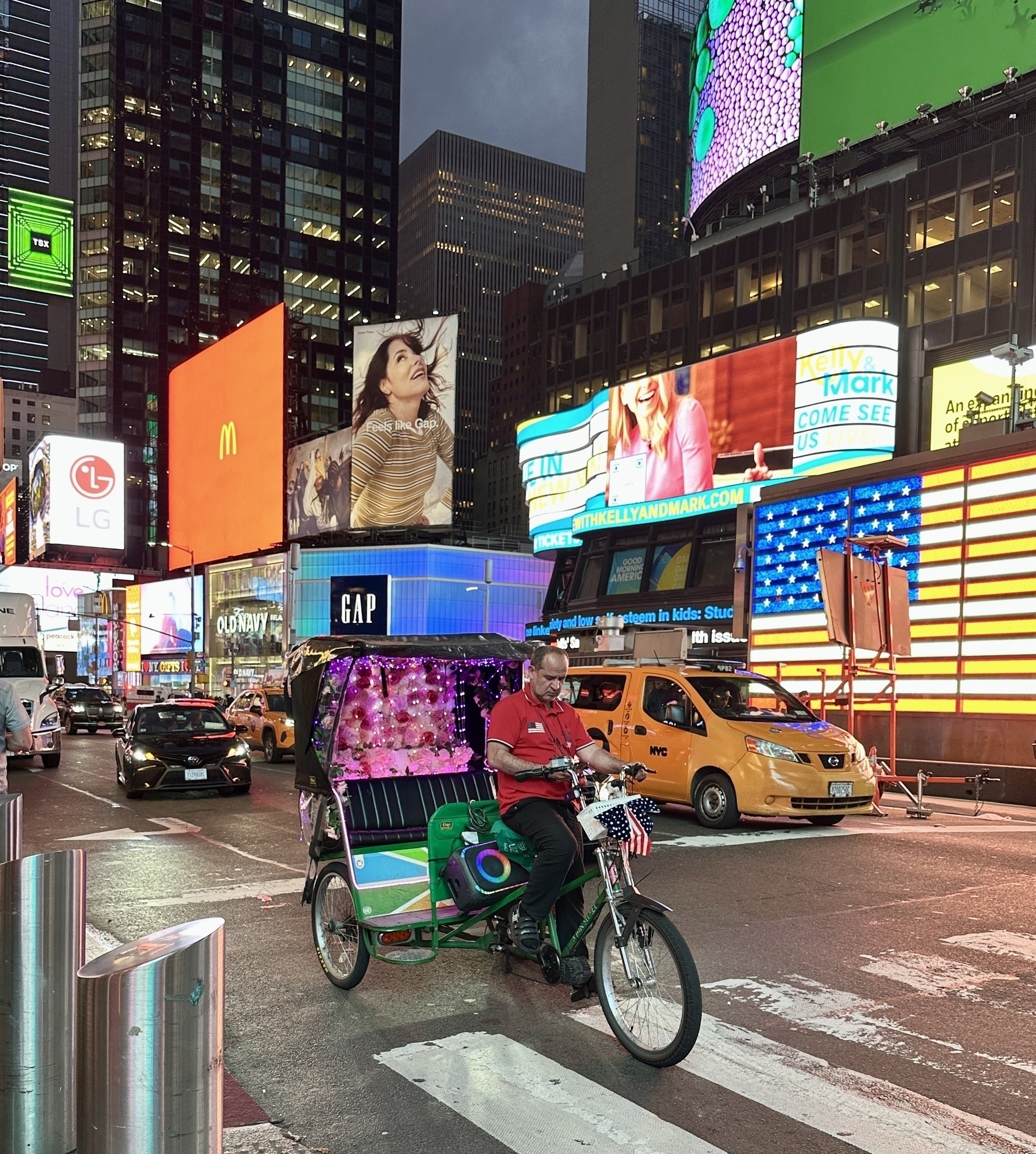
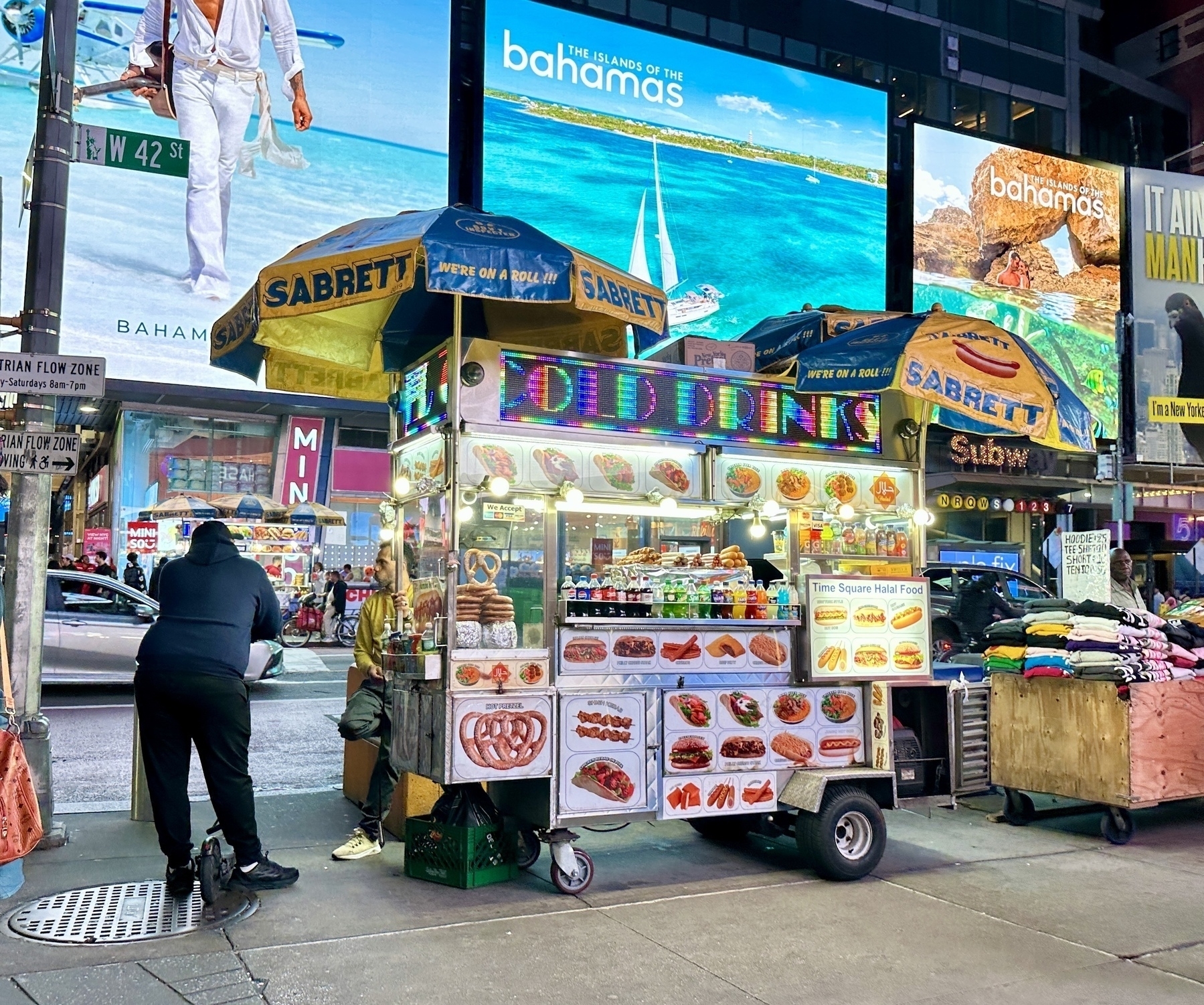
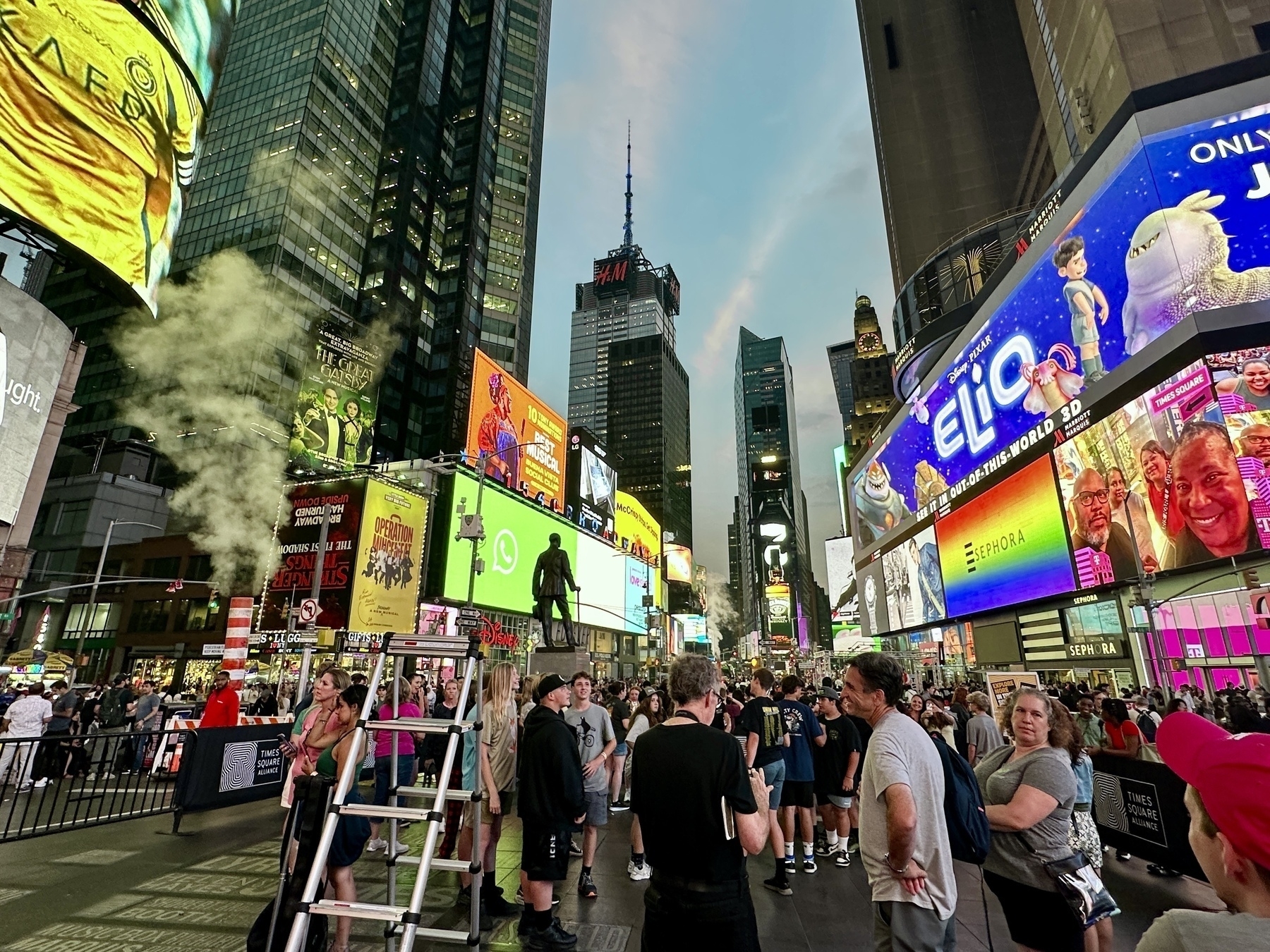
On Wednesday, I worked out of Chime’s NYC office downtown, and took a walk at lunchtime to see the “Charging Bull” statue and the Statue of Liberty from Battery Park.


The rest of Wednesday and Thursday were taken up by IPO stuff, although I did become a pro at using the subway (once I found out that every train/direction had a separate station entrance, even if they go through the same station!).
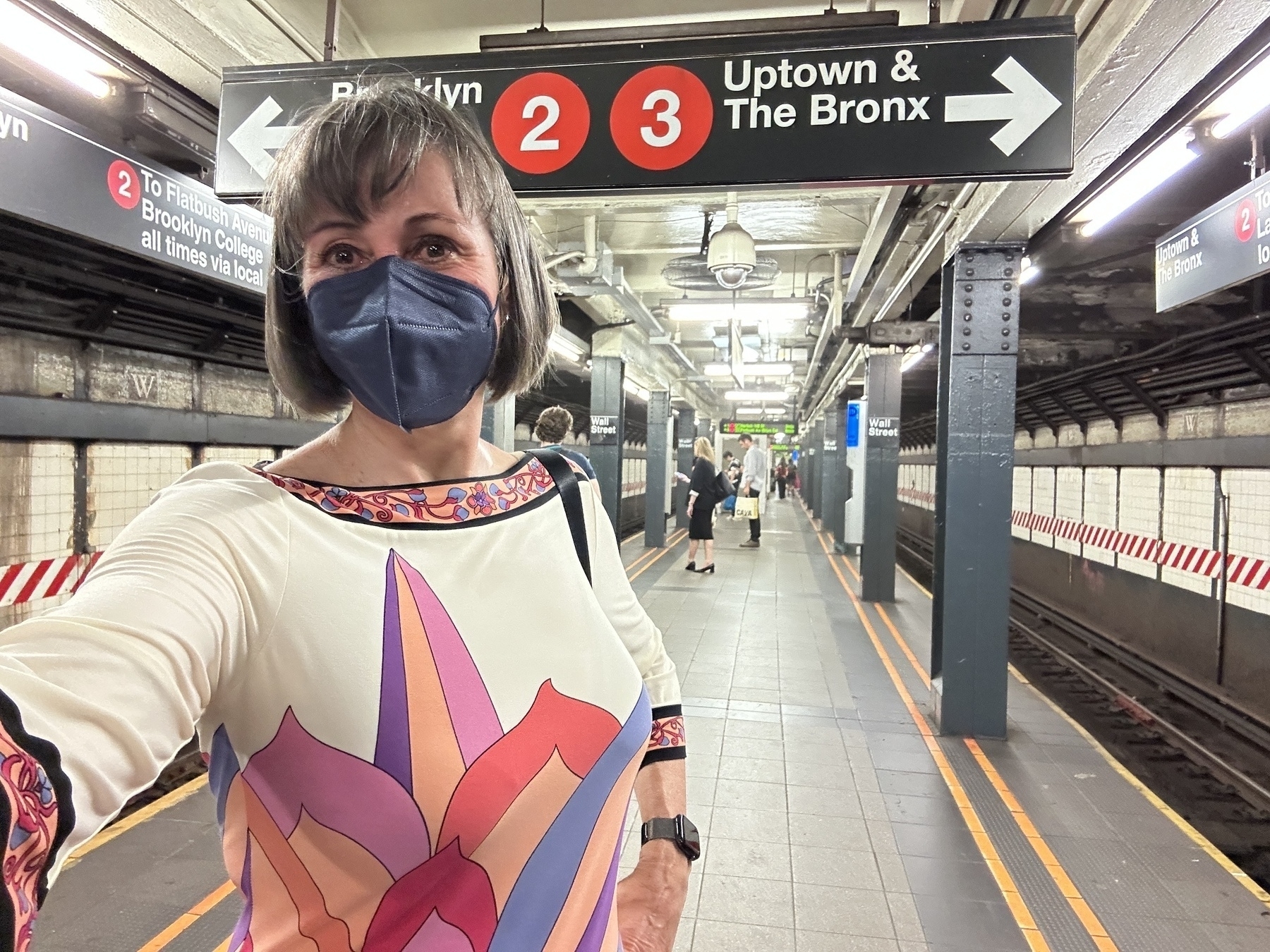
Then Friday and Saturday I was free. Friday I walked up 5th Ave. to the Metropolitan Museum of Art and spent most of the day there. Along the way, I stopped to get a famous NYC toasted bagel with cream cheese. It was tasty, but not really different from other toasted bagels with cream cheese that I’ve gotten in SF?
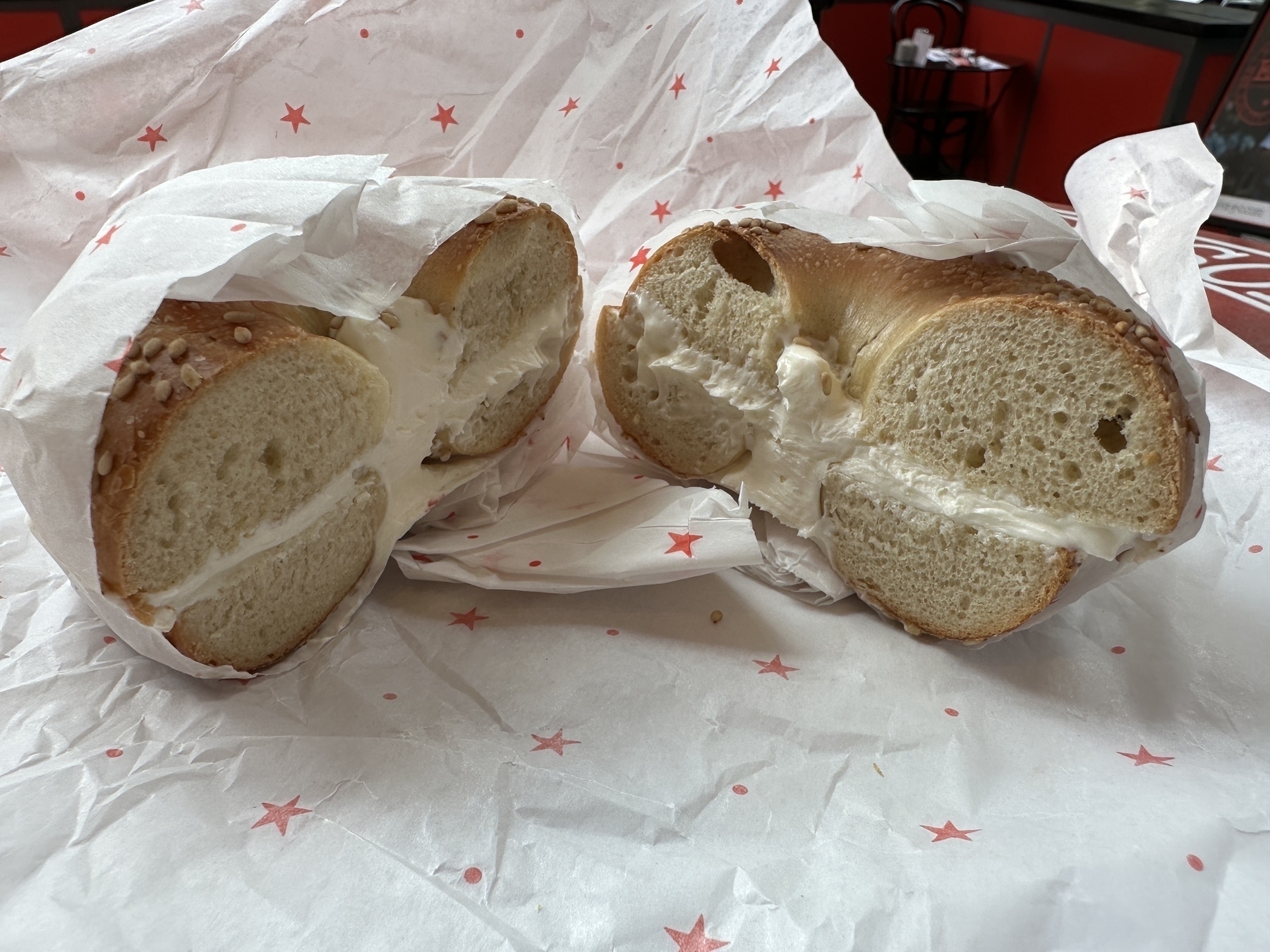
The Met was great to see, but very overwhelming, largely due to the layout. The rooms are basically laid out as boxes on a grid, but many connecting openings between rooms were arbitrarily closed or cordoned-off, so it was tough to chart a predictable course by which you would see all the rooms. I think I hit most of them, though. I kept getting lost and having to consult my map. I definitely saw their 5 Vermeers!
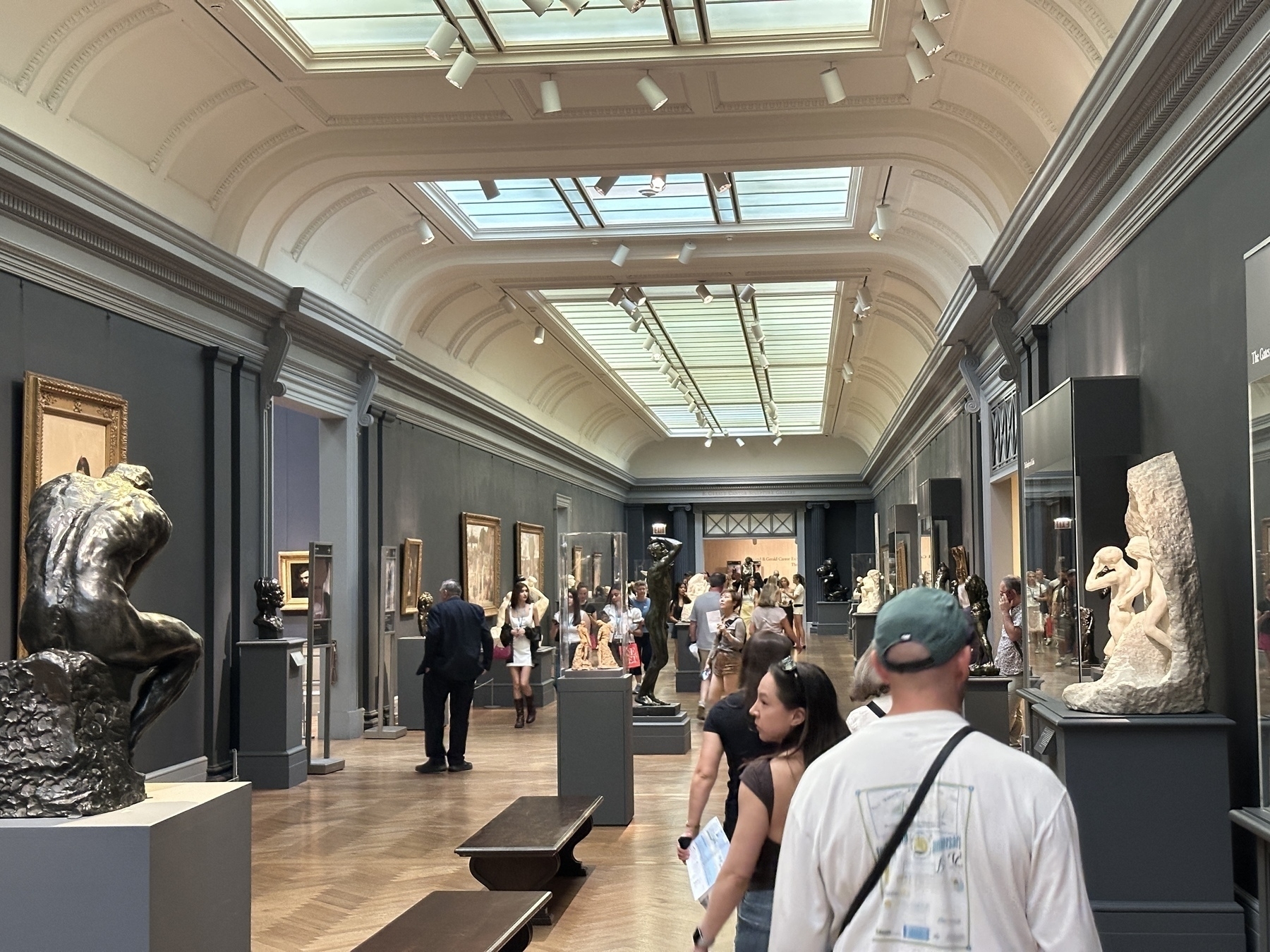
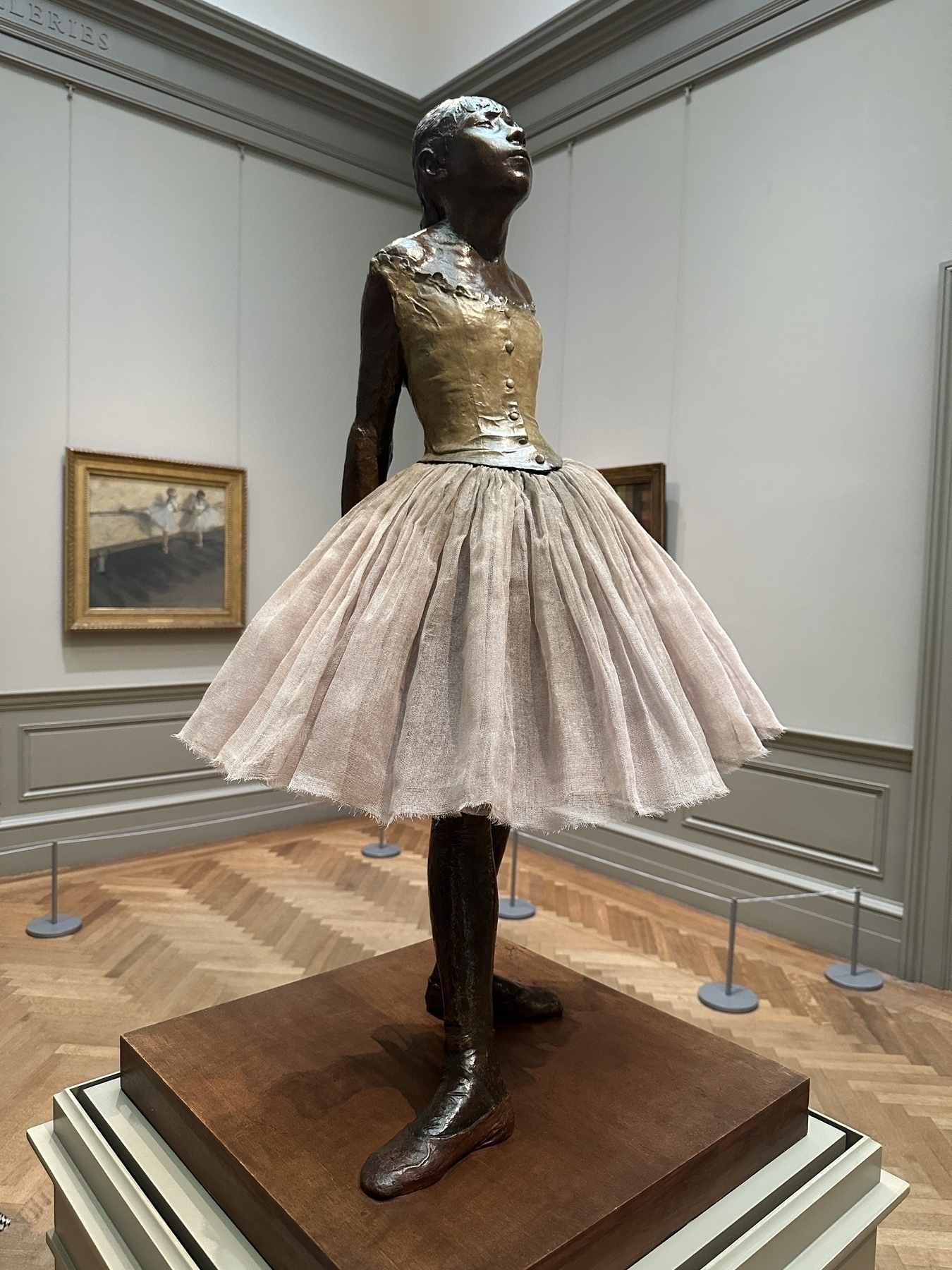




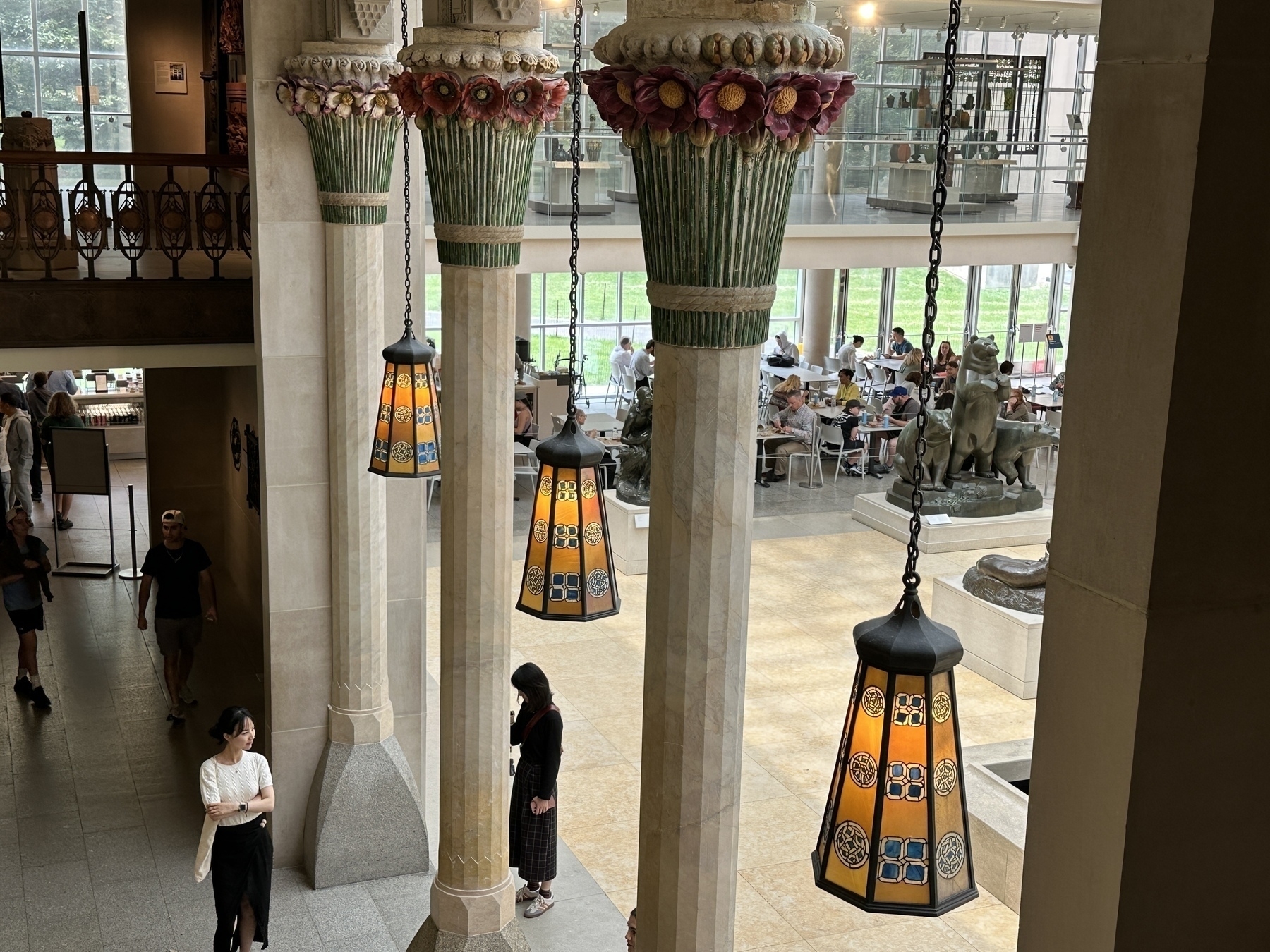
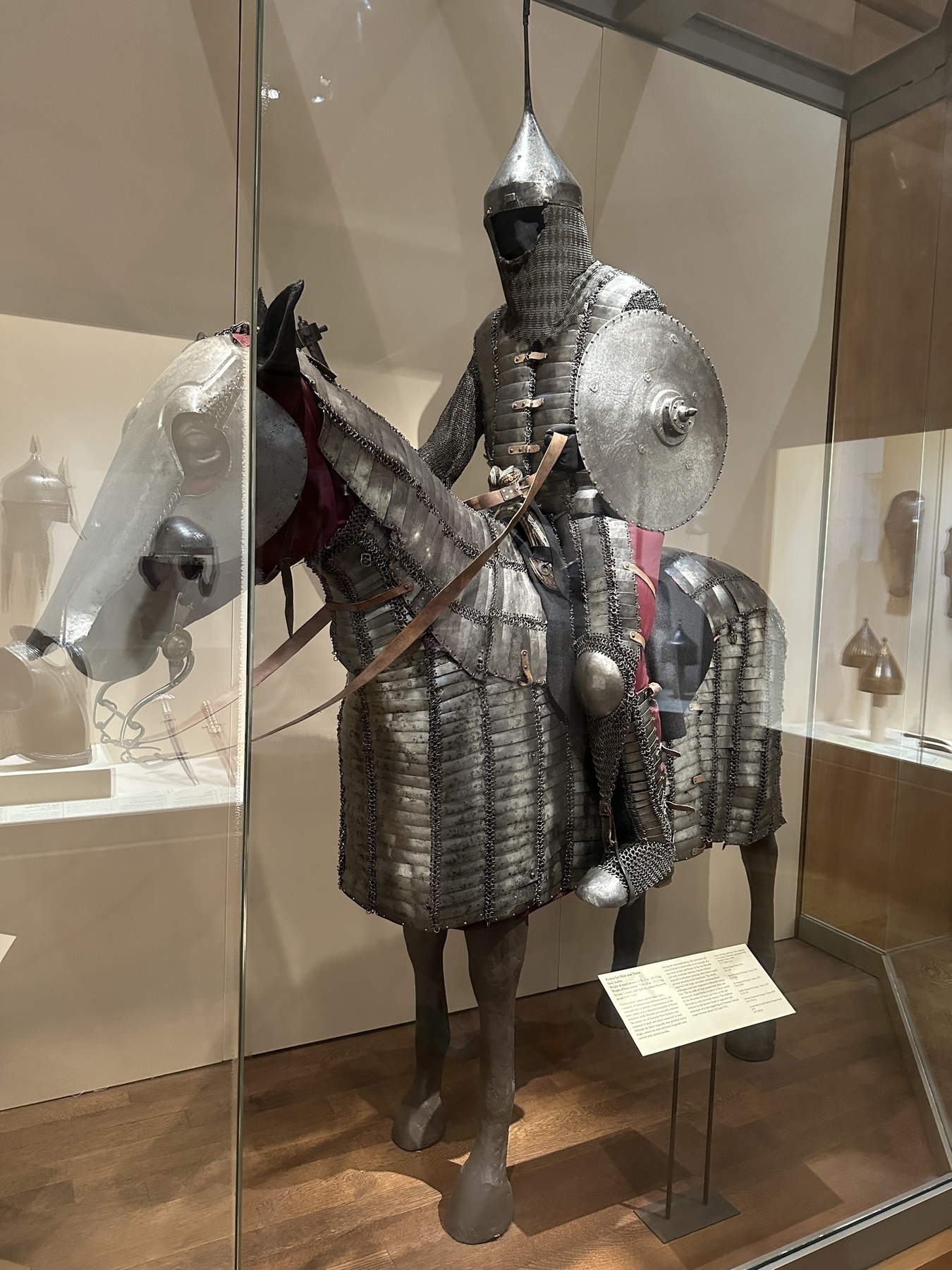
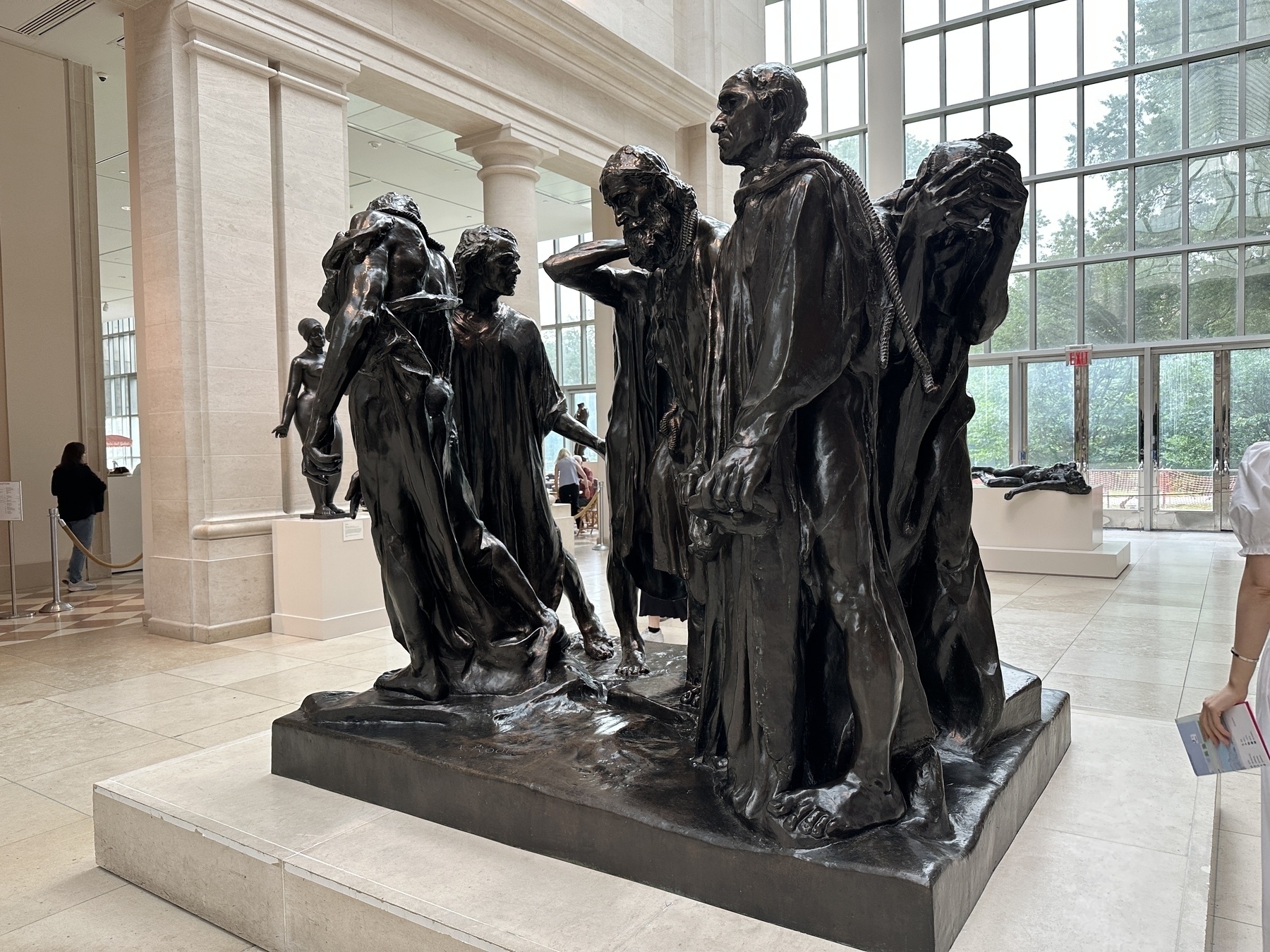

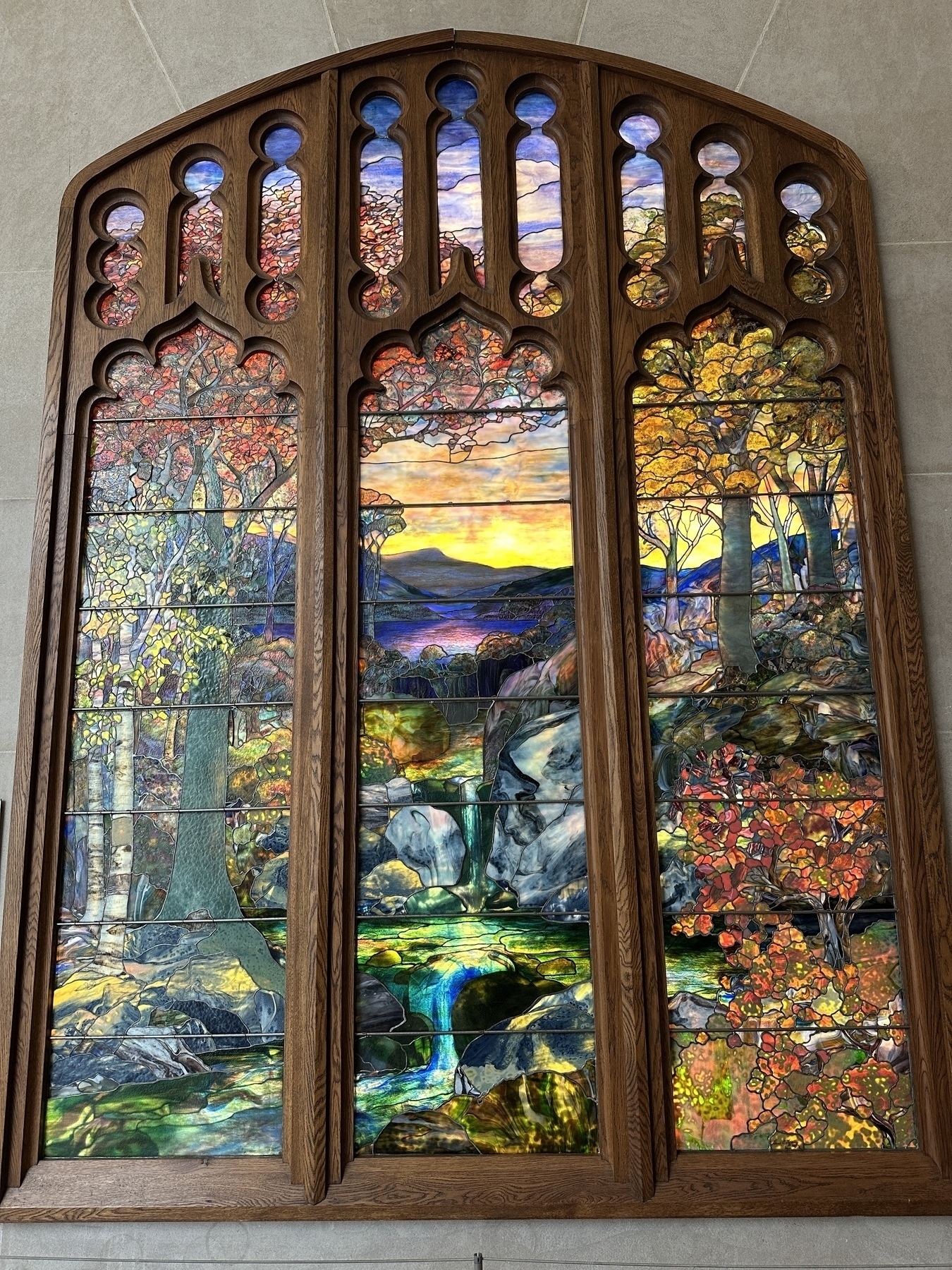
In the evening, I splurged on very good seats to see “Gypsy” at the gorgeous Majestic Theater. My co-worker, who is a theater aficionado, had seen it our first night in town and said it was one of her top 3 theater experiences ever. It was fantastic! I had no idea who Audra McDonald is, so I got to be surprised by how amazing her performance was.
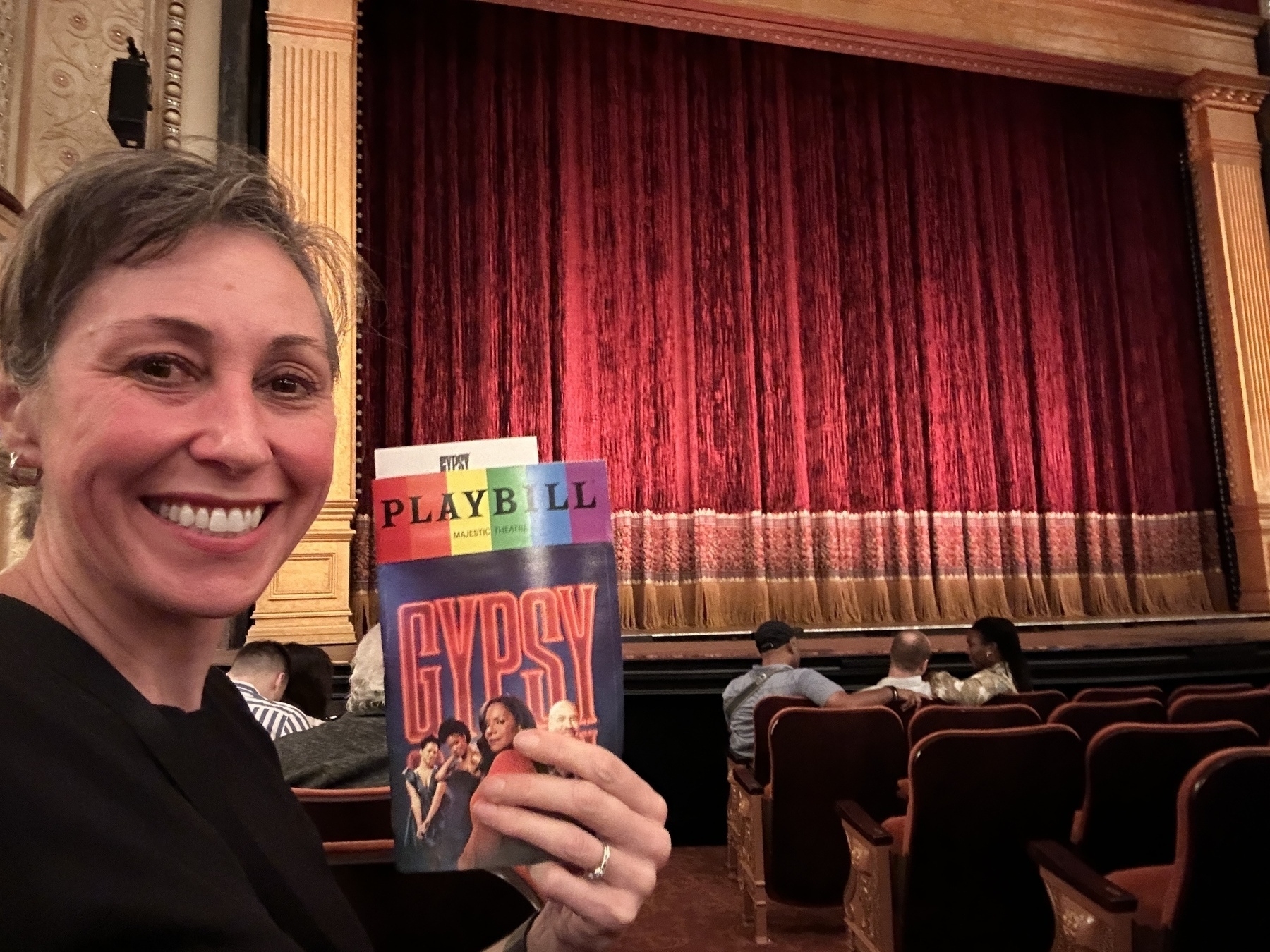
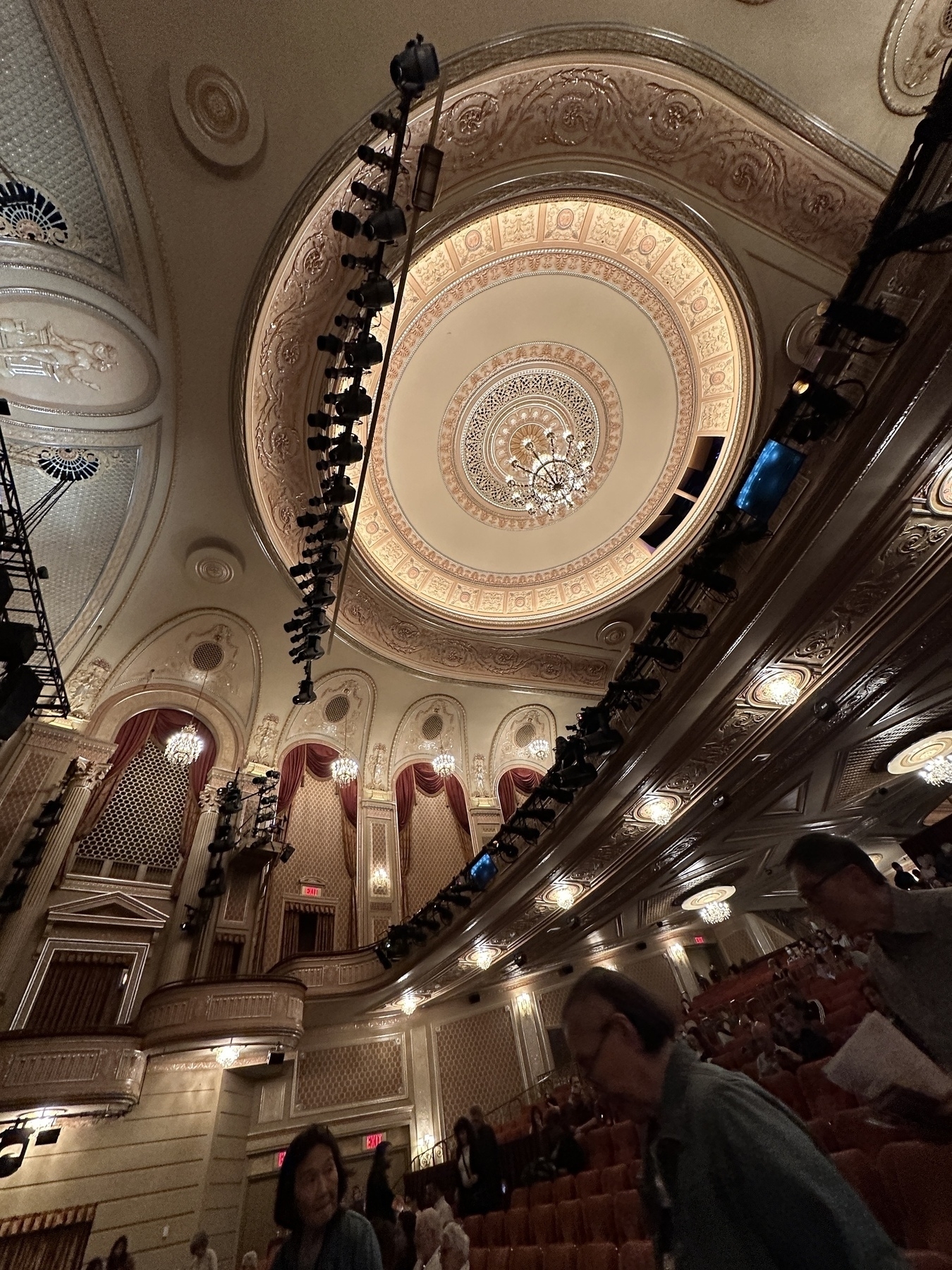
For my second day, I spent a LOT of time walking, so it’s unfortunate that it rained most of the day. On the positive side, one piece of IPO swag I got was a CHYM-branded rain shell with hood, so I put it right to work. First thing in the morning, I took the subway to Brooklyn and walked back across the Brooklyn Bridge.
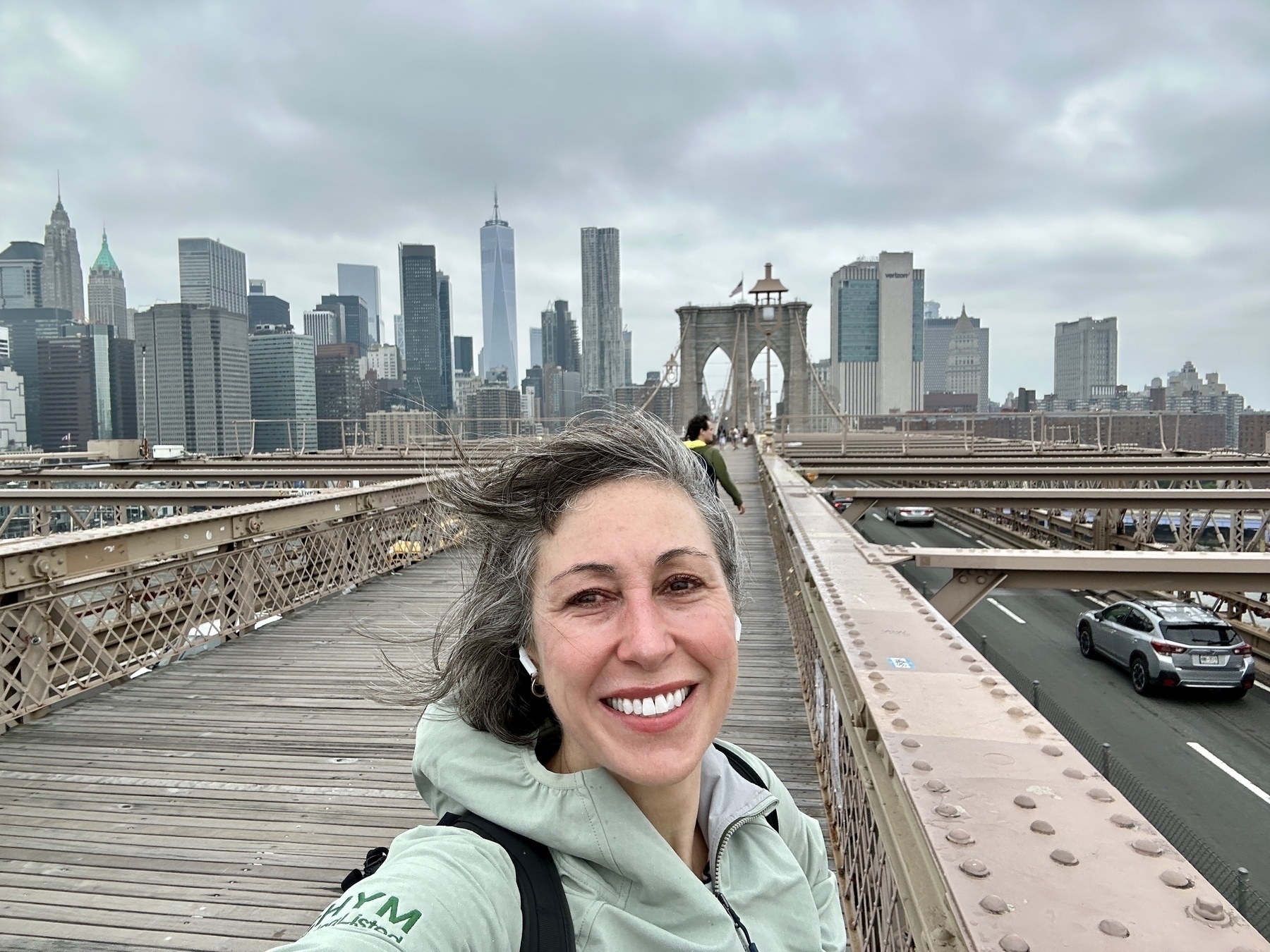
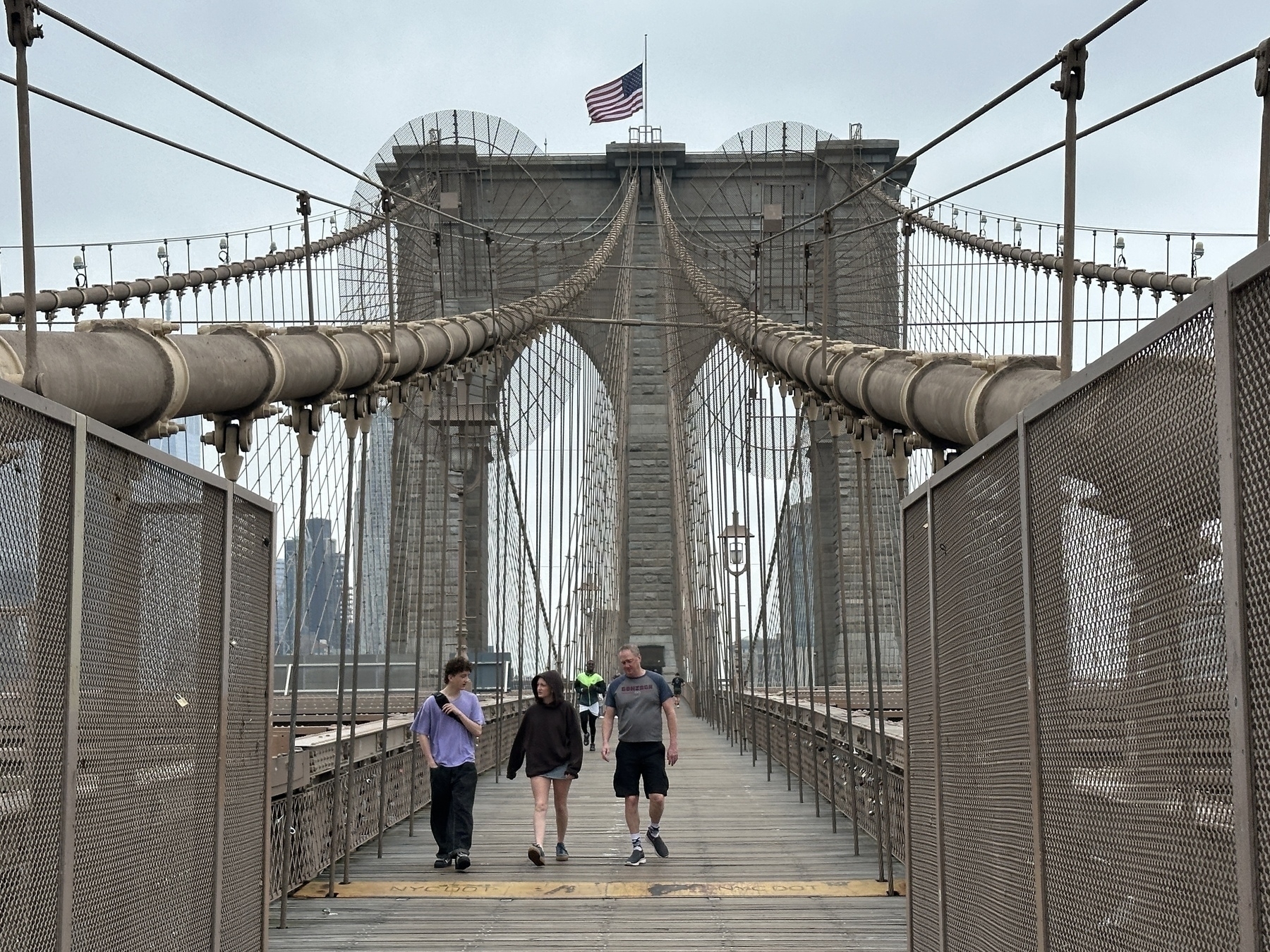
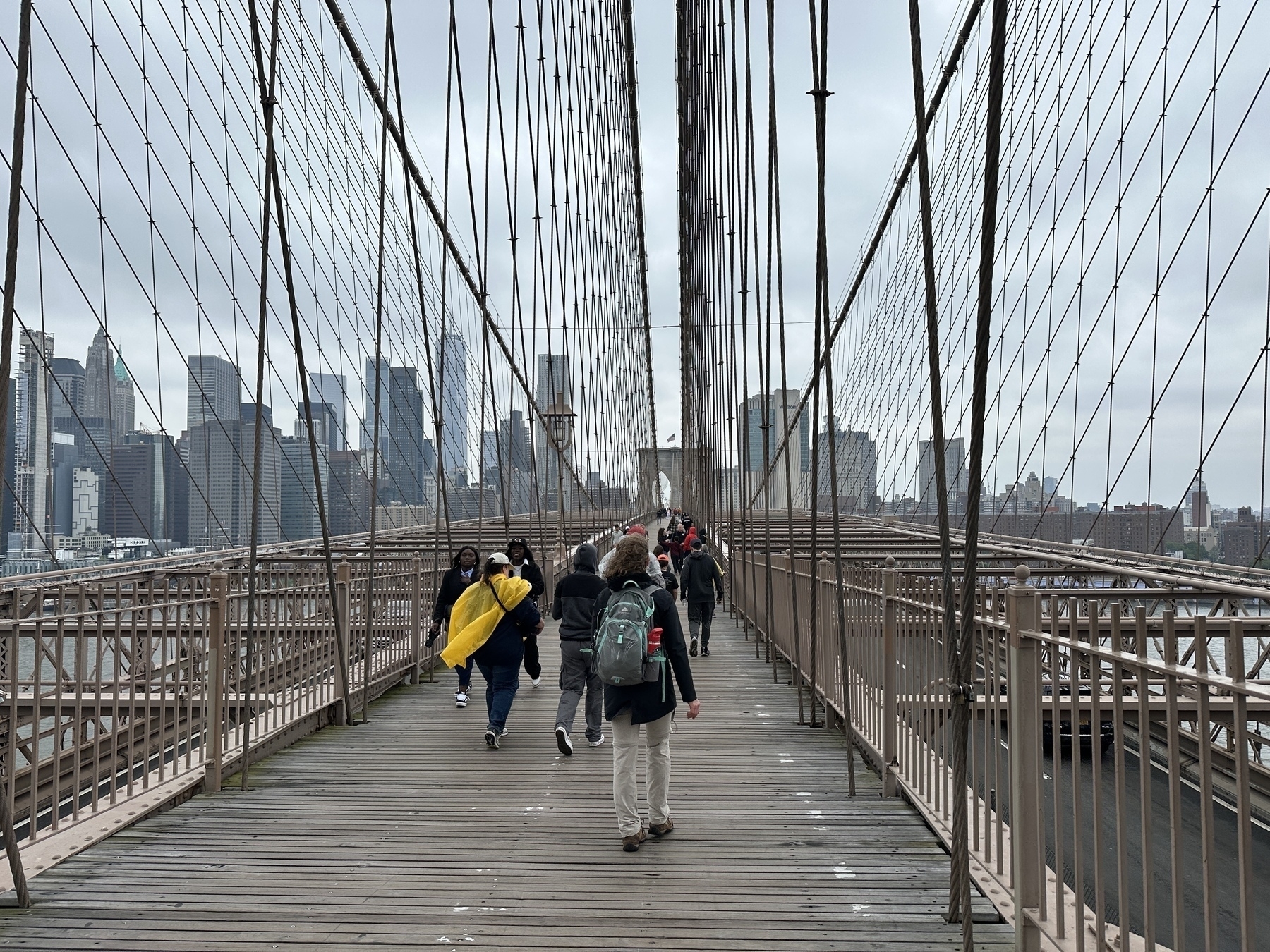
After that I wandered through Chinatown and the Lower East Side, checking out some great street art, before taking the tour of the Tenement Museum. I chose the “After the Famine” tour, which focused on an Irish family that fled the potato famine and lived in the building starting in 1869. It was really interesting! There are a number of different tours you can take, focusing on different eras and circumstances.
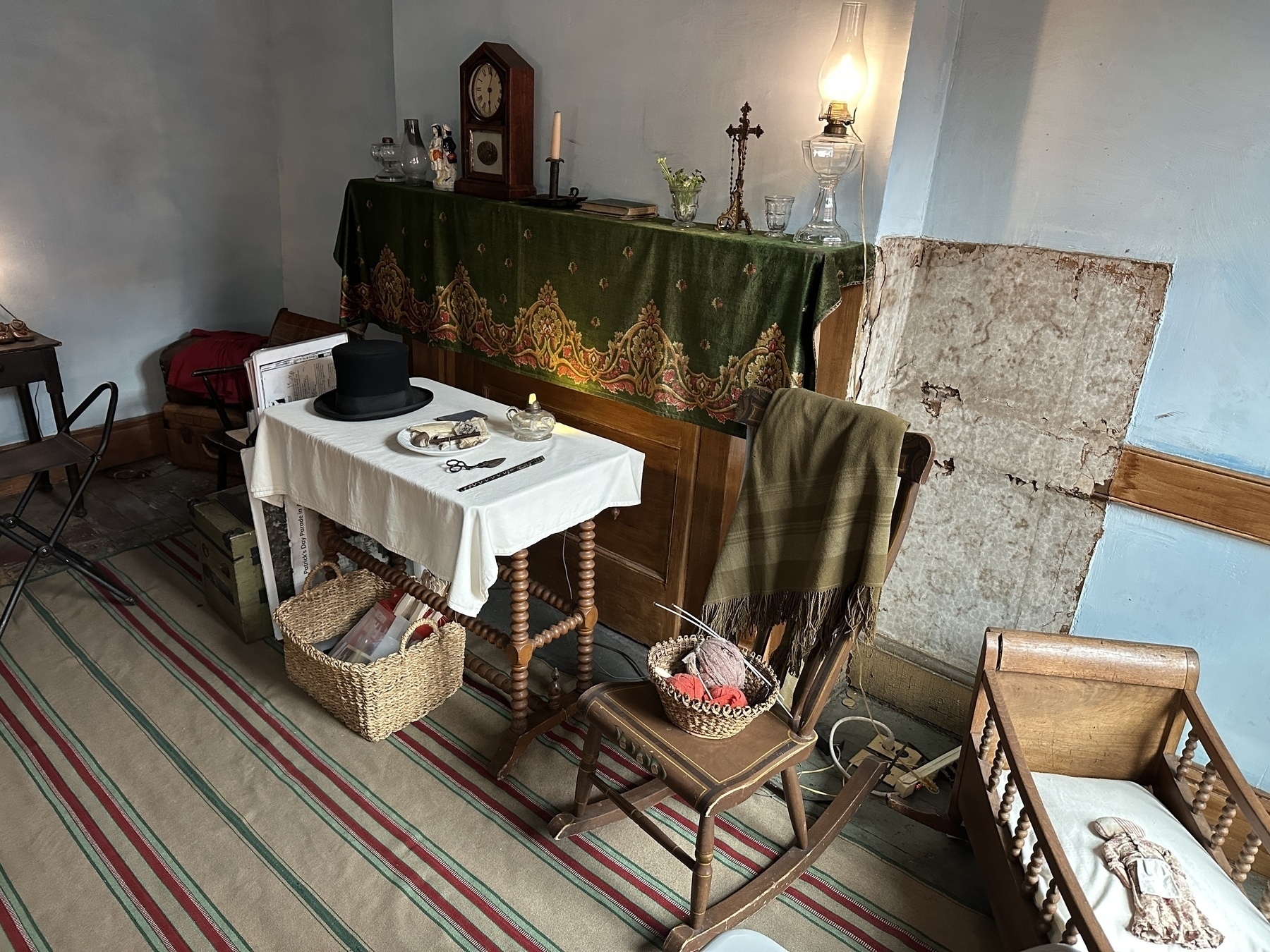
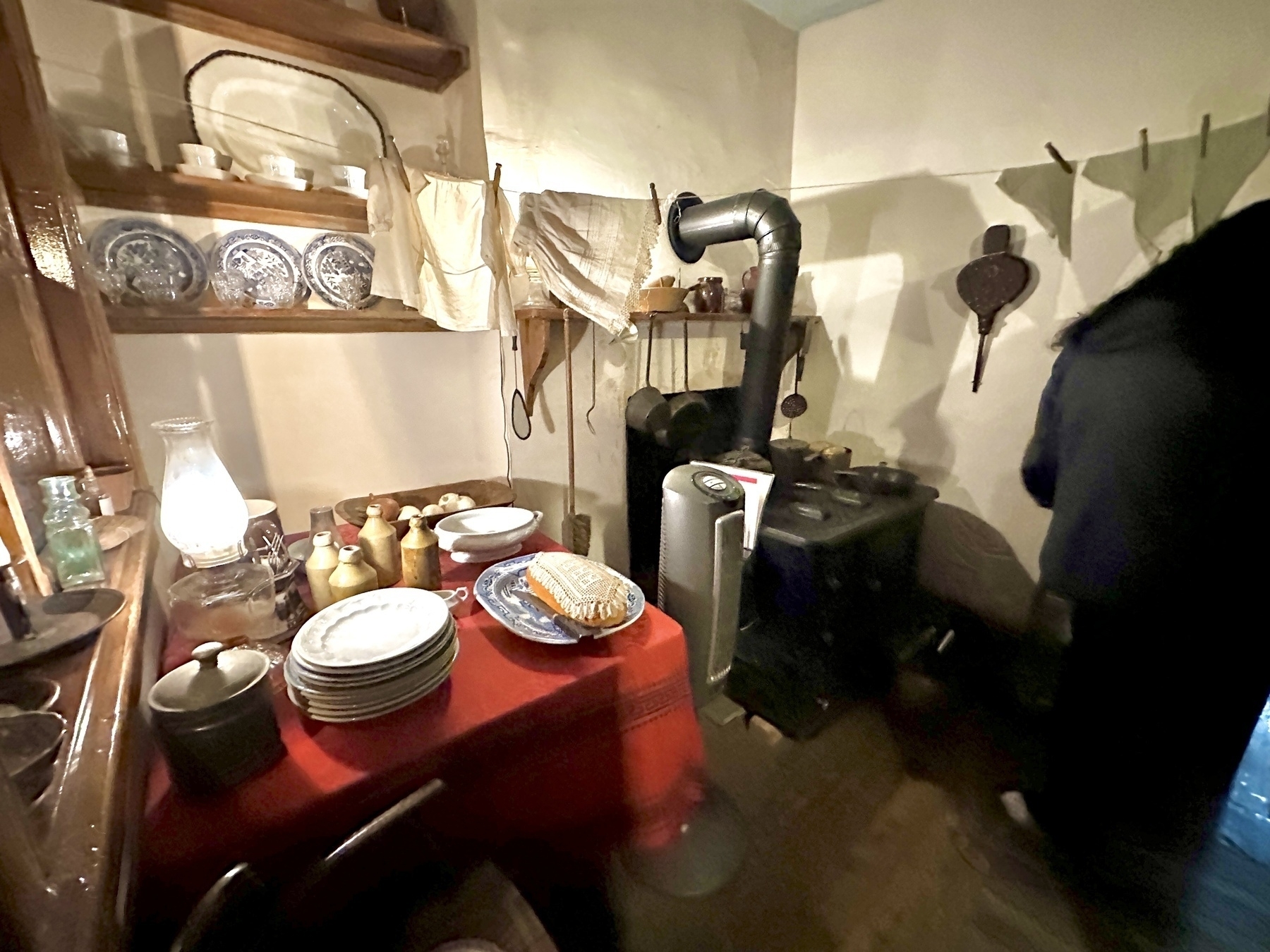
After that, I headed back to Bryant Park to [redacted] with 25,000 of my closest friends. Apparently they had expected a turnout of 75,000, but the rain kept a lot of people home.
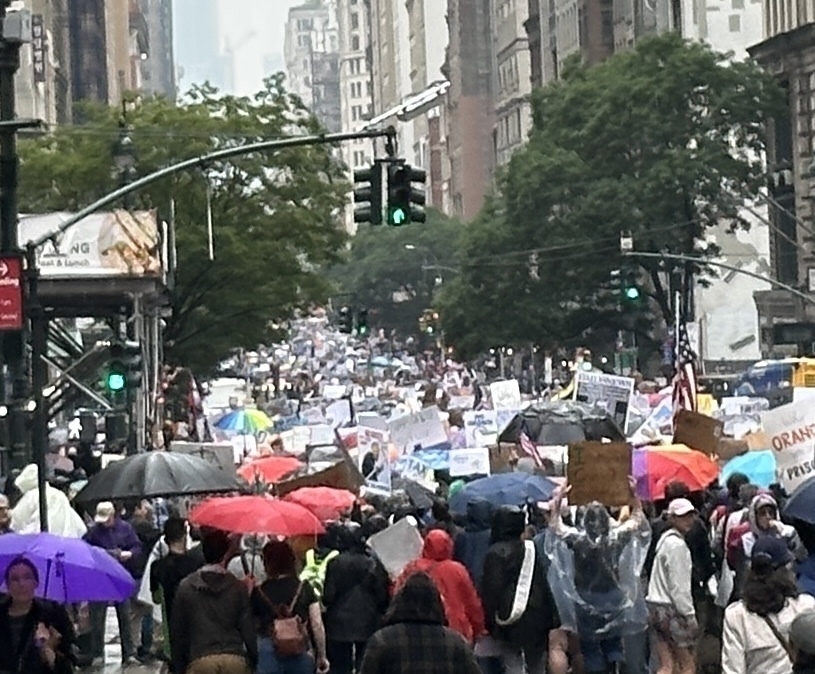
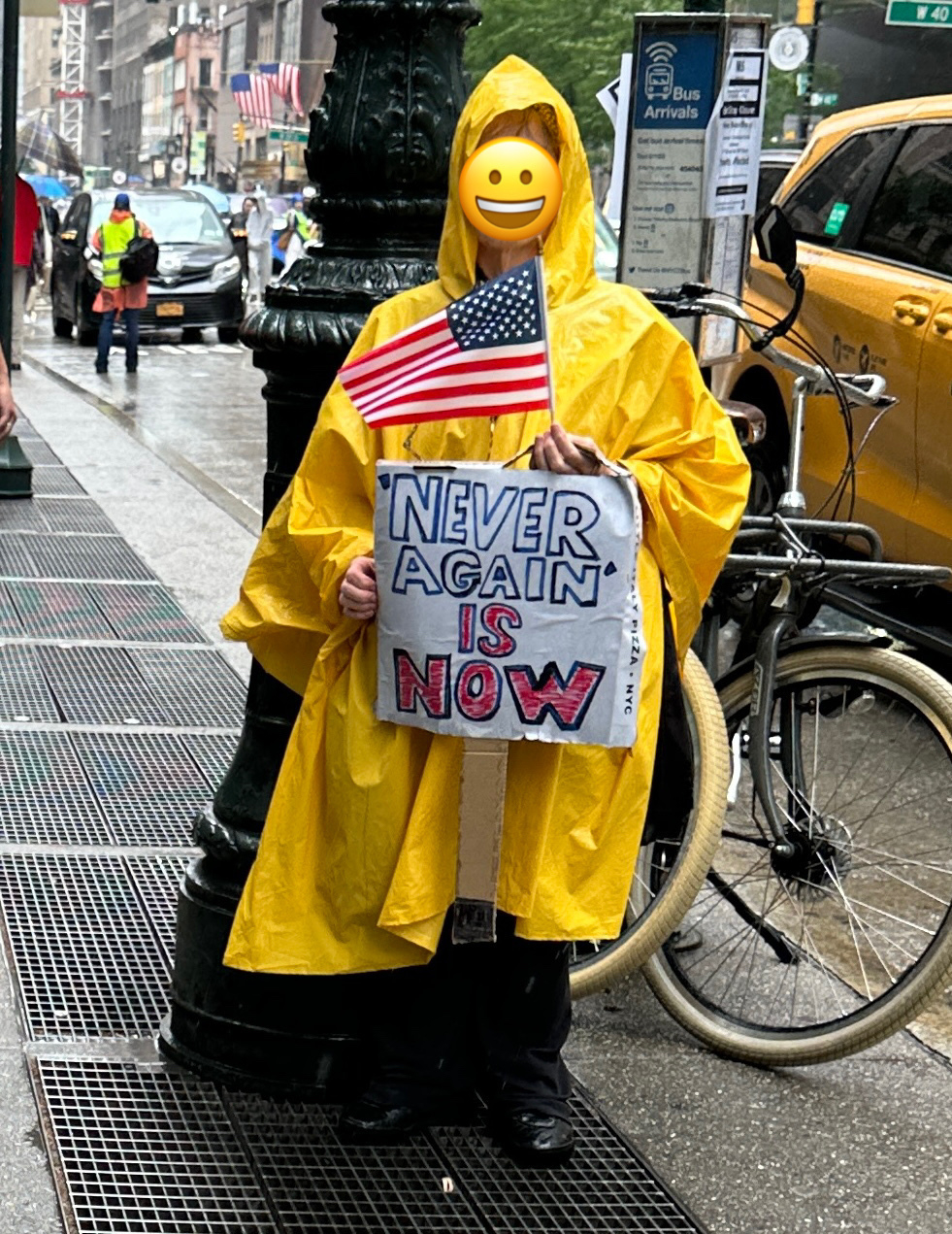
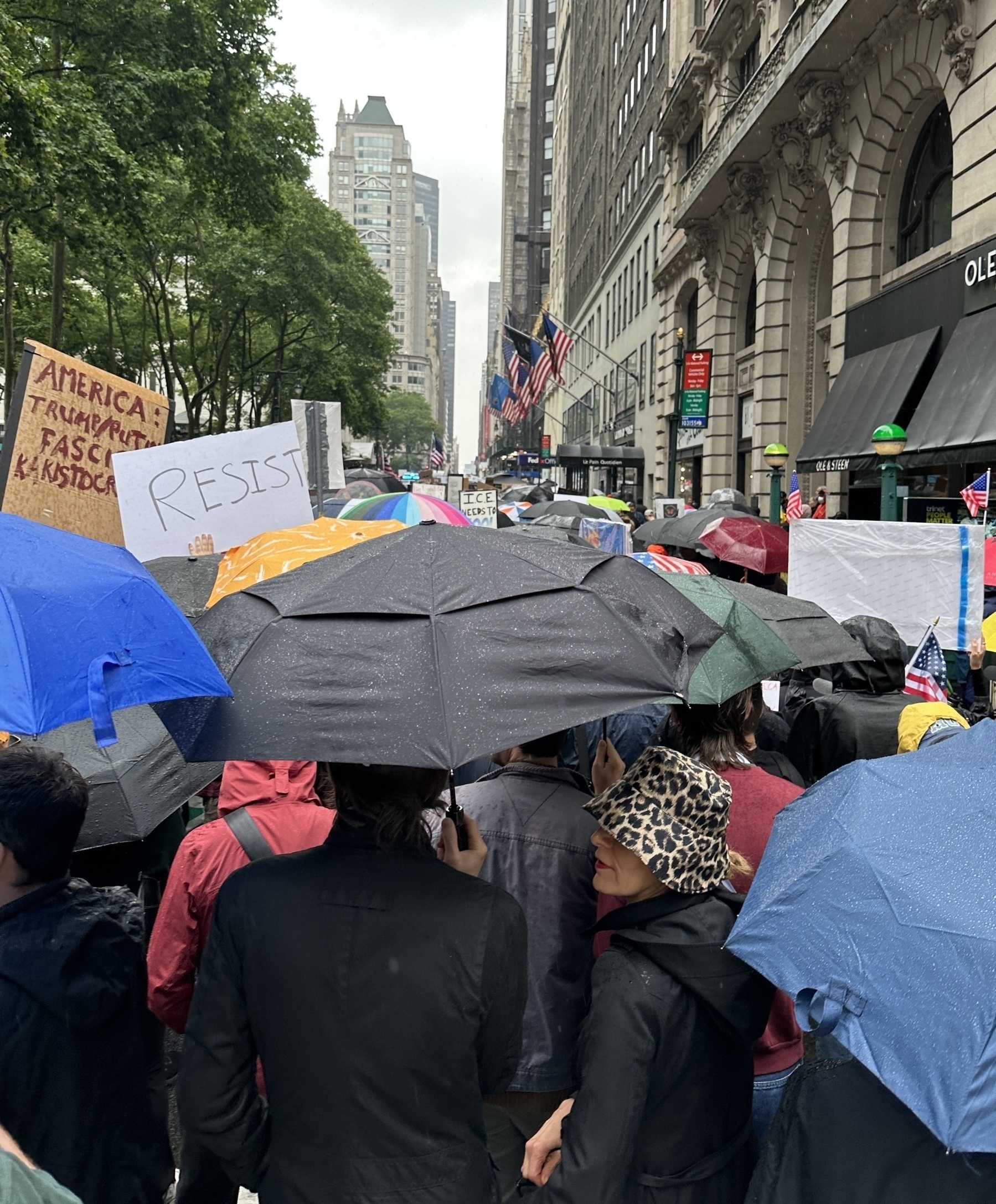
Then I did a lot more wandering around, including checking out Grand Central Station, which was spectacular.
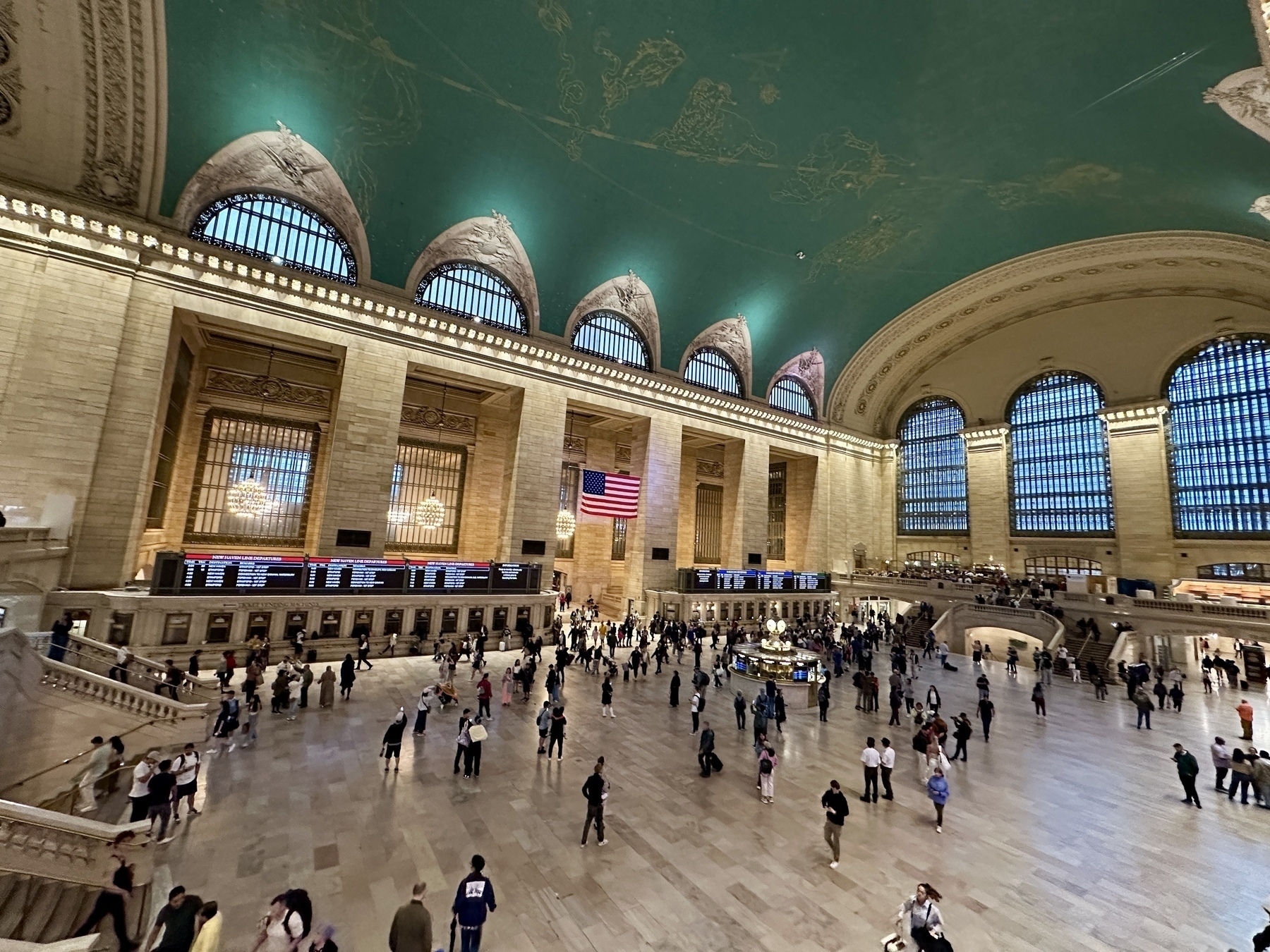

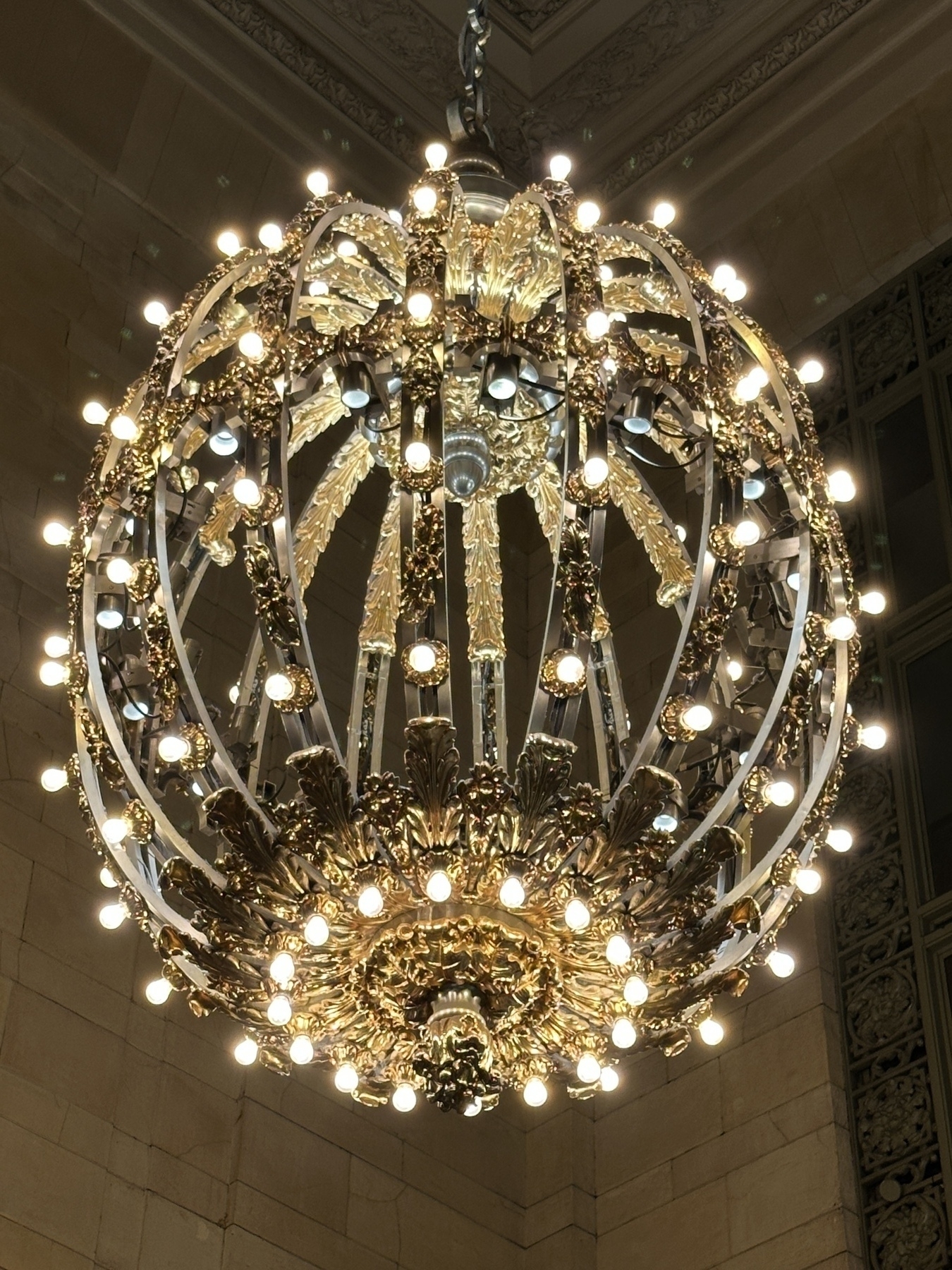
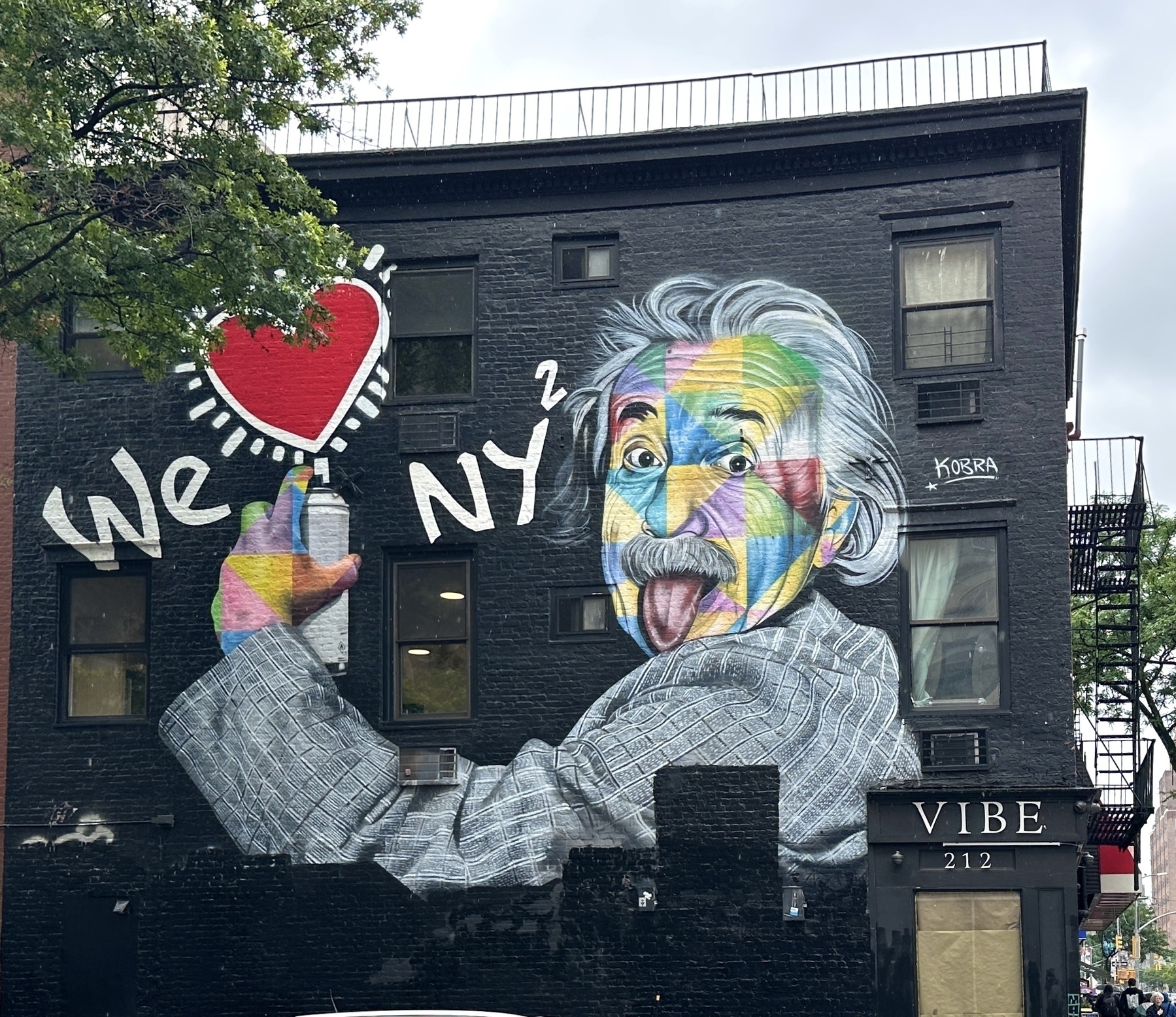
I eventually walked out towards Chelsea to experience the Chelsea Market and walk out onto Little Island, which was surprisingly cool.

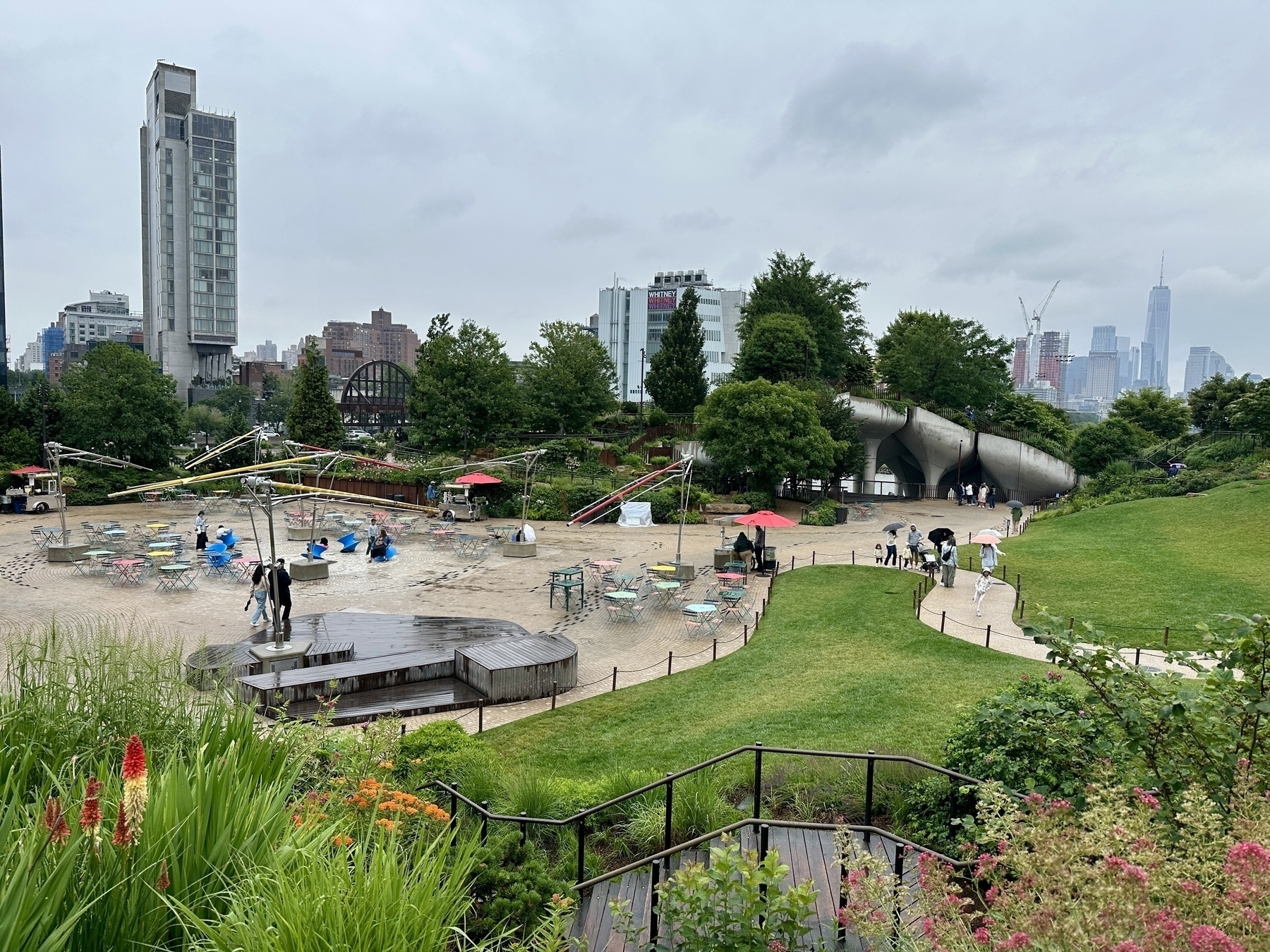

I didn’t go up to the High Line because it was still raining, and I was getting really hungry. I went to the charming and delicious Willow Vegan Bistro for an extravagant last dinner in NYC. It was delicious, but not as good as my dinner earlier in the week at all-vegan Beyond Sushi. Now it’s time for me to pack for my flight home tomorrow. I’ll be sad to leave, but I miss the dogs (and Adam too!).
CHYM: The End of an 11-Year Road, and an Exciting New Beginning
Yesterday, I was at the Nasdaq for the first day of trading for my company, Chime Financial. It was truly a surreal moment. After a hectic day of working in the NYC Chime office Wednesday, finishing out all the final legal tasks like the bring-down diligence call and the pricing discussion with the Board (we ended up pricing above our $24-26 range, at $27), we arrived at the Nasdaq Marketsite at 7:45am. There was a green carpet rolled out for our entrance, and a decorated reception area with breakfast. Our ticker symbol, CHYM, was everywhere. I still resent the fact that the ticker CHME was taken by another company (it was my first choice)! There, we chatted and got an overview of how the morning was going to go.
First up, we headed into the television studio for the bell-ringing ceremony (although at Nasdaq, it’s actually just pushing a button). Because it’s live, we did a rehearsal, with our founders, their families, the executive team, and our board all joining our founders on the podium in stages.

Then it was time to actually push the button to kick off the trading day!

After that, we went outside to take pictures in Times Square and see our ticker on all the billboards.

Everyone at Chime had a chance to upload a photo in advance, each of which was shown on the billboards for a few seconds each. Here is me!

We were ready to get back inside to the air conditioning (the high was 89 degrees that day)! We headed up to the room where the person who is matching up buyers and sellers was lining up the first trades. I didn’t realize this was the process, and takes a few hours. He walked us through what was happening on his multiple screens.

While waiting, our CEO and other execs did interviews. I was in the background of this interview on CNBC!
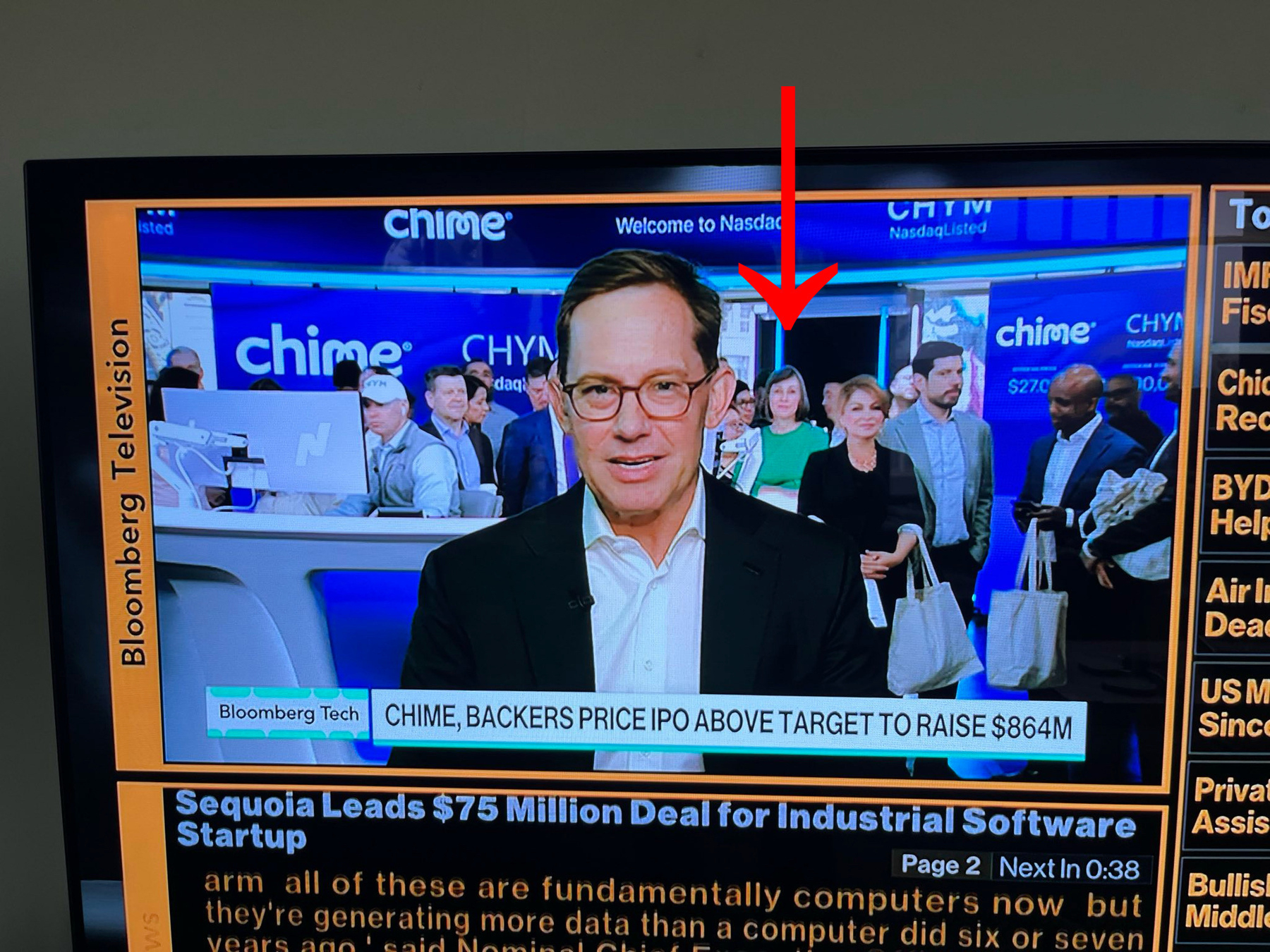
Ultimately, the process was complete and we started trading at $43! Cheers all around, and the show was over. We were all exhausted and emotionally drained, and had several hours before the reception that night. Personally, I took the subway to the north edge of Central Park and took a slow walk back to the hotel (about 4.5 miles). It was very relaxing.
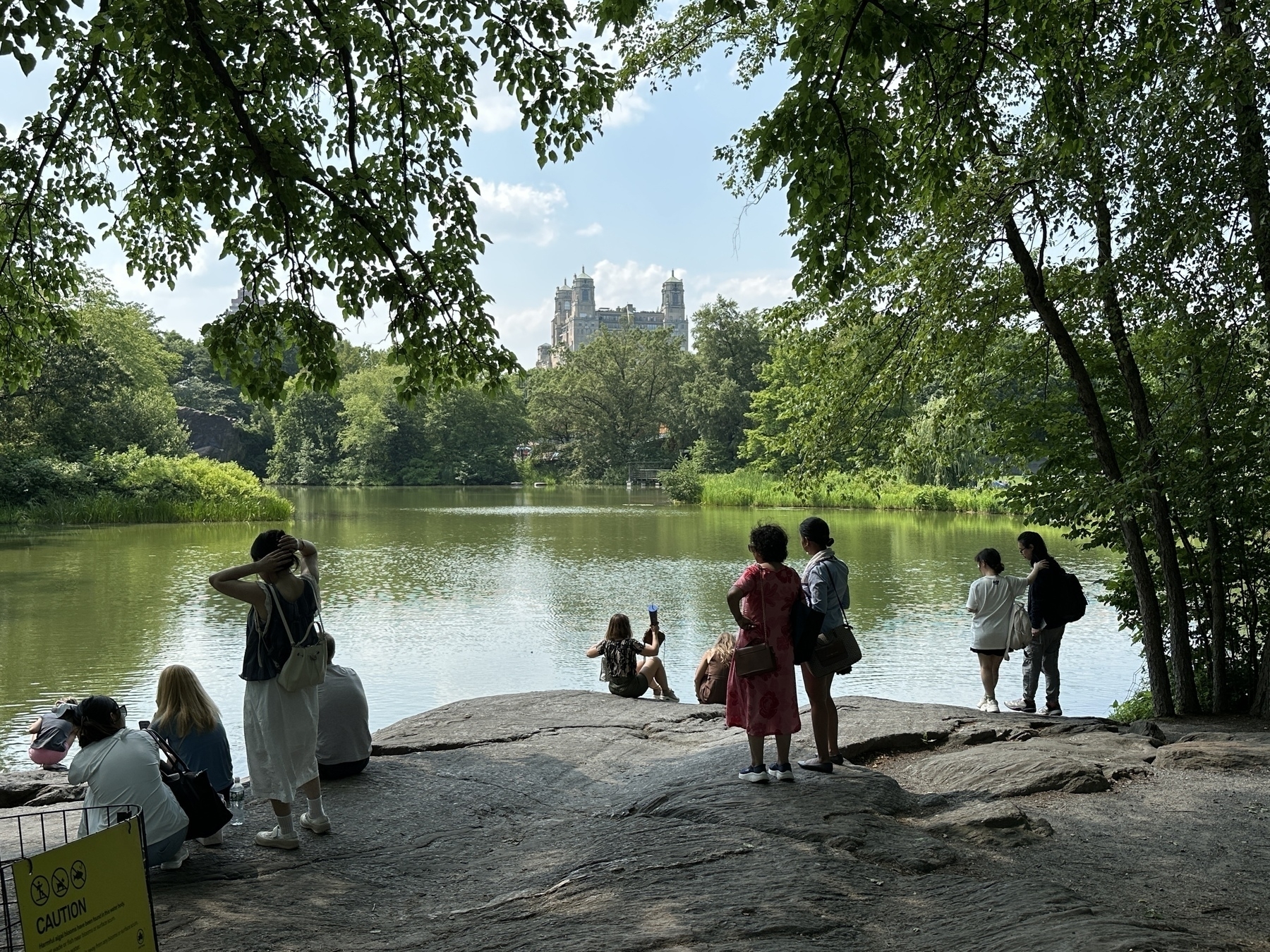
Then it was back downtown (I stayed in midtown) for our reception at Cipriani Wall Street. It was so fun to celebrate together!
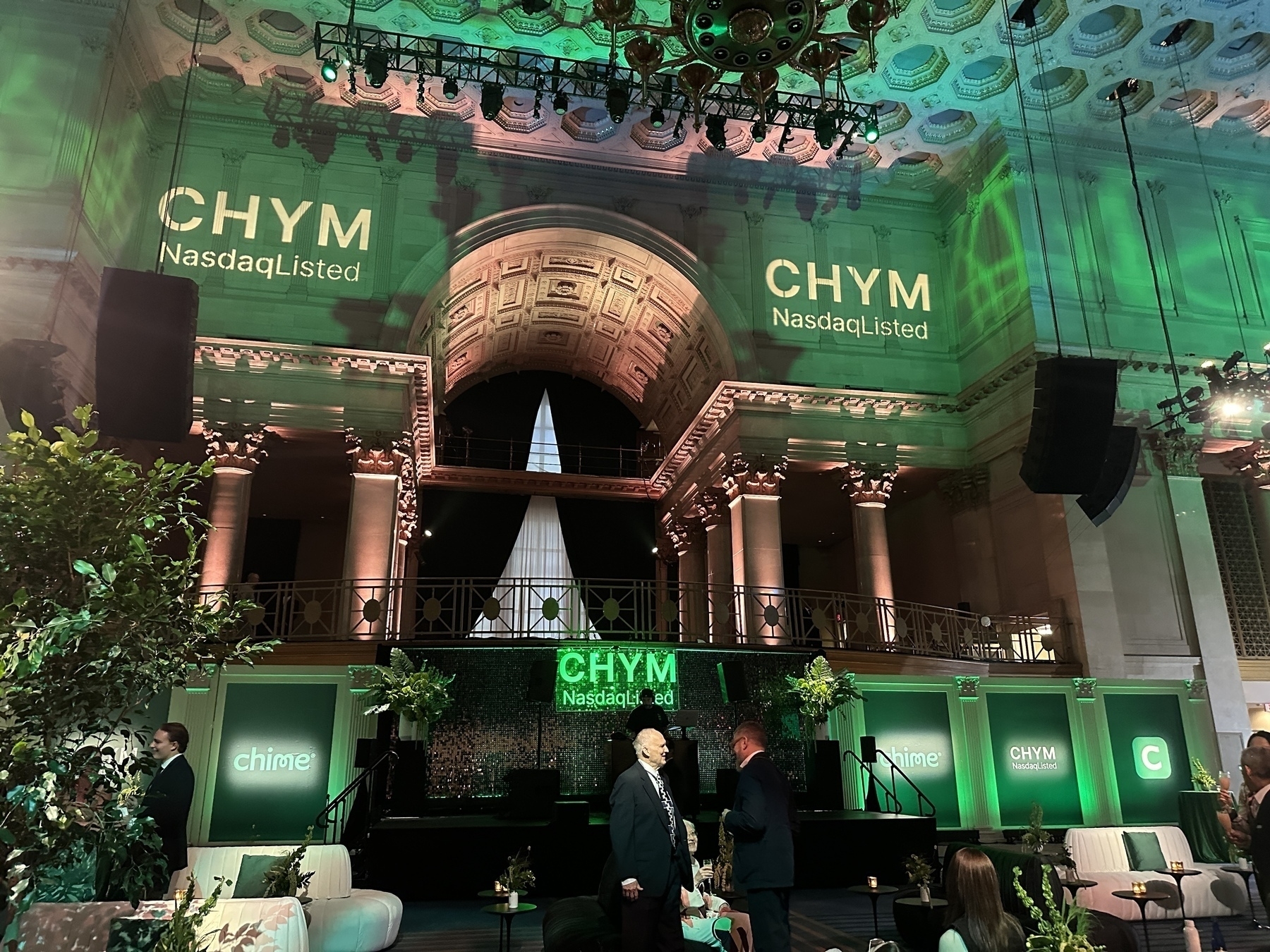
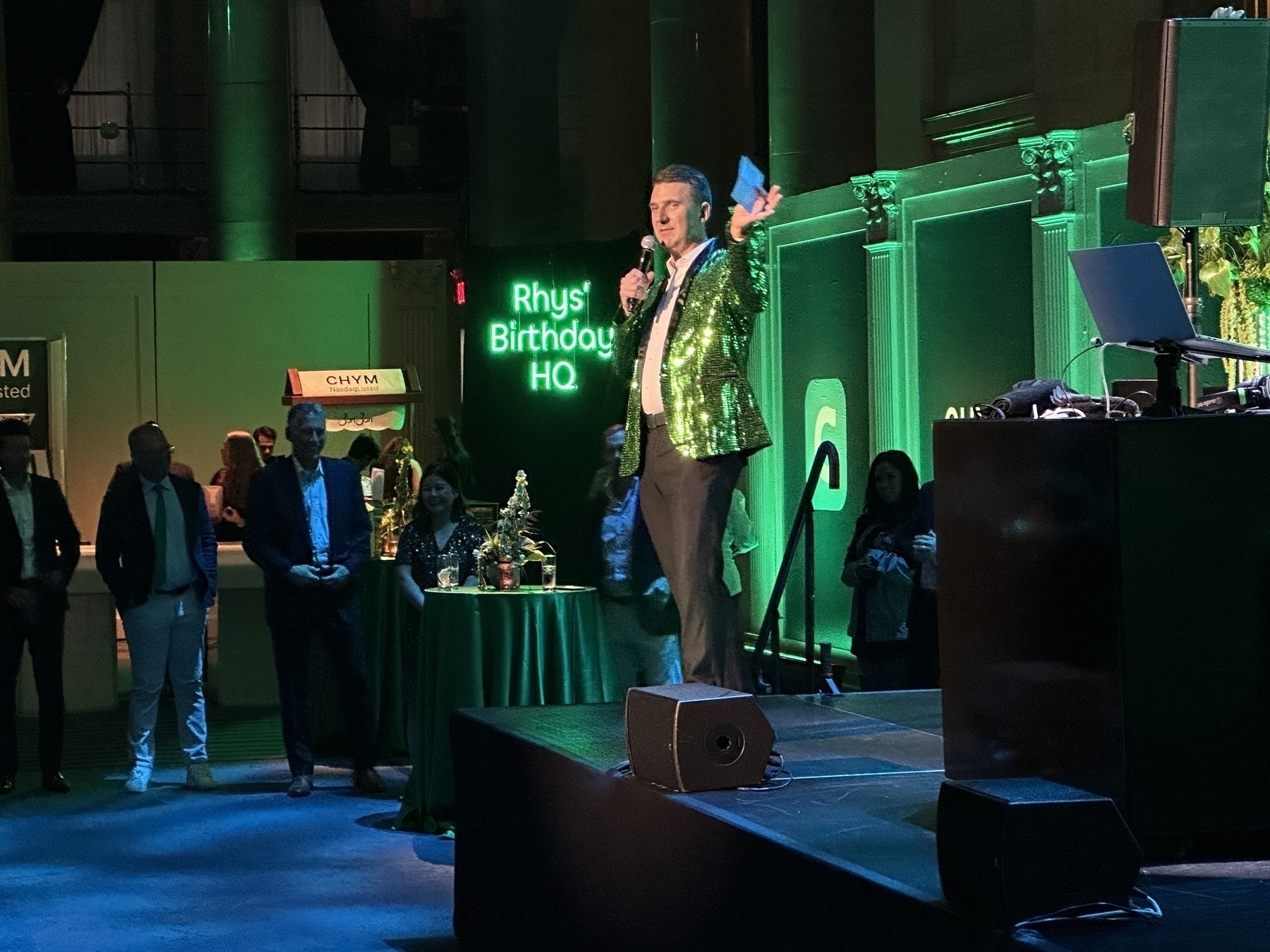
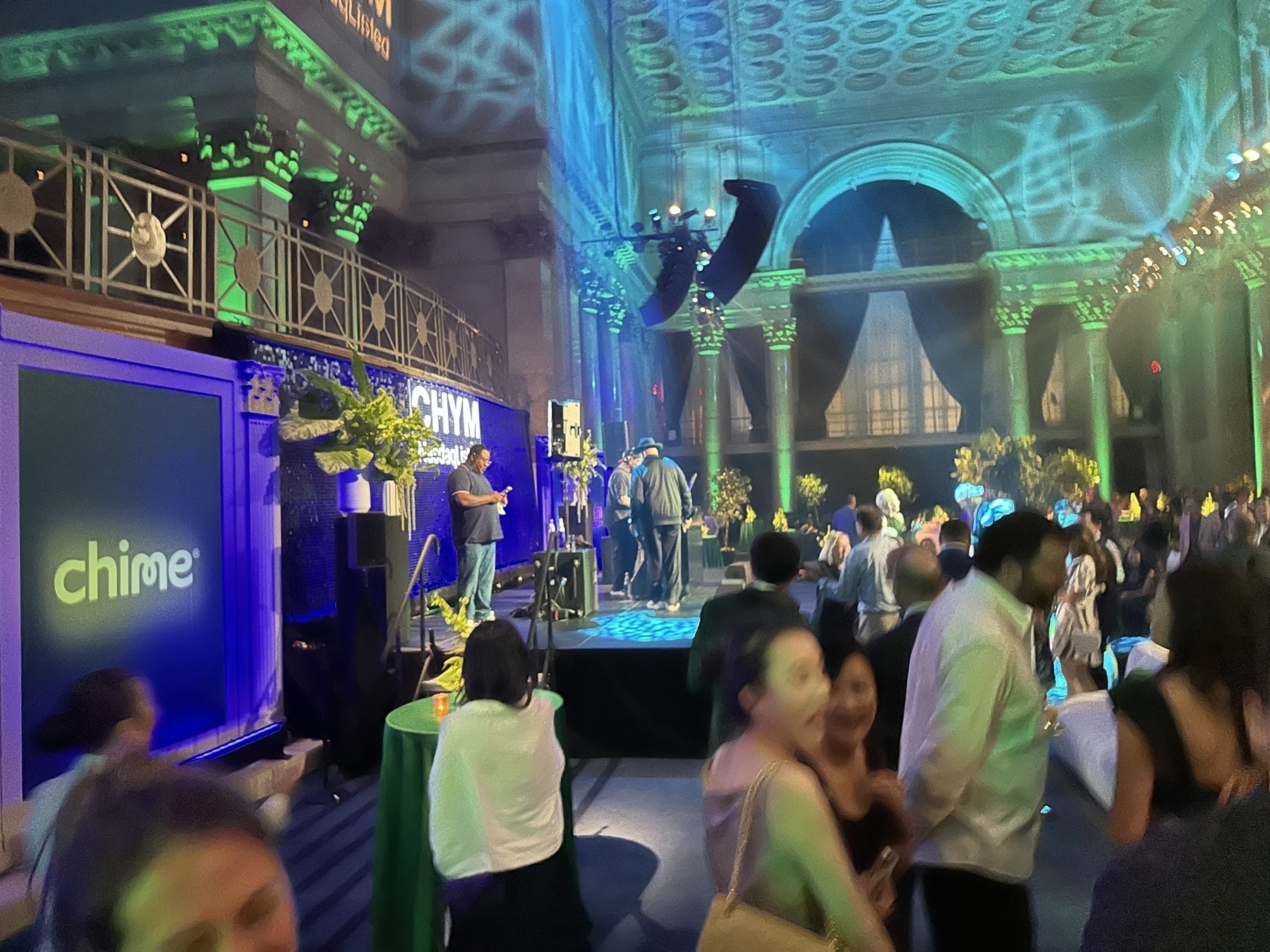
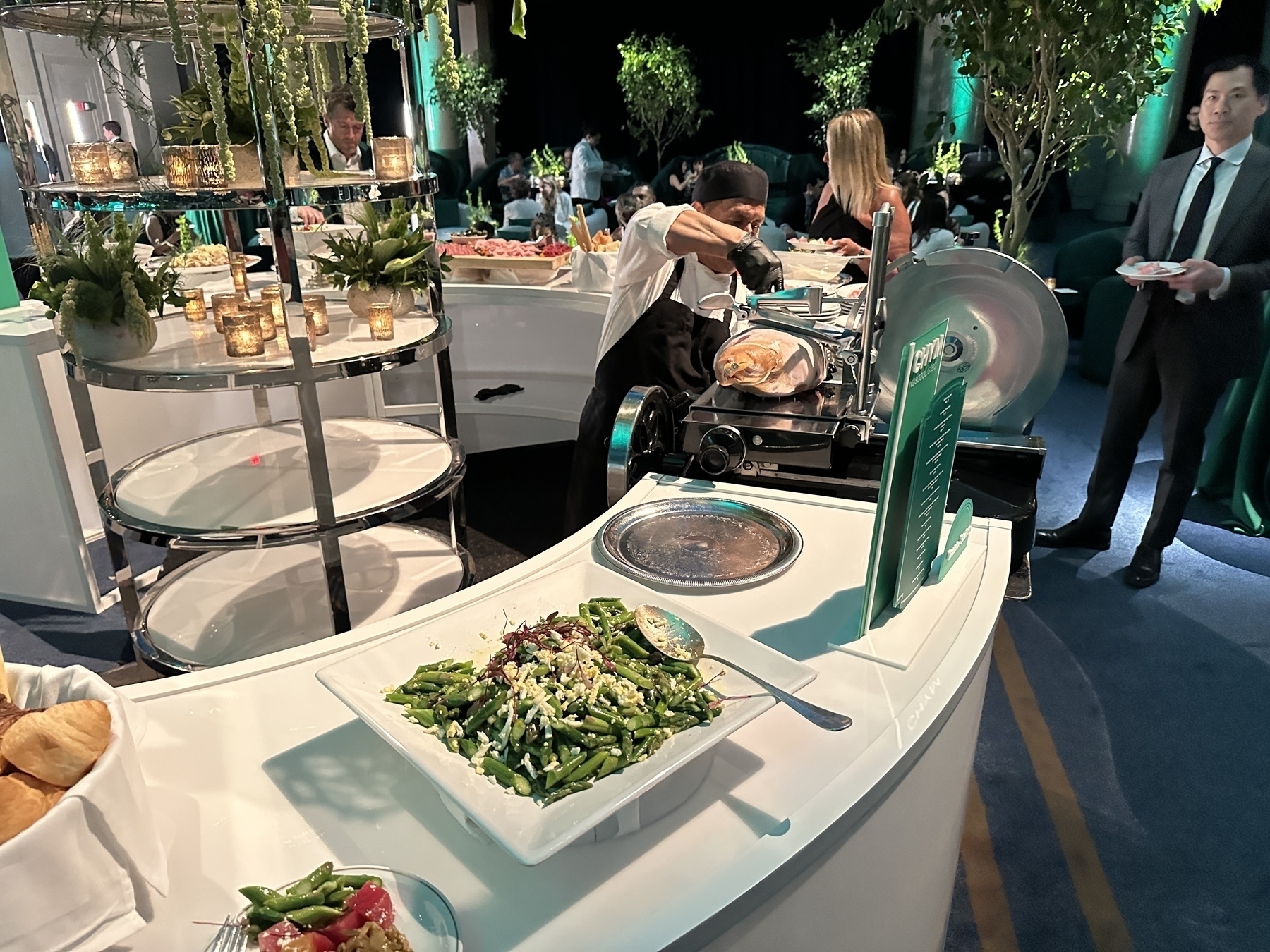
Our DJ was Rev. Run of Run-DMC! He was great and got everybody dancing (even me!) with 80s and 90s hits.
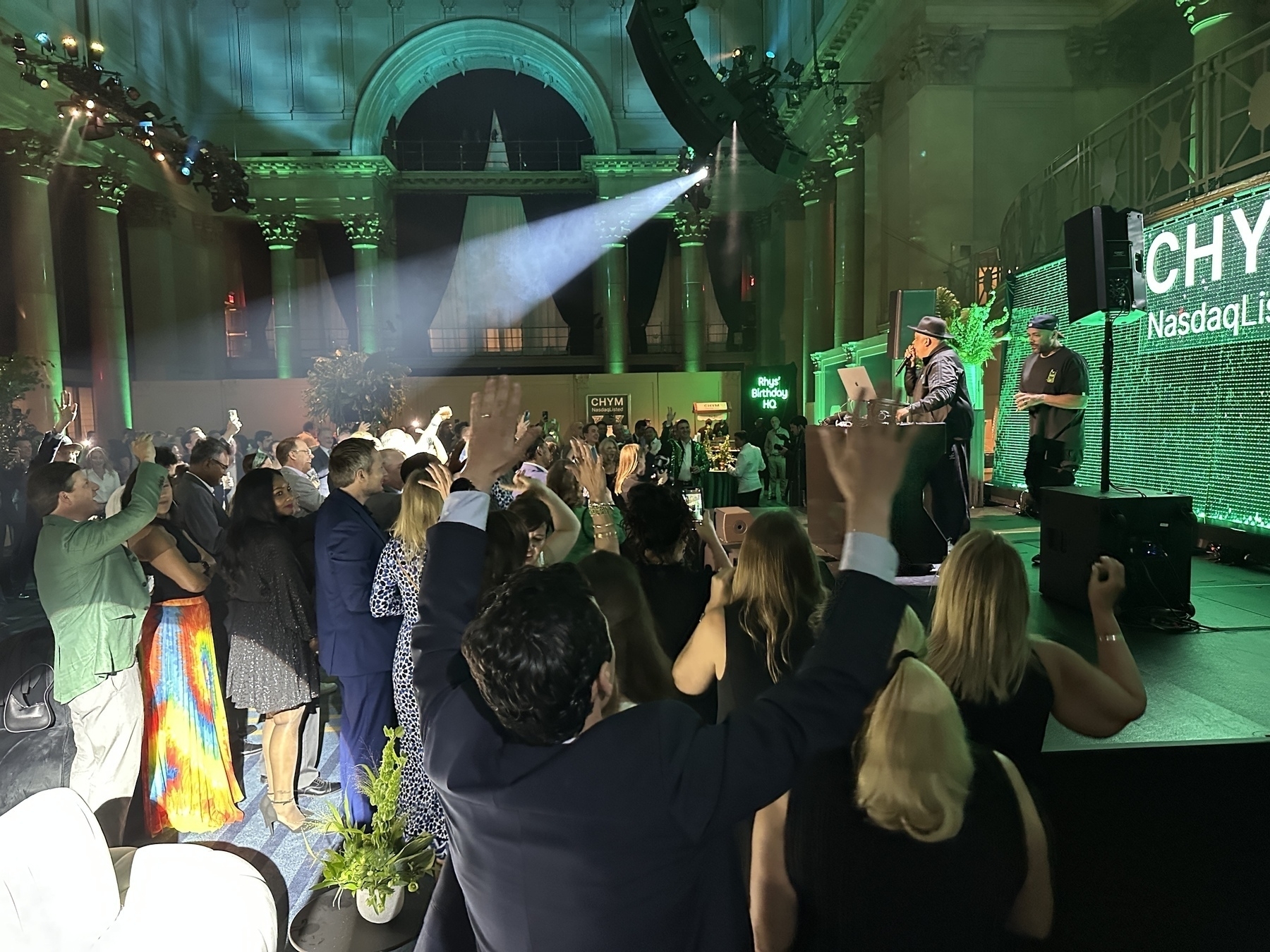
Finally, I got back to the hotel and crashed.
I said in the title that this was an 11-year journey for me. Ever since I took my first in-house job at Credit Karma in 2014, I’ve been working at a company that was planning to go public “some time next year.” At CK, we got acquired by Intuit. Then I went to Checkr, which remains a private company. As a corporate lawyer, I knew that taking my company through an IPO was going to be a career highlight… and now I have finally gotten to do it. The best part is that I love my team at Chime, and know that this is an exciting beginning for the company. I can’t wait to see what we do next!
Distance Running
I’m currently training for my 6th half-marathon, the San Francisco Second Half, in July. I usually only do them every couple of years, to make sure I still can, but I’d been wanting to do this race for a while and it always sells out. This year, a co-worker happened to alert me that sign-ups had just opened, so I went ahead and reserved my place. Since I just did the Golden Gate Half (for the third time) last November, I figured I’d just keep up my level of training rather than going back to “normal” and training up again.
Usually when I’m training for a race from scratch, I use the Hal Higdon “Intermediate 1” program. It’s doable with a job, except when you get to about week 7 and you’re doing 7-8 mile runs on a Wednesday. I work out in the morning, so that means getting up at something like 4:30am to do a long run, which isn’t great. This time, I’m just maintaining my regular running schedule, which is generally 4-5 mile runs on Sunday, Tuesday, and Wednesday, and then a 10-12 mile run on Friday (or over the weekend if I can’t get to it on Friday). On the other days, I do yoga or strength training.
I’m trying a new approach this time, which is focused on increasing muscle. I’m doing heavy lifting (heavy for me!) inspired by the “Hit Play Not Pause” podcast, which is geared towards athletic women in perimenopause or menopause. The host talks quite a bit about how women tend to start to lose muscle at our age, and we have to really work to retain it. I bought Bowflex adjustable dumbbells last year (which are fantastic!) and am trying to steadily increase the weights I’m using (I track it via the free Strong app).
I’ve also significantly increased my protein intake, aiming for 1.6g per kg of body weight, which is about 120g/day for me. I eat Greek yogurt every day, nuts, and hardboiled eggs, but I also try to get 3 scoops of protein powder over the course of the day. I was getting whey-based powders because I thought that was all there was, but there is a vegan powder from Naked that I’ve been trying, which is pretty good. I get around 50-60g from stuff I normally eat and then ~70g from protein powder.
I started this approach around the beginning of this year, and my scale (who knows how accurate it is) thinks I’ve gone from 58.2% muscle to 62.8%, so I feel pretty good about that! We’ll see if it impacts my race time.
Vegan Ice Cream Experiment #4
I made another attempt at a vegan ice cream, this time adapted from this Underbelly recipe. The ingredients I used are:
The main differences from the Underbelly recipe are:
(1) I bought cashew milk rather than making it myself. I used the Forager Project brand, which doesn’t contain any extra ingredients, aside from a little bit of oats and salt.
(2) I substituted 2.25g of locust bean gum for his recommended 2.25g of carboxymethyl cellulose, since I didn’t have that on hand. I recognized later that this is probably a failure, as the batch isn’t cooked, so the LBG won’t be activated.
(3) I substituted extra guar gum for his recommended 1.5g of gum arabic, since I didn’t have that either.
(4) Since I didn’t have either of trehalose (10g) or powdered glucose DE40 (60g), I substituted 70g of powdered glucose DE42.
(5) I increased the amount of sugar from 105g to 120g, since Underbelly often complains that most ice creams are “too sweet” (which is, obviously, wrong!) and I wanted to correct for it not being sweet enough.
I flavored it with my standard raspberry flavoring, which is made by buying a 340g bag of frozen raspberries and cooking them on low until they are nice and jammy. Then I used the stick blender to blend them all together. The deodorized/refined coconut oil was new to me, it doesn’t have the coconutty smell/flavor, so makes for a more neutral base.
This turned out more like a sorbet than the ice cream feel I’m going for, although the flavor was good. I’d like to try this recipe again, but with his recommended ingredients (all can be ordered on Amazon), and think about how to make it creamier (maybe more inulin?). The addition of inulin was something I wouldn’t have come up with myself, but Underbelly recommends it as a way to add a creamy “mouthfeel” without the milkfat, even though inulin is a starch and not a fat.
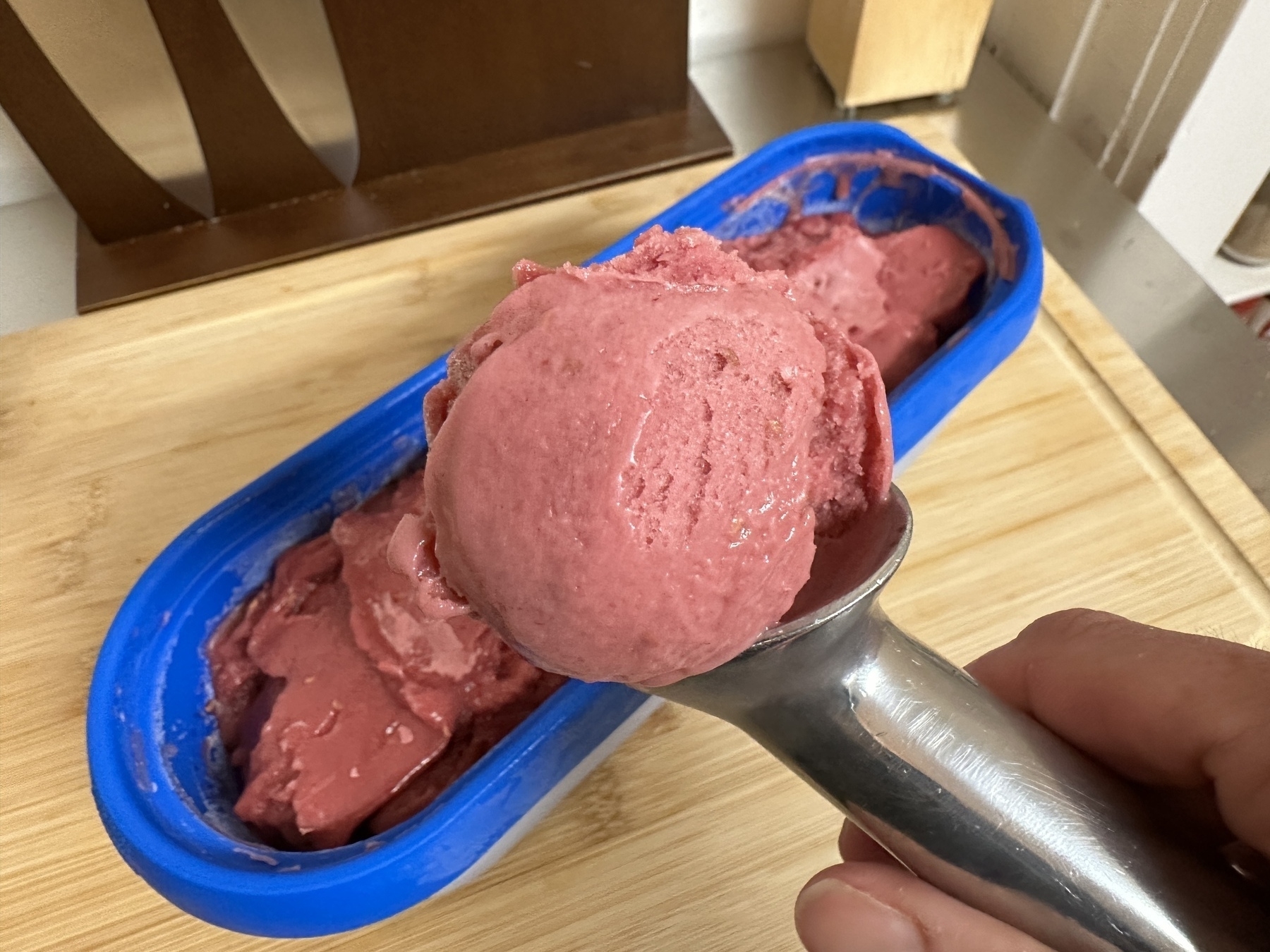
Photo Gallery from Carnaval in the Mission
The Carnaval Grand Parade in the Mission is a super fun event to photograph (and to attend). Most parades are boring, but not this one! So much color, dancing, music, and joy. Here is a selection of photos I took yesterday. I regret choosing to be on the side of the street that was shooting slightly into the sun, but lucky for me, the parade continued well past noon, and the later photos are lit more favorably. All shot on my good ol' iPhone 14 Pro.
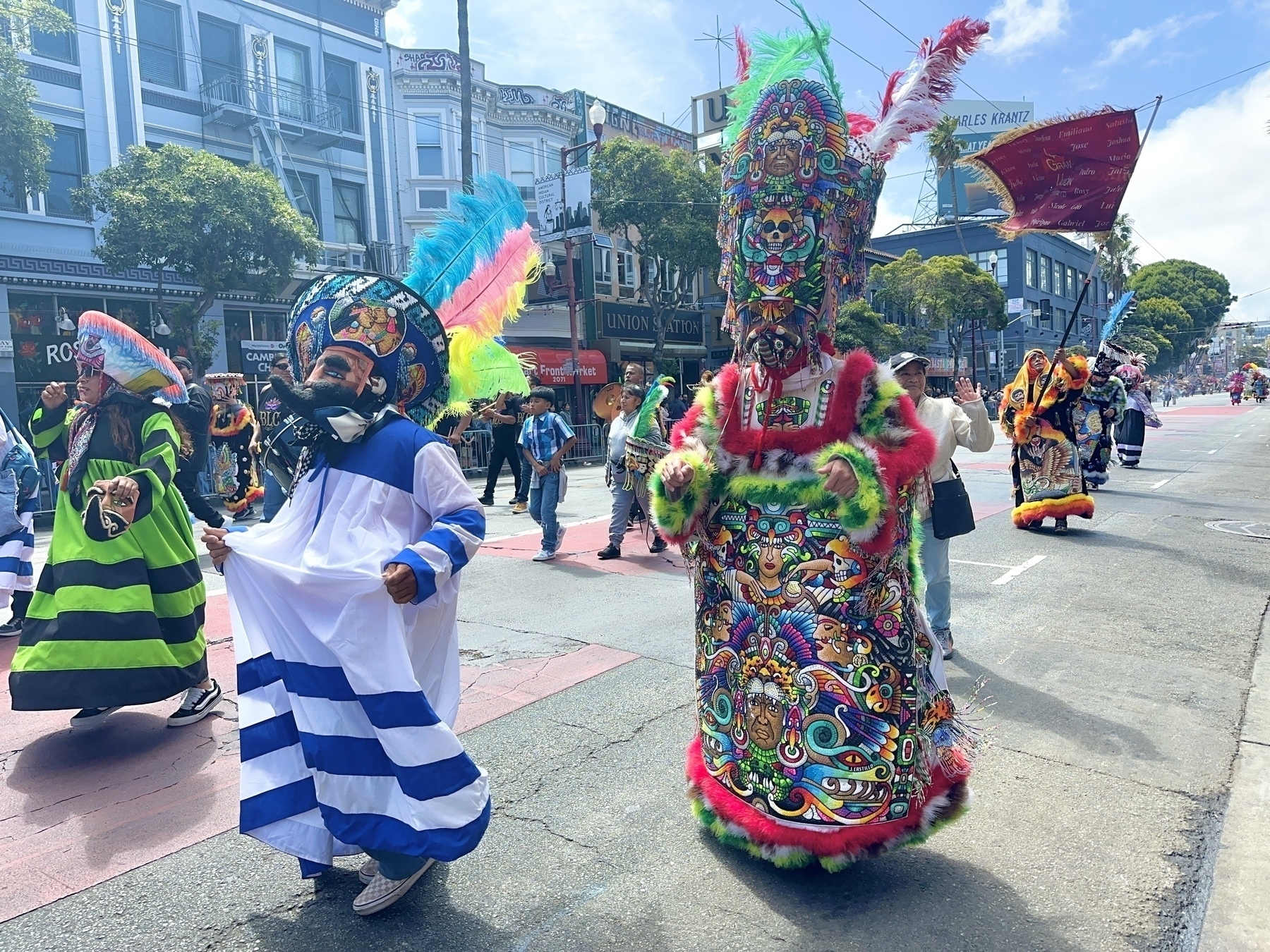
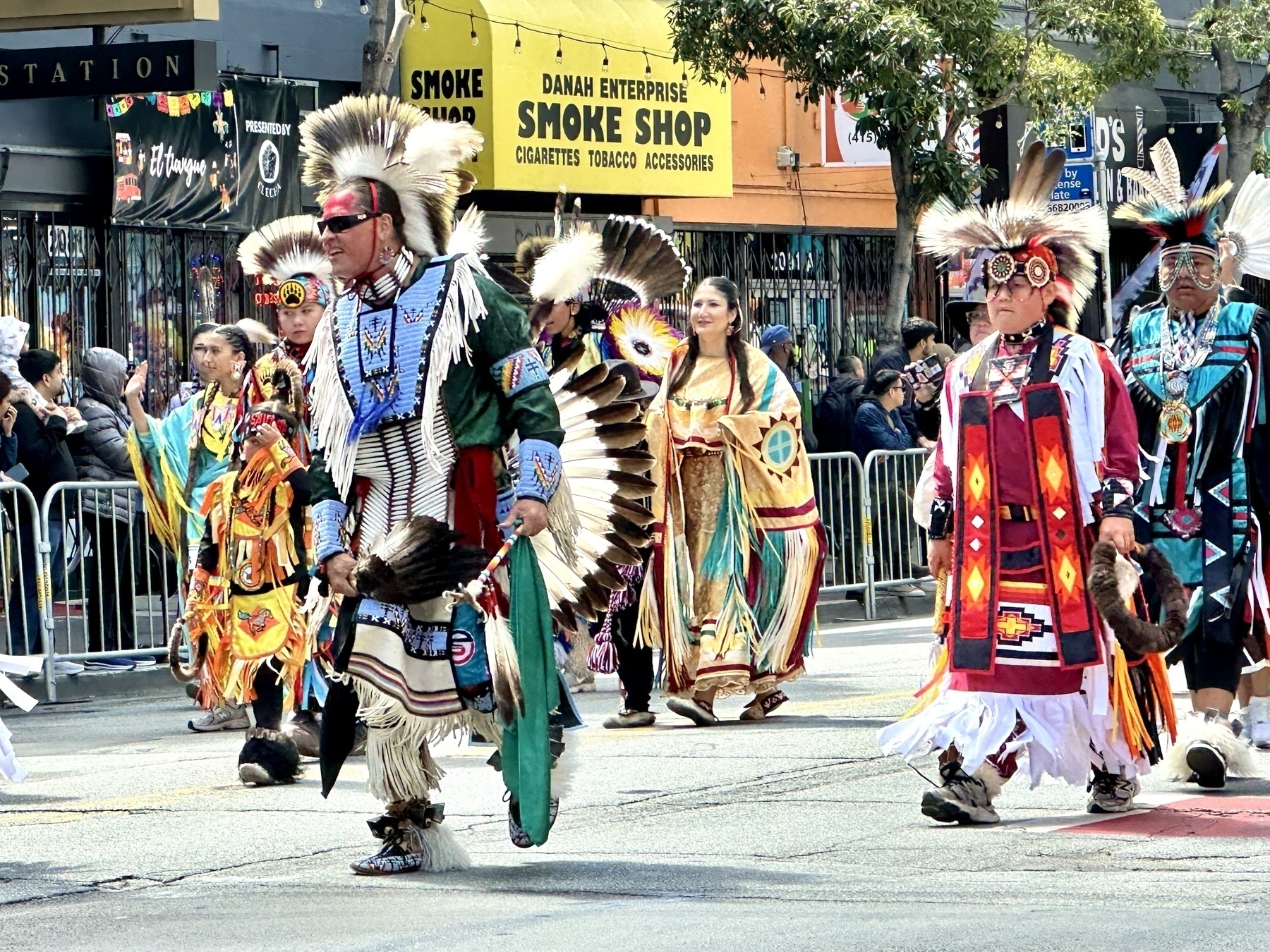
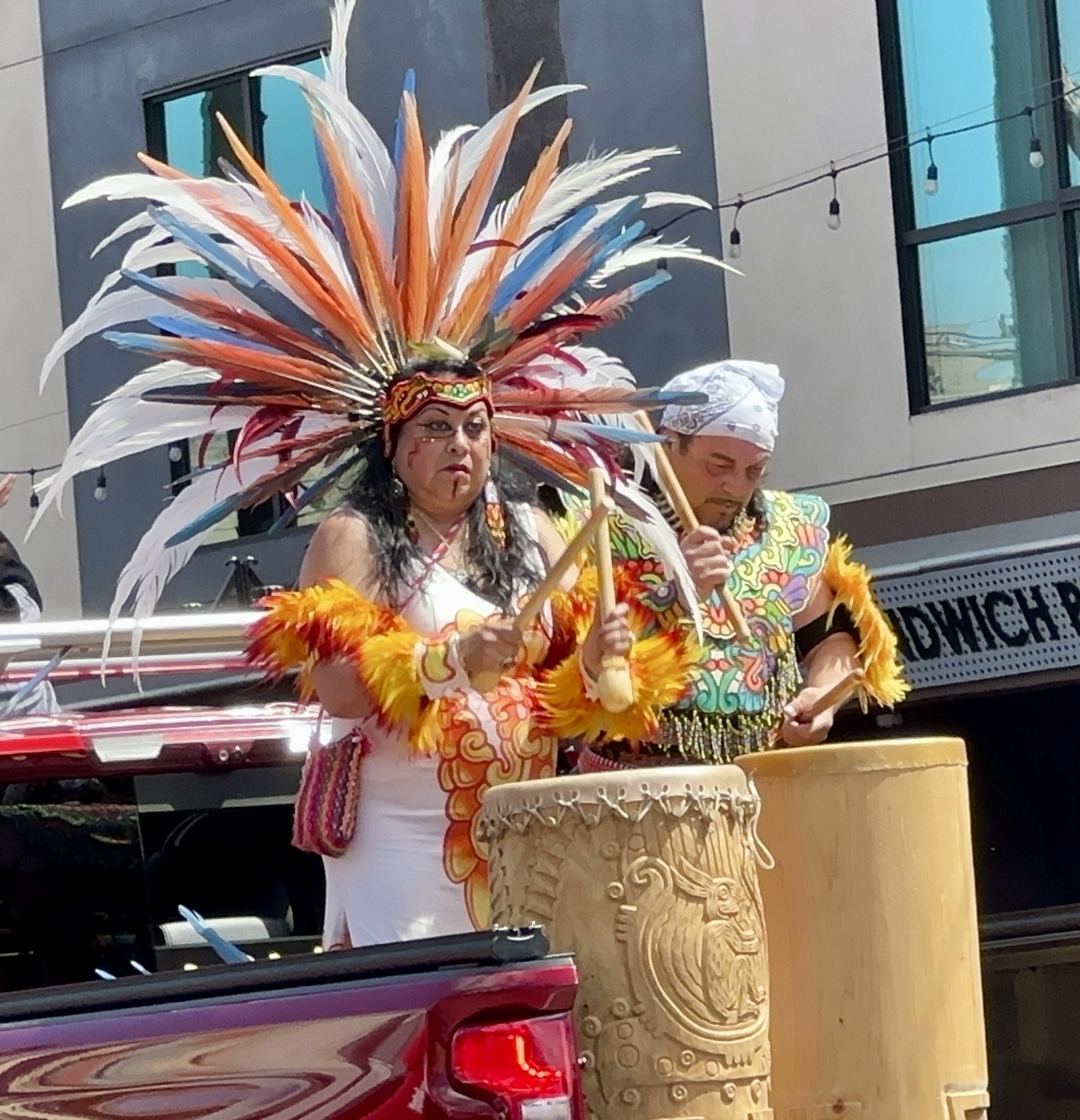
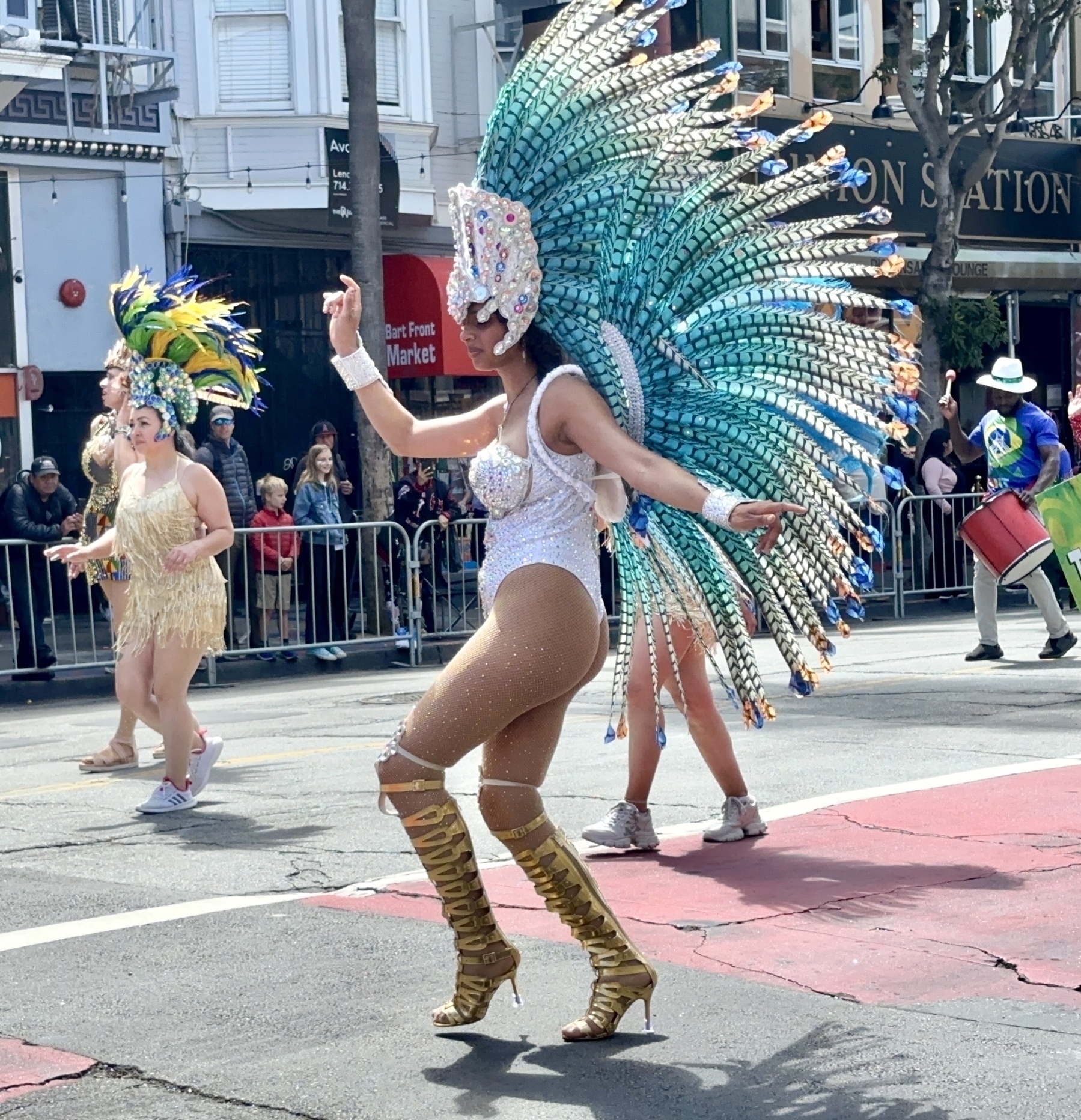
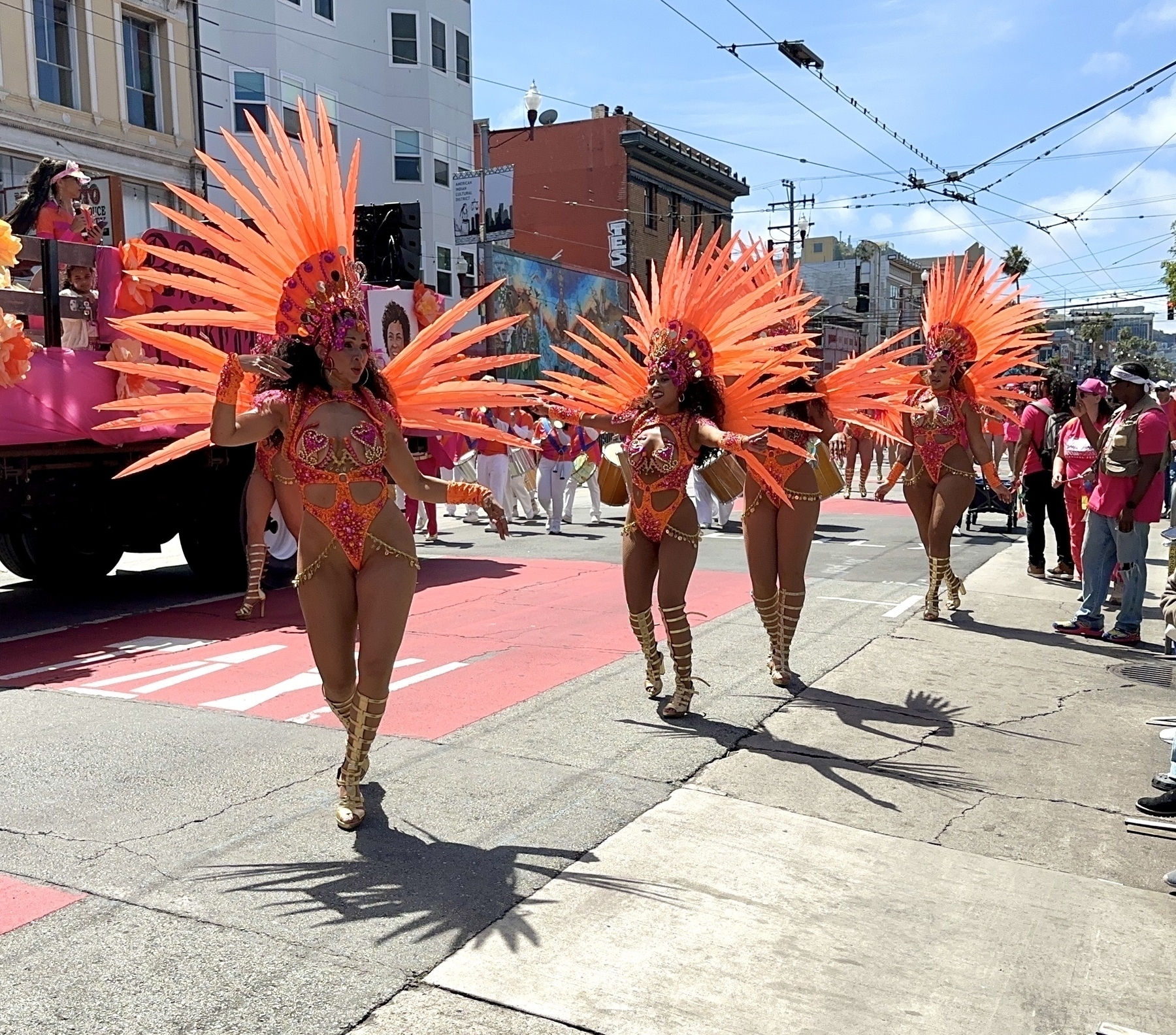
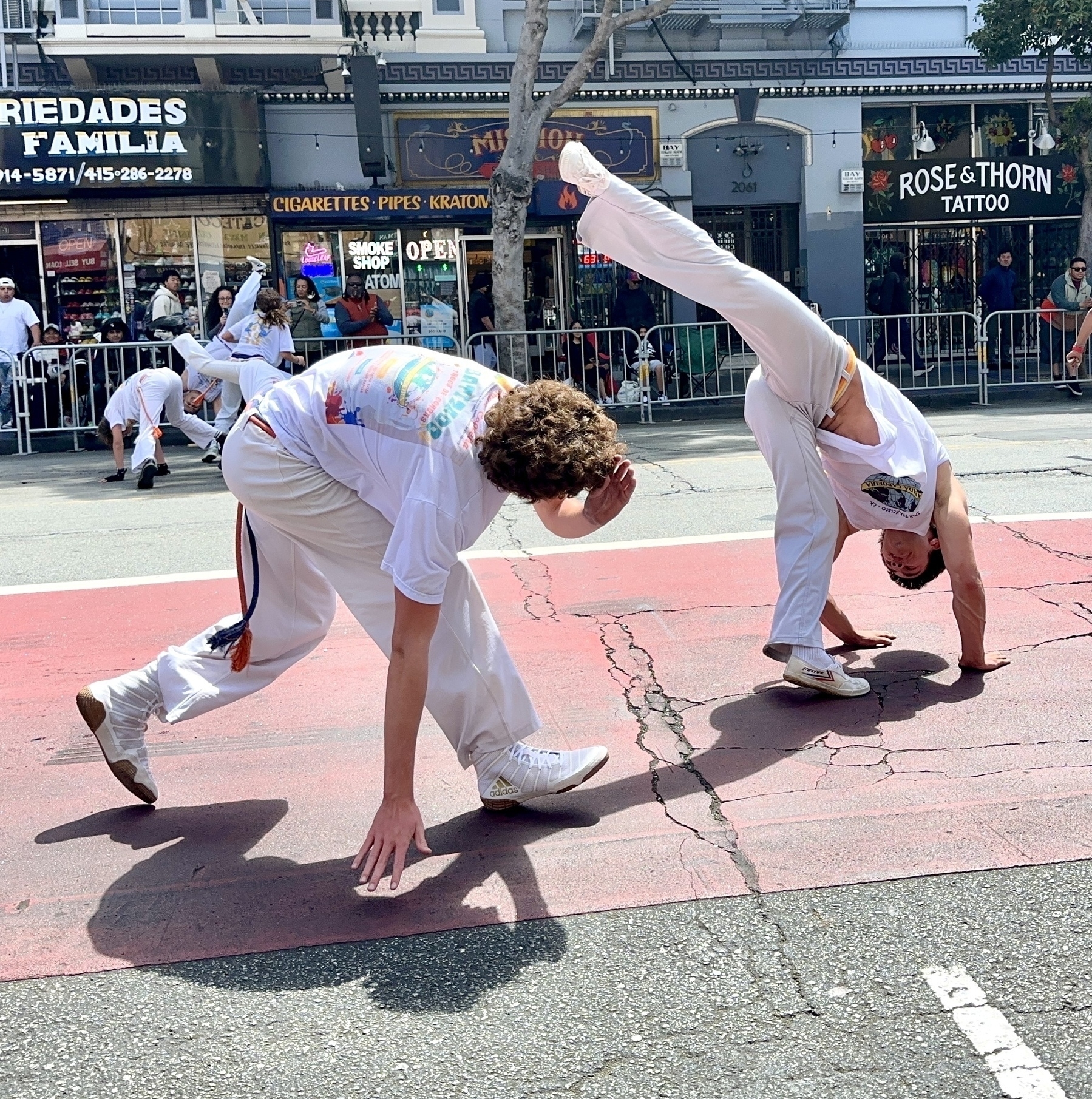
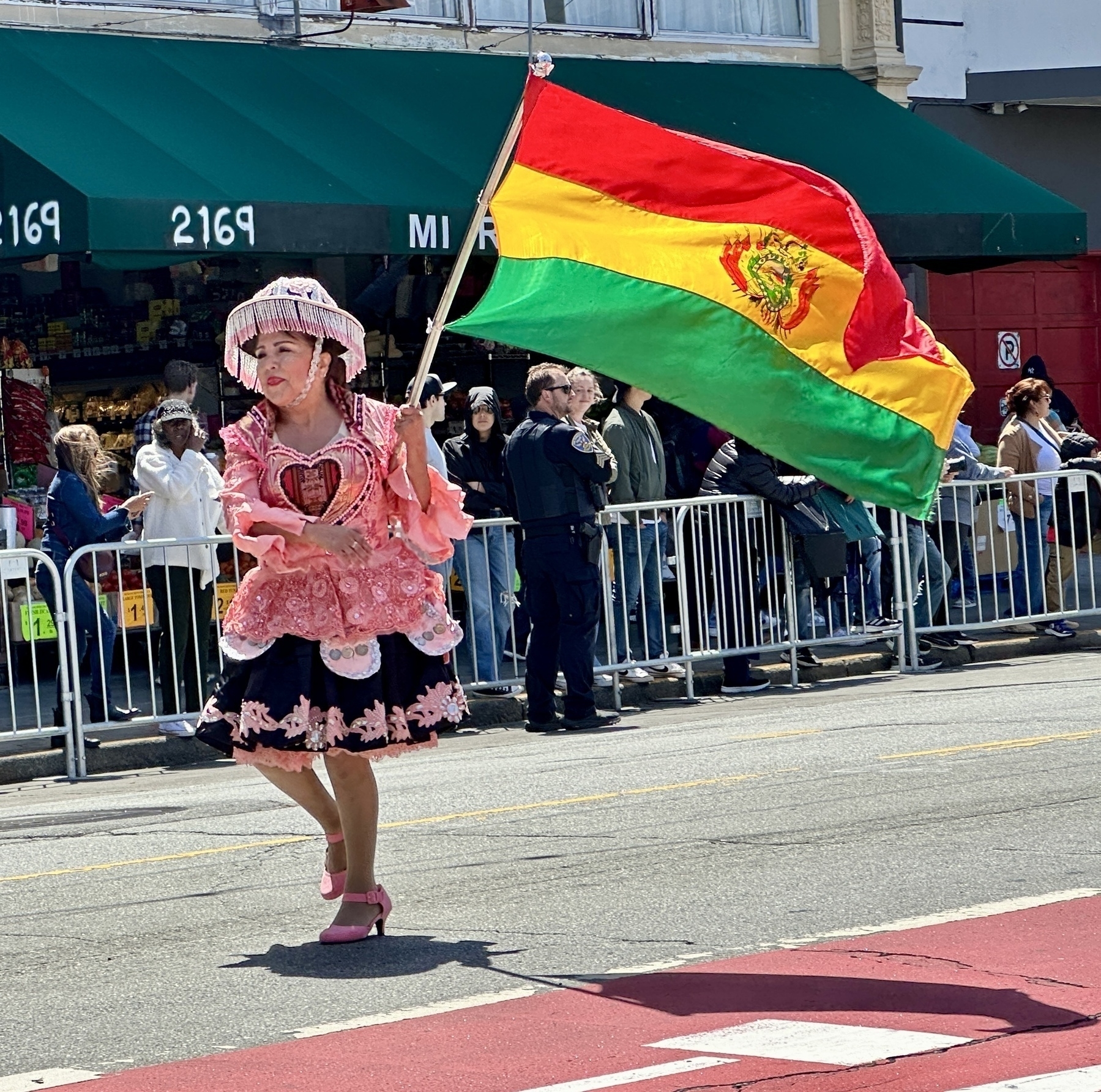
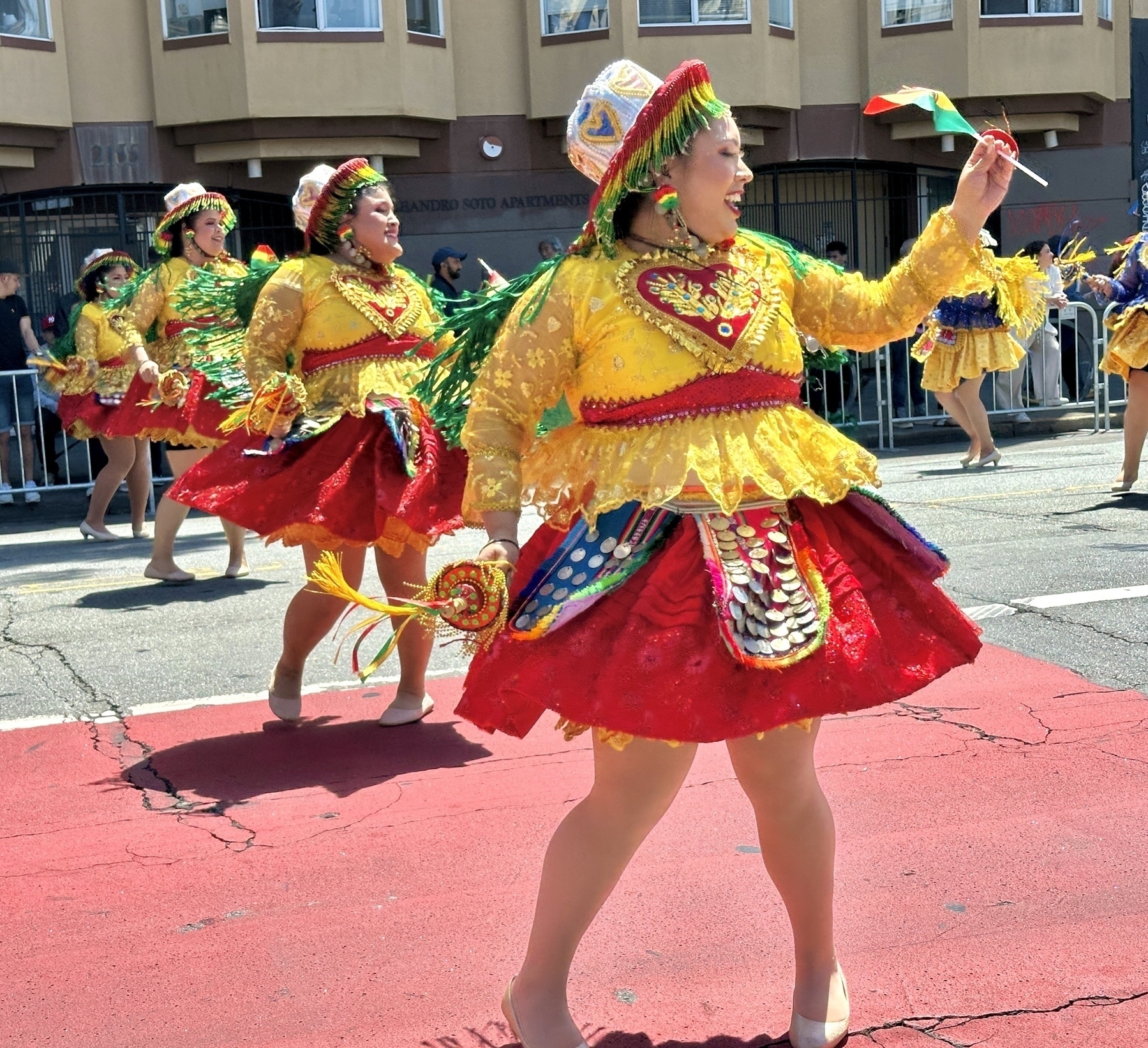
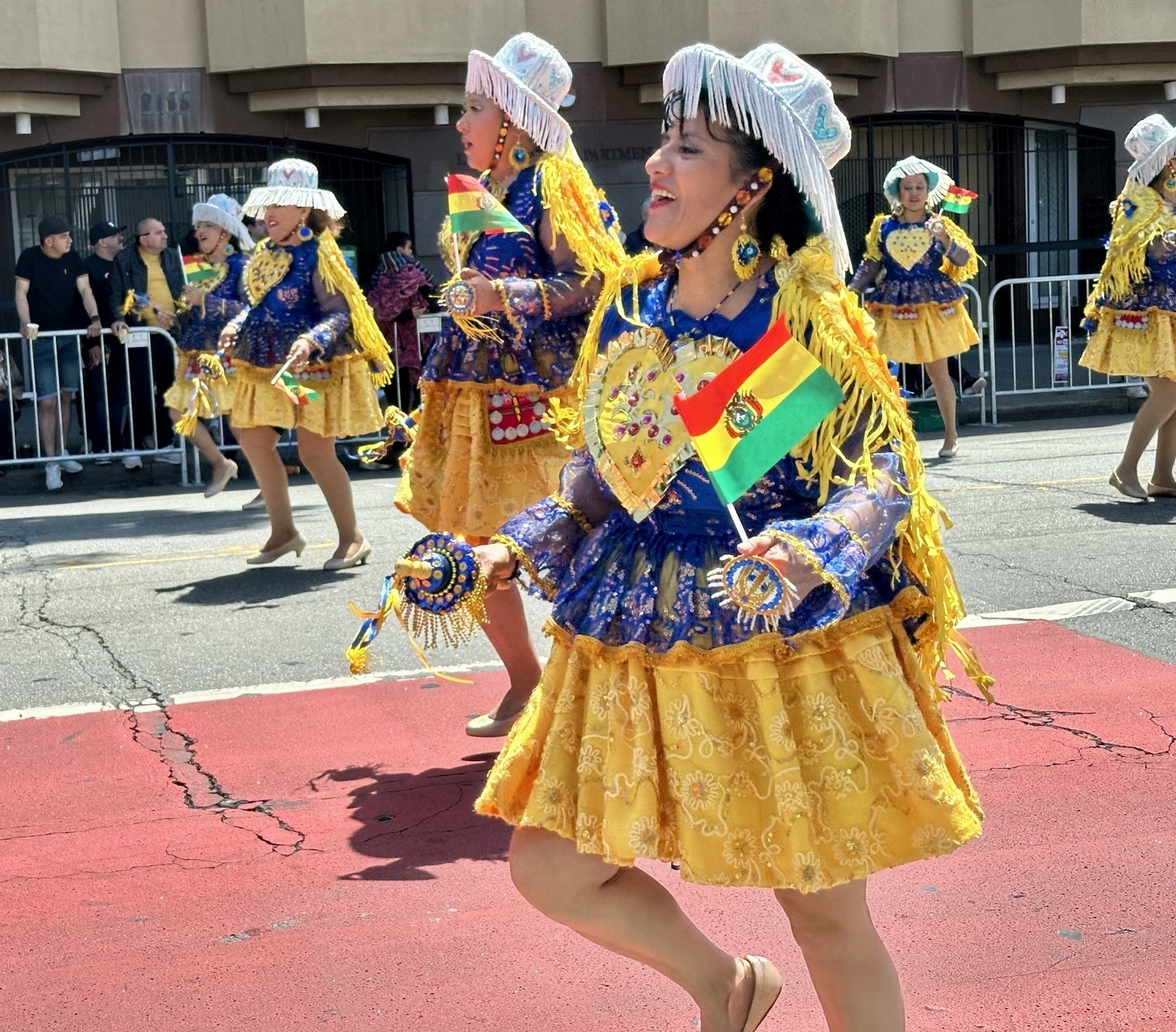
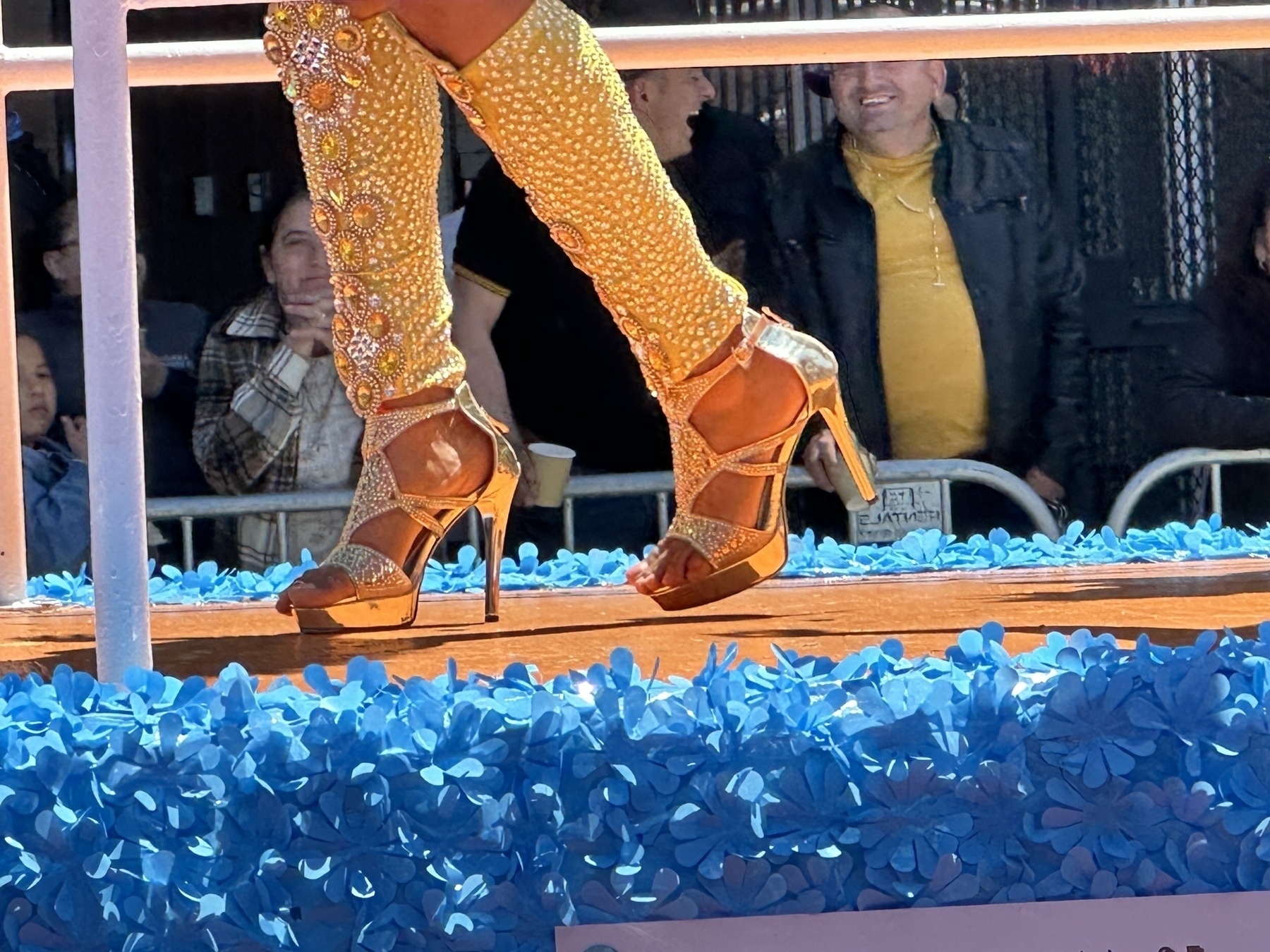
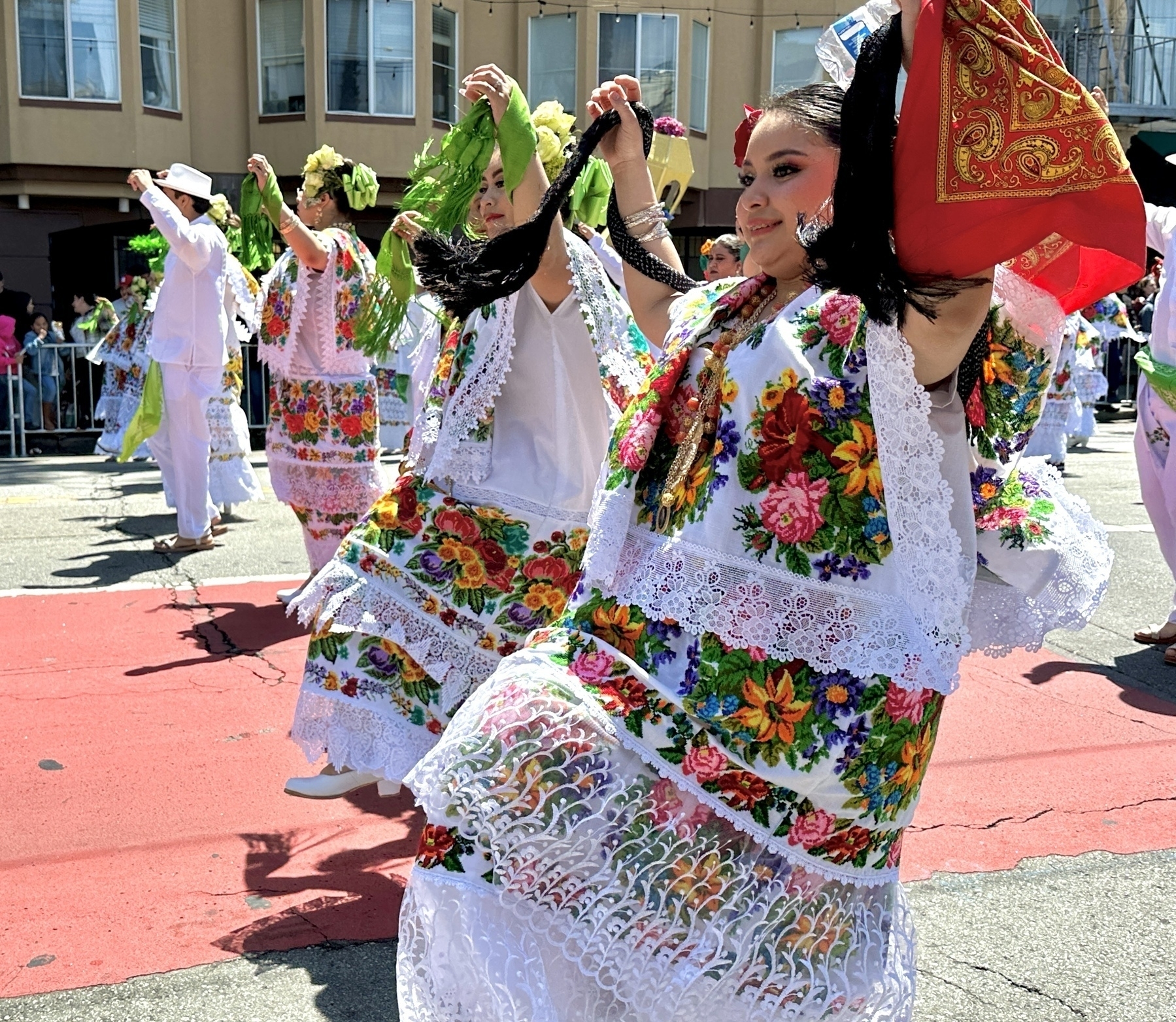

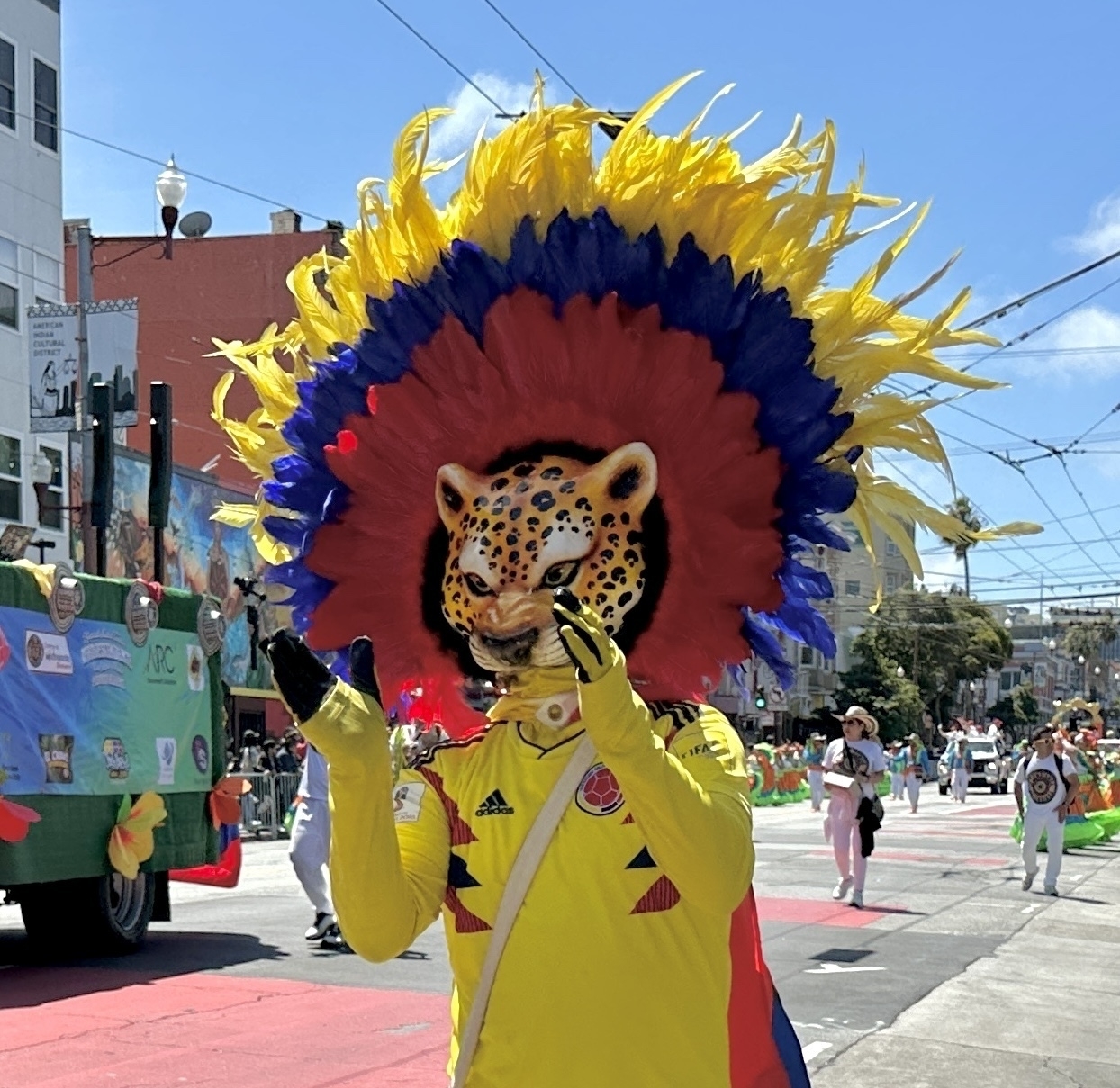
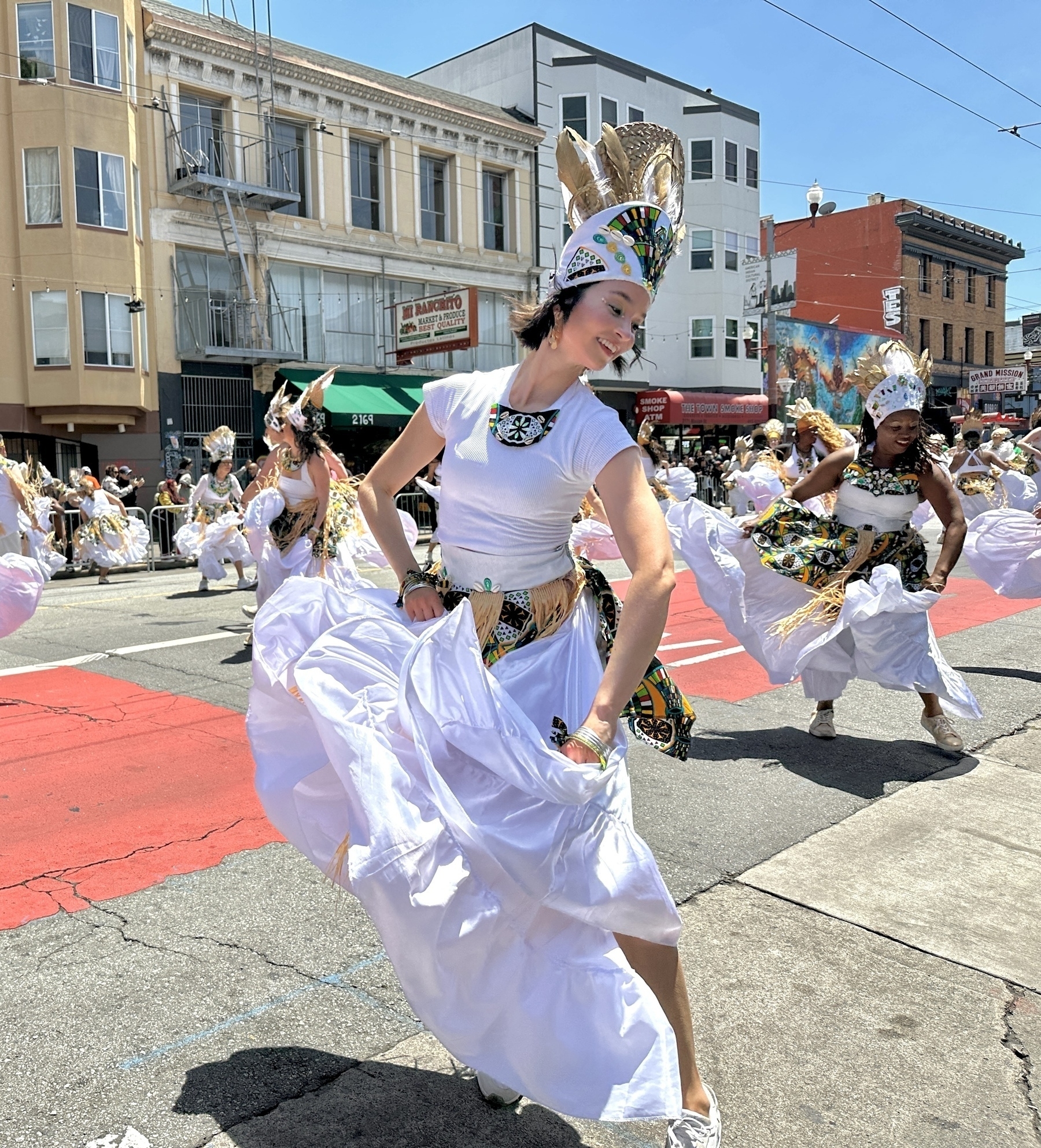
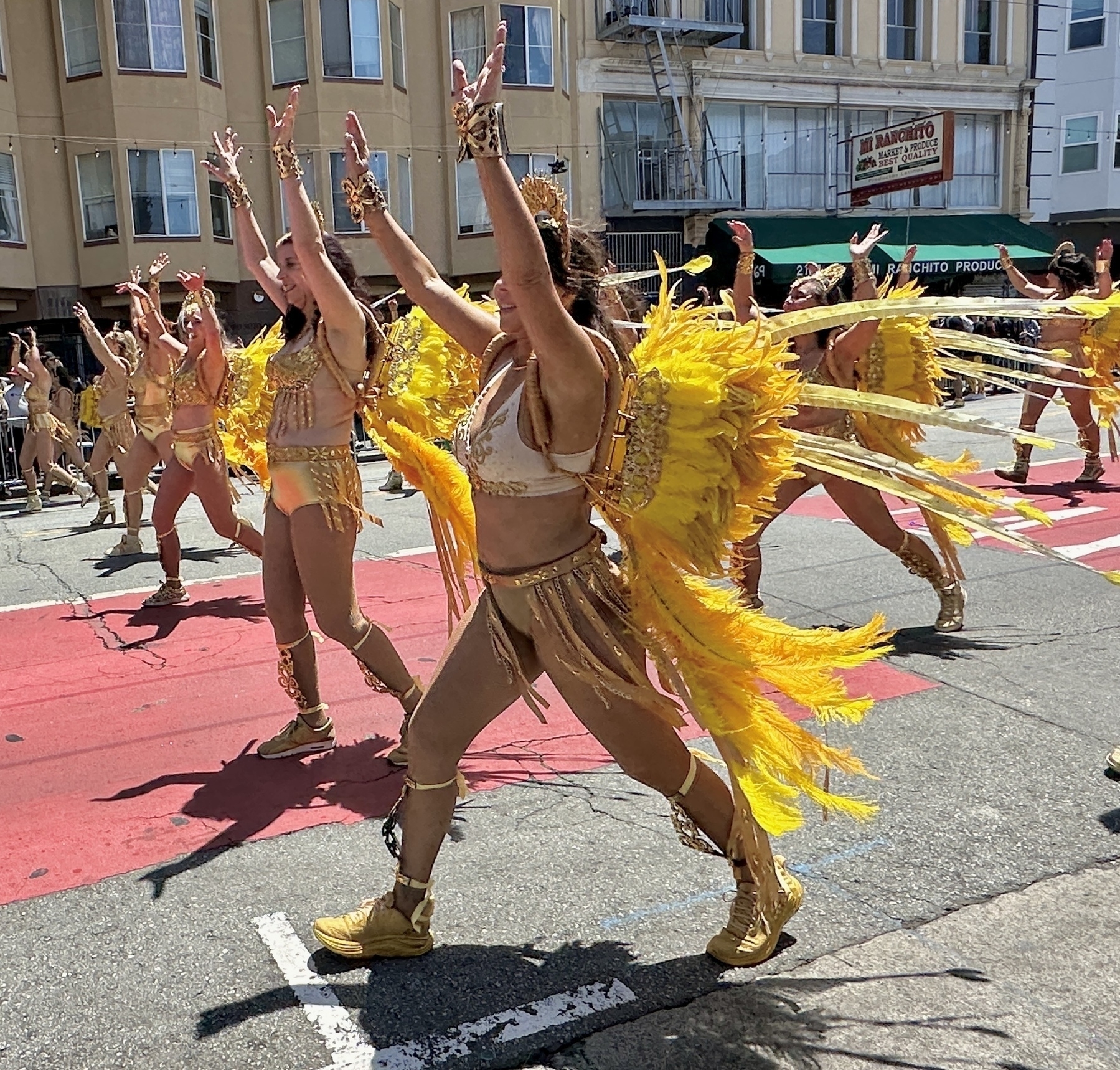
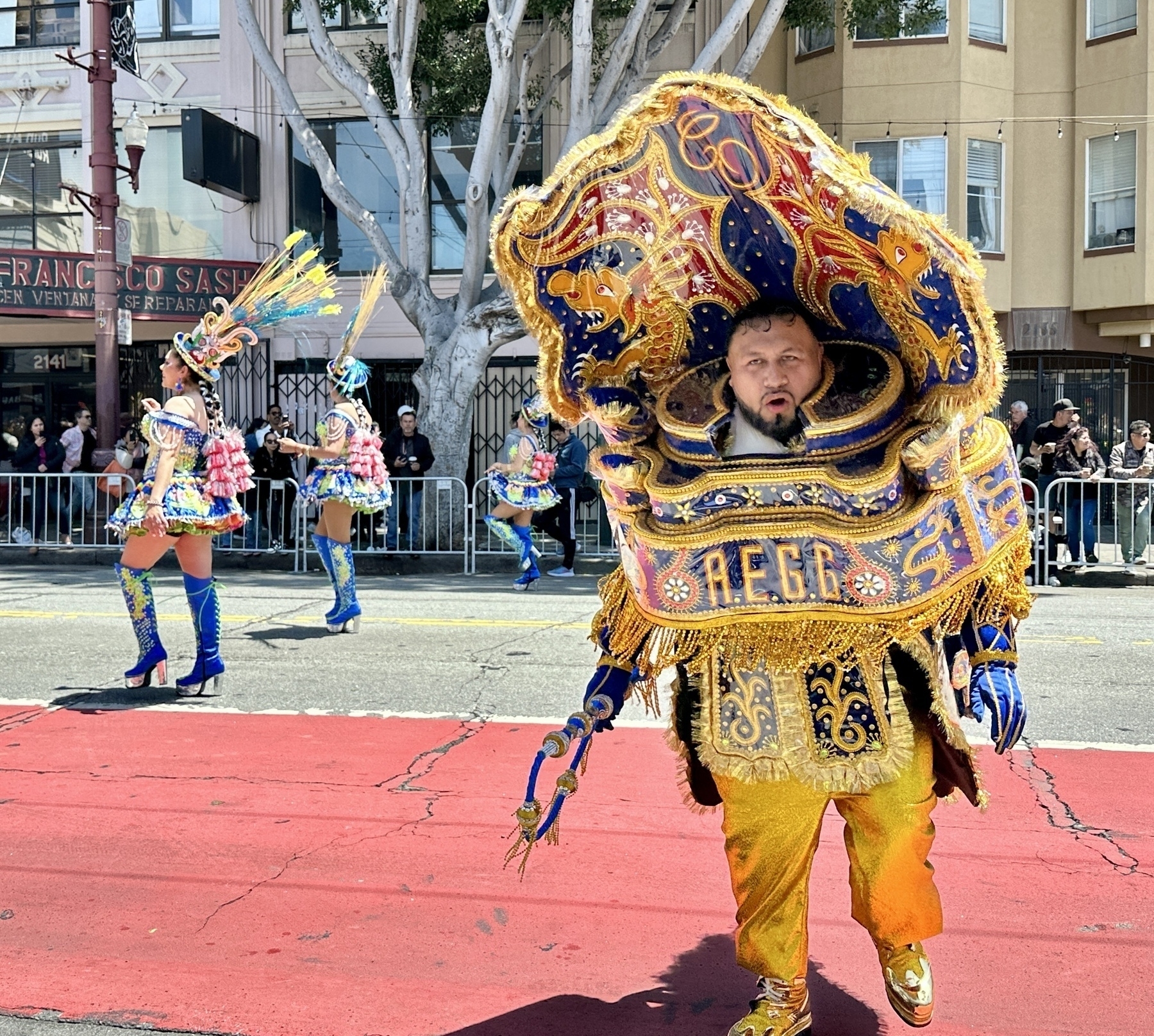
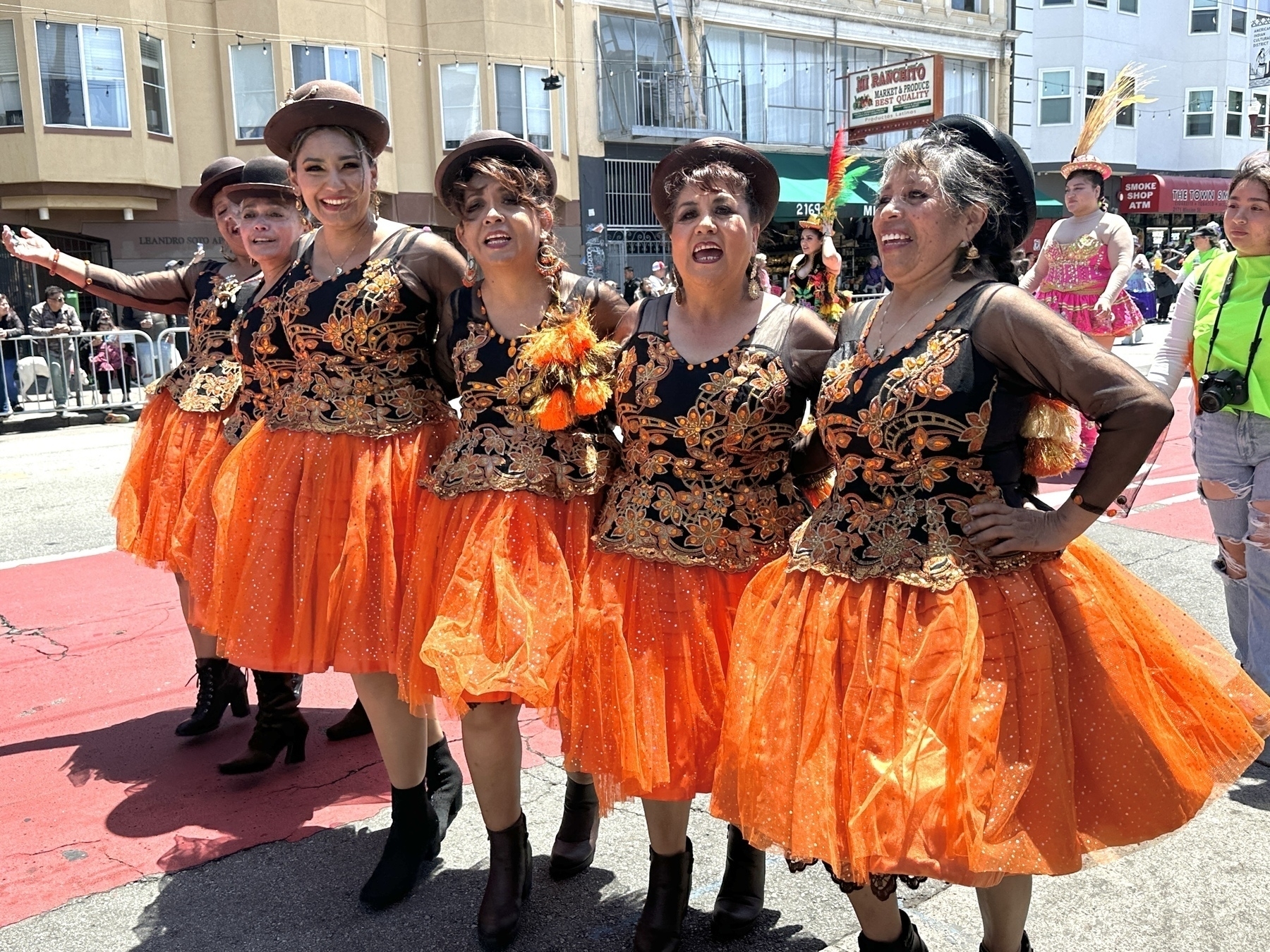
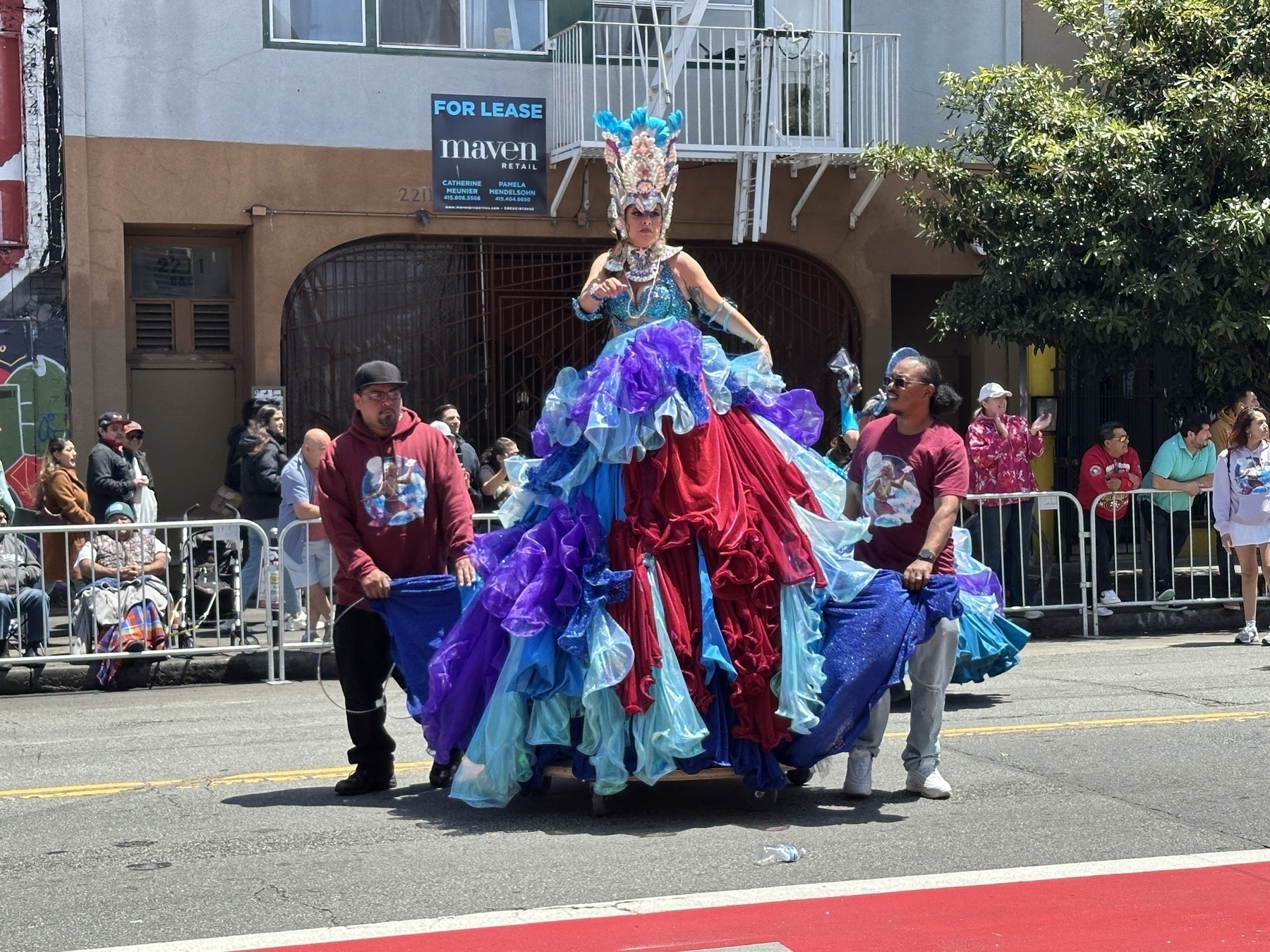
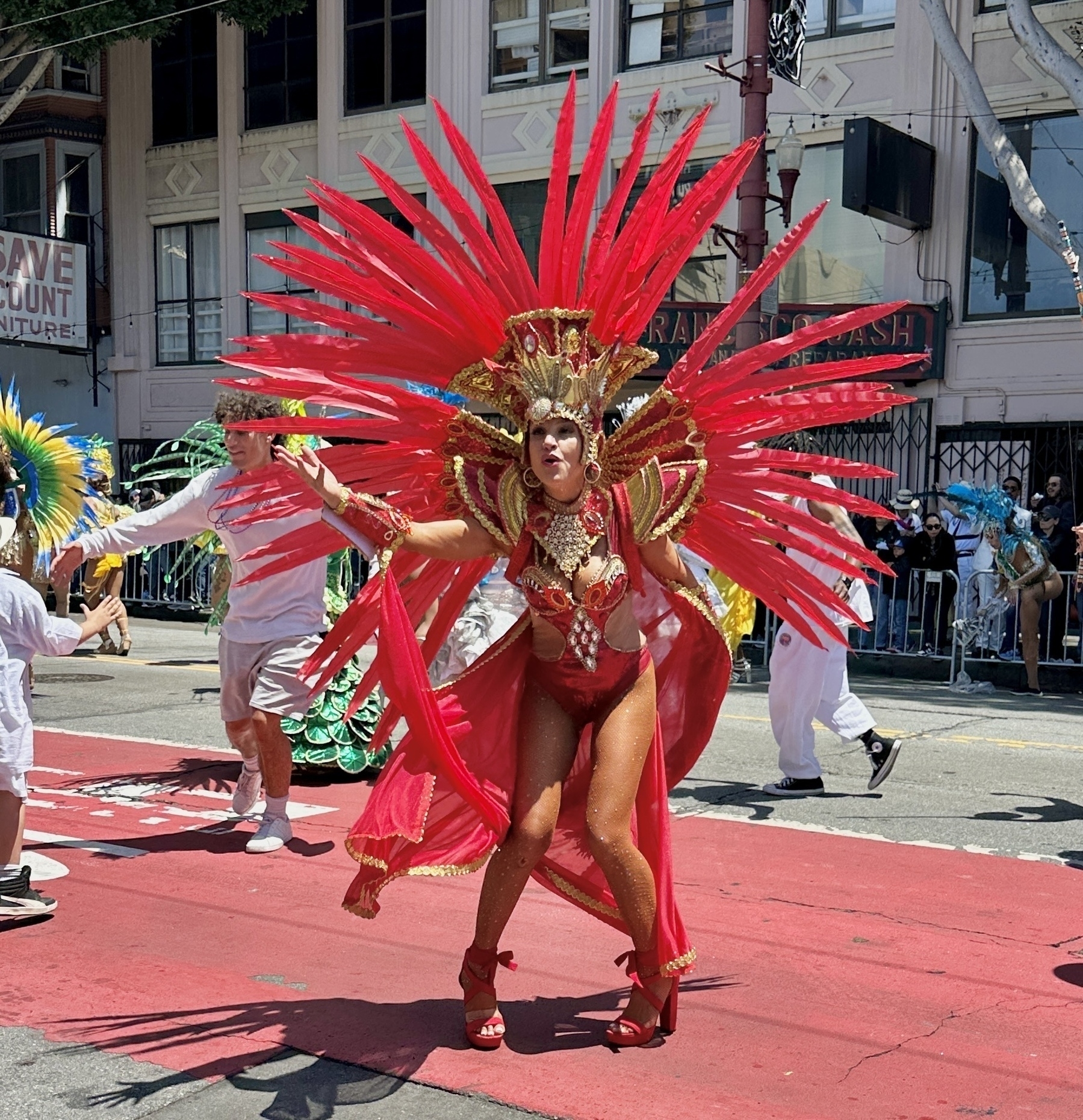
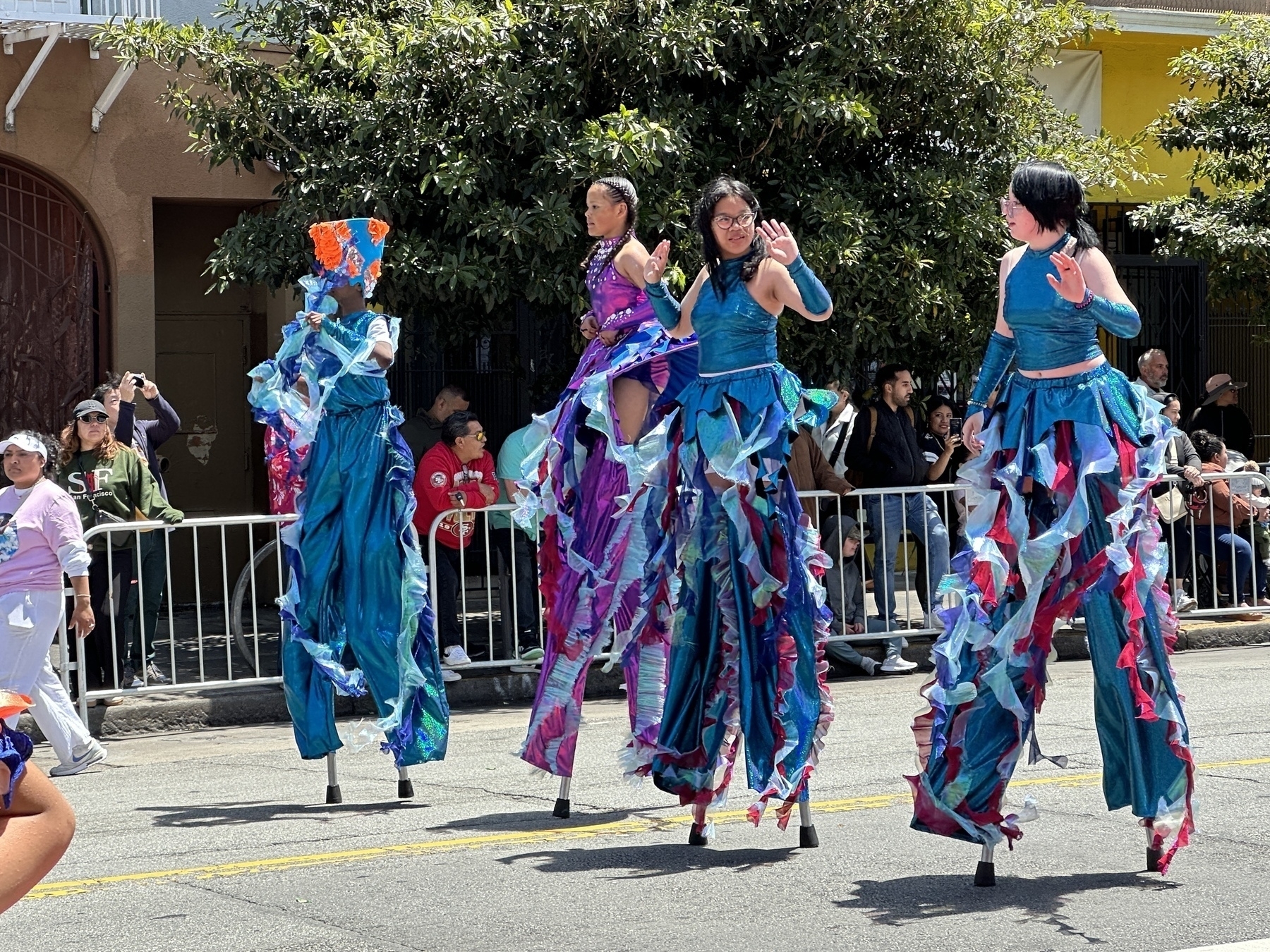
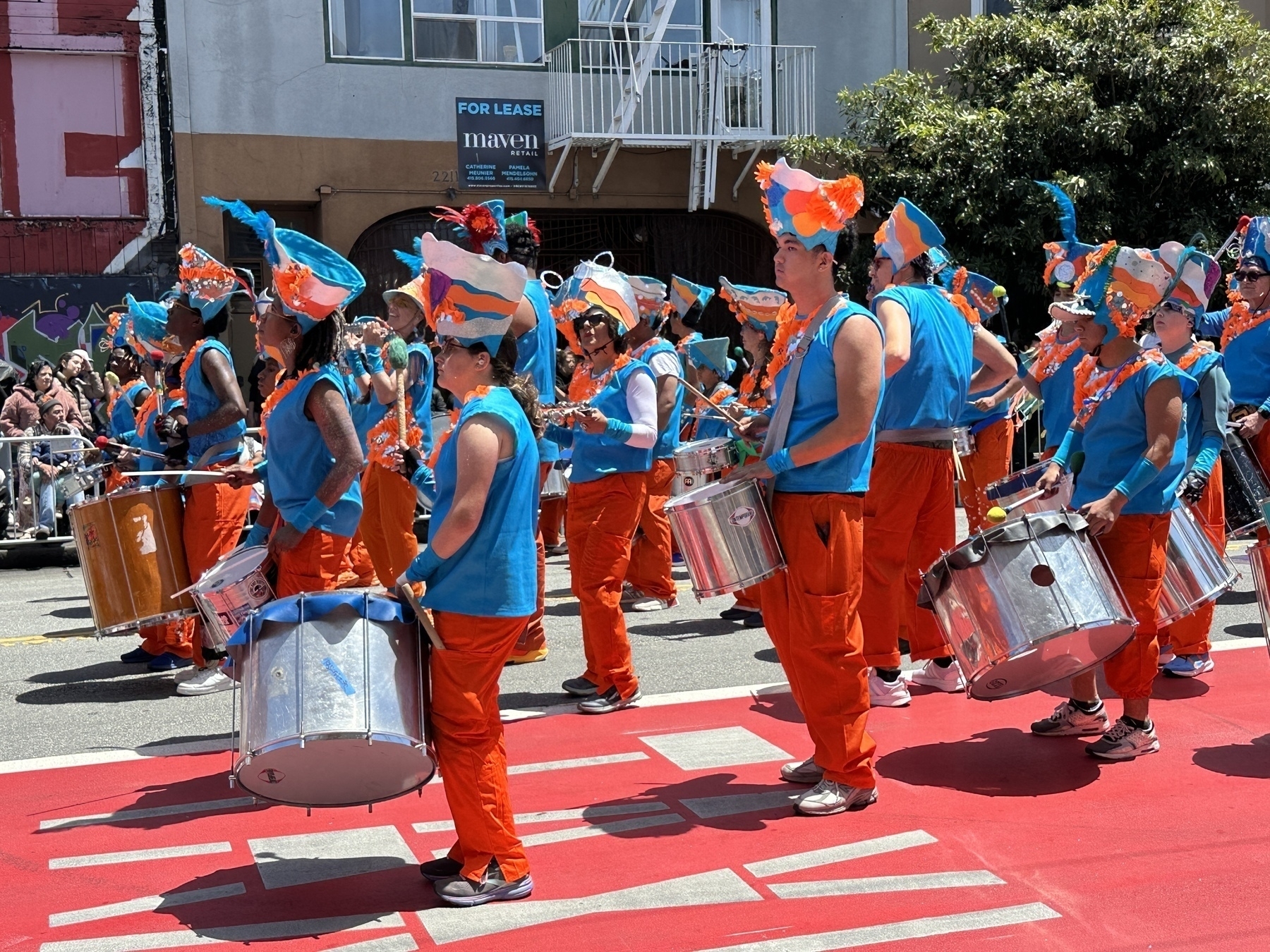
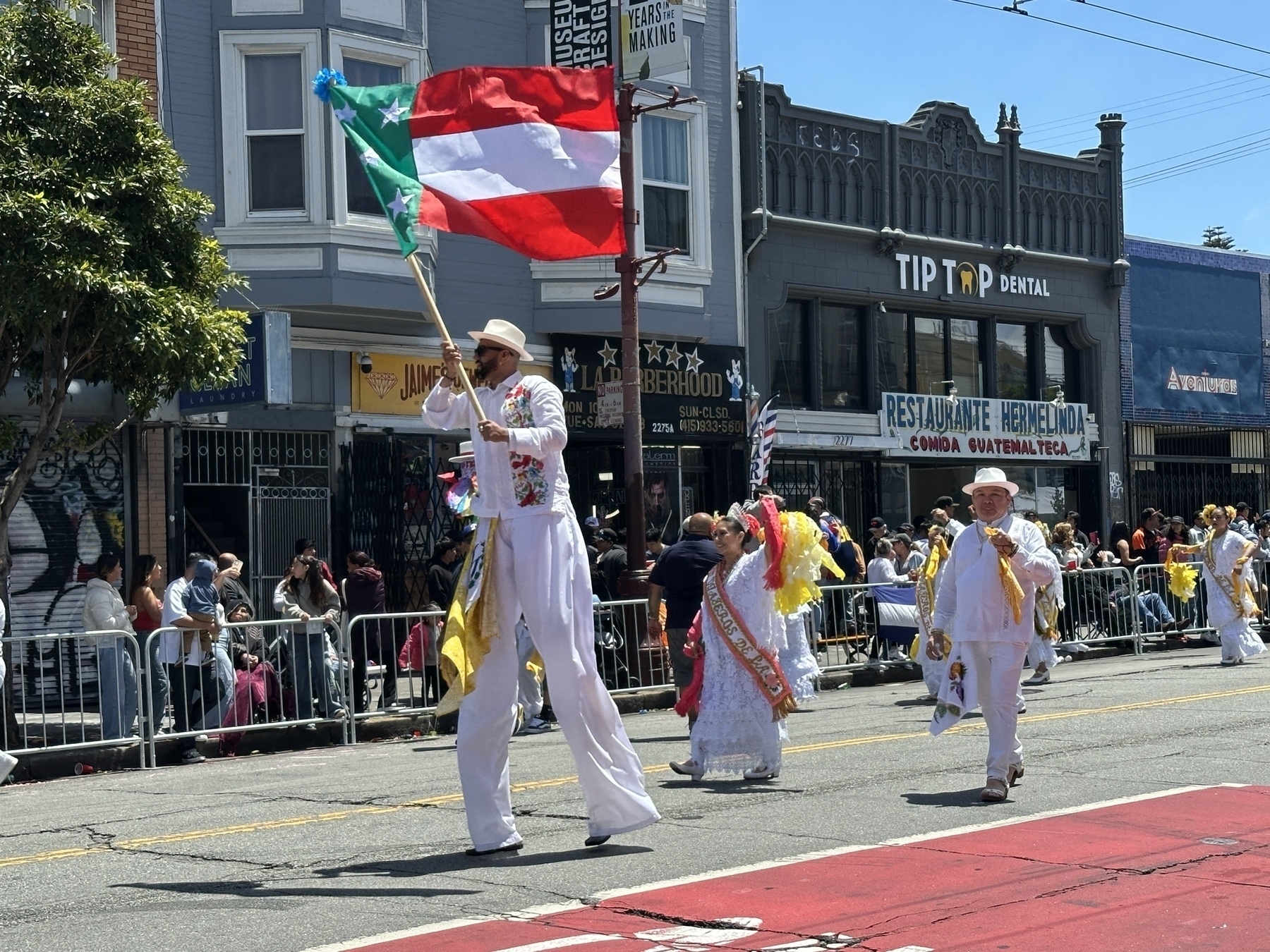
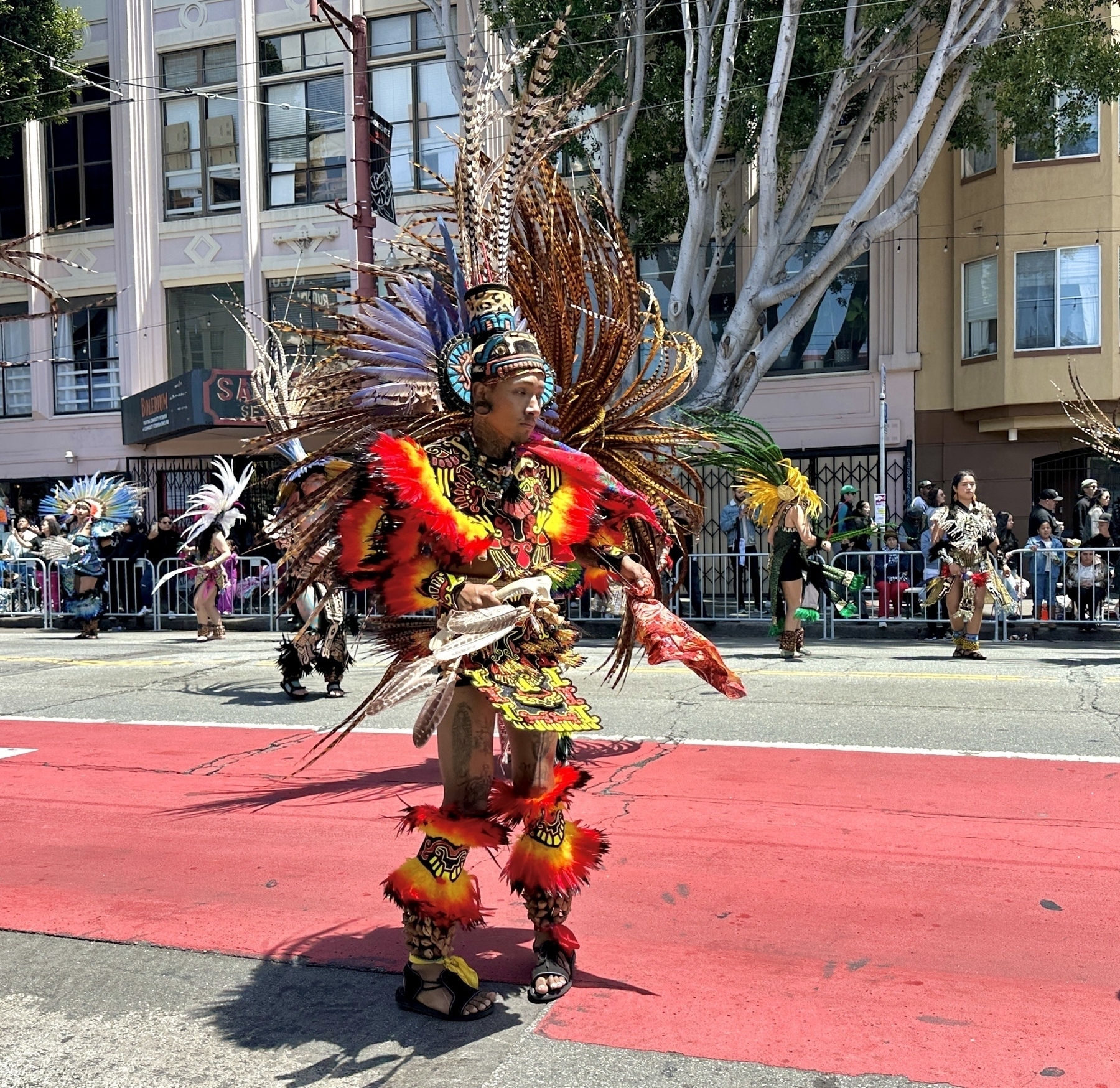
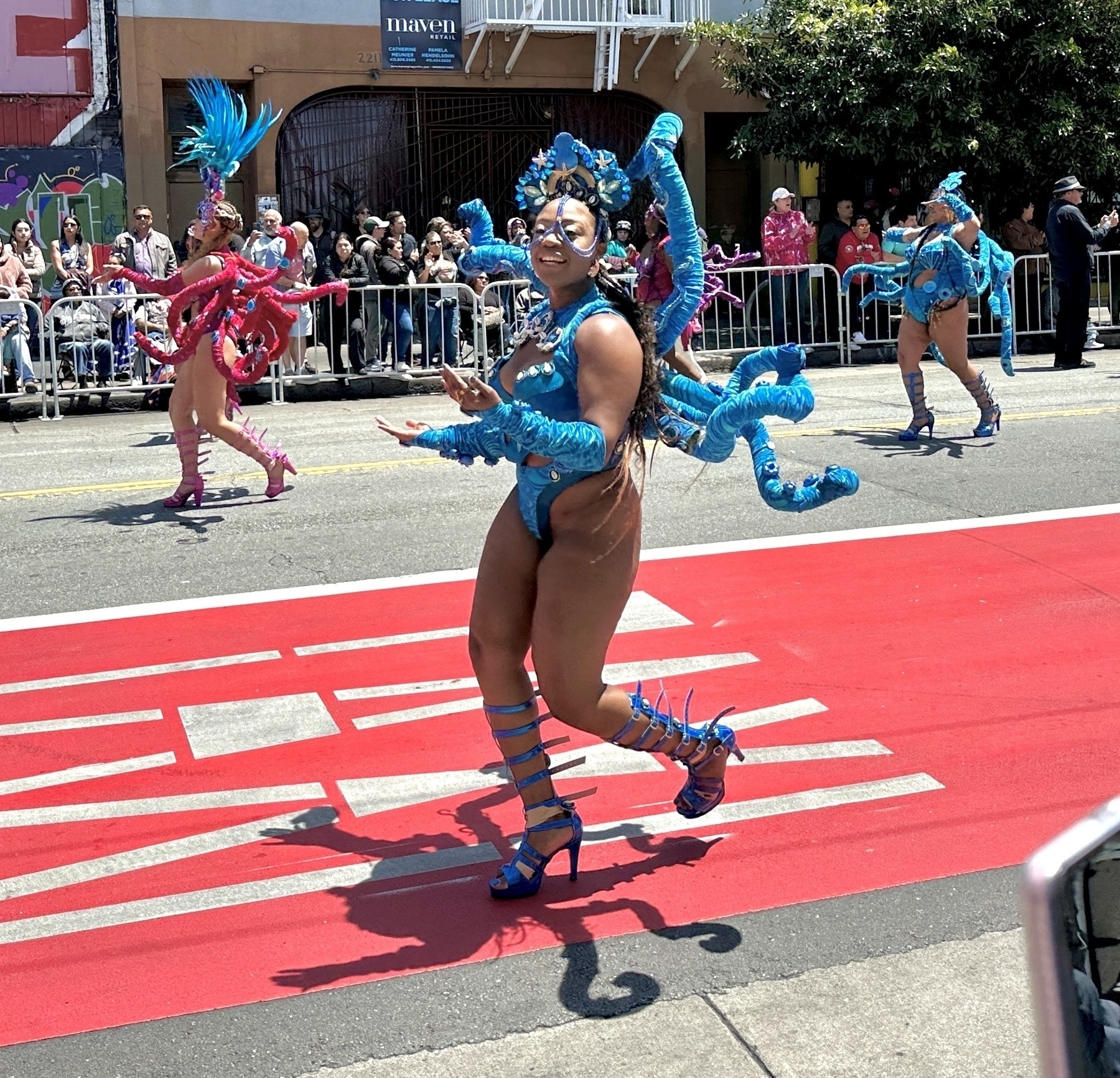
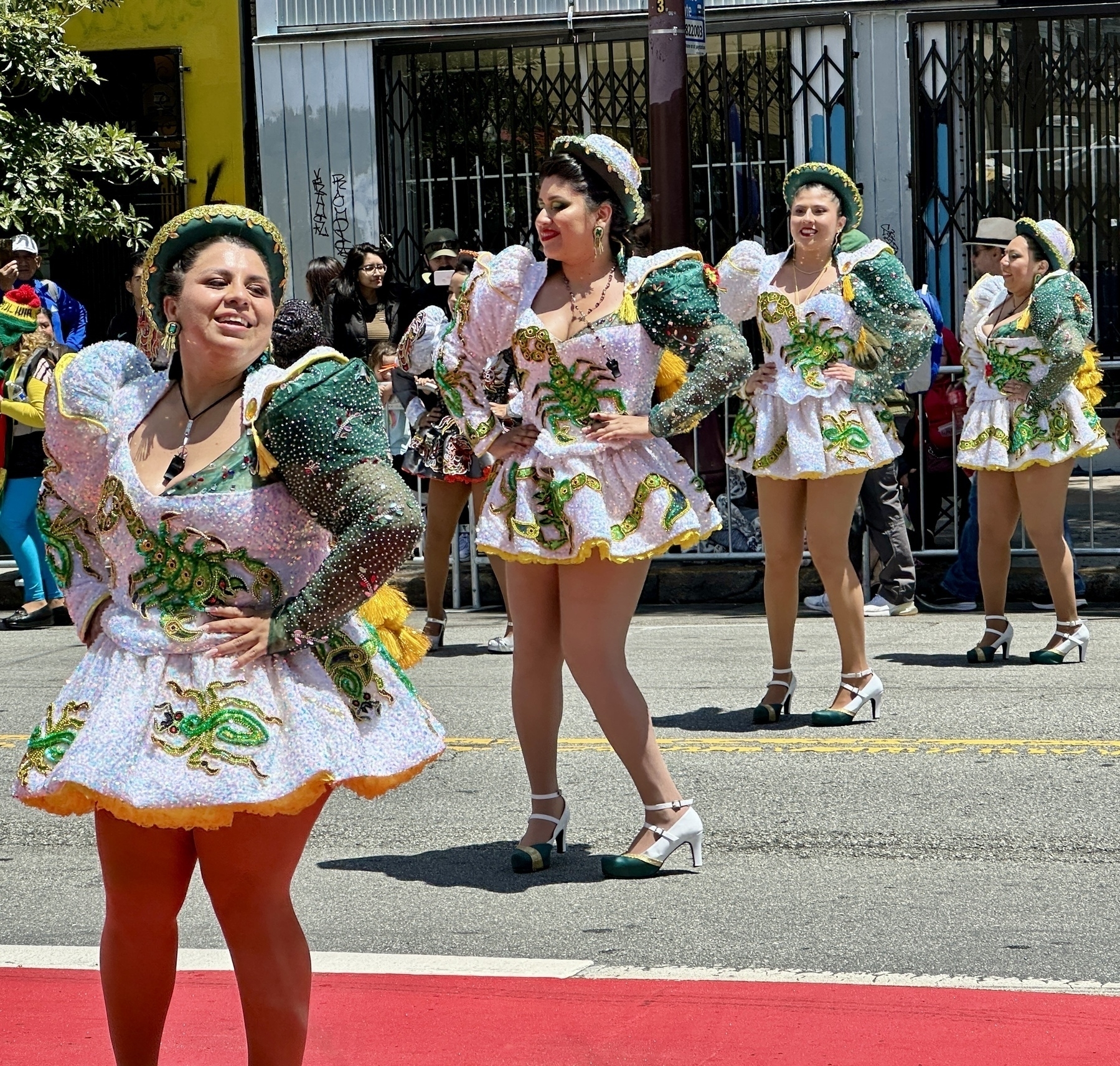
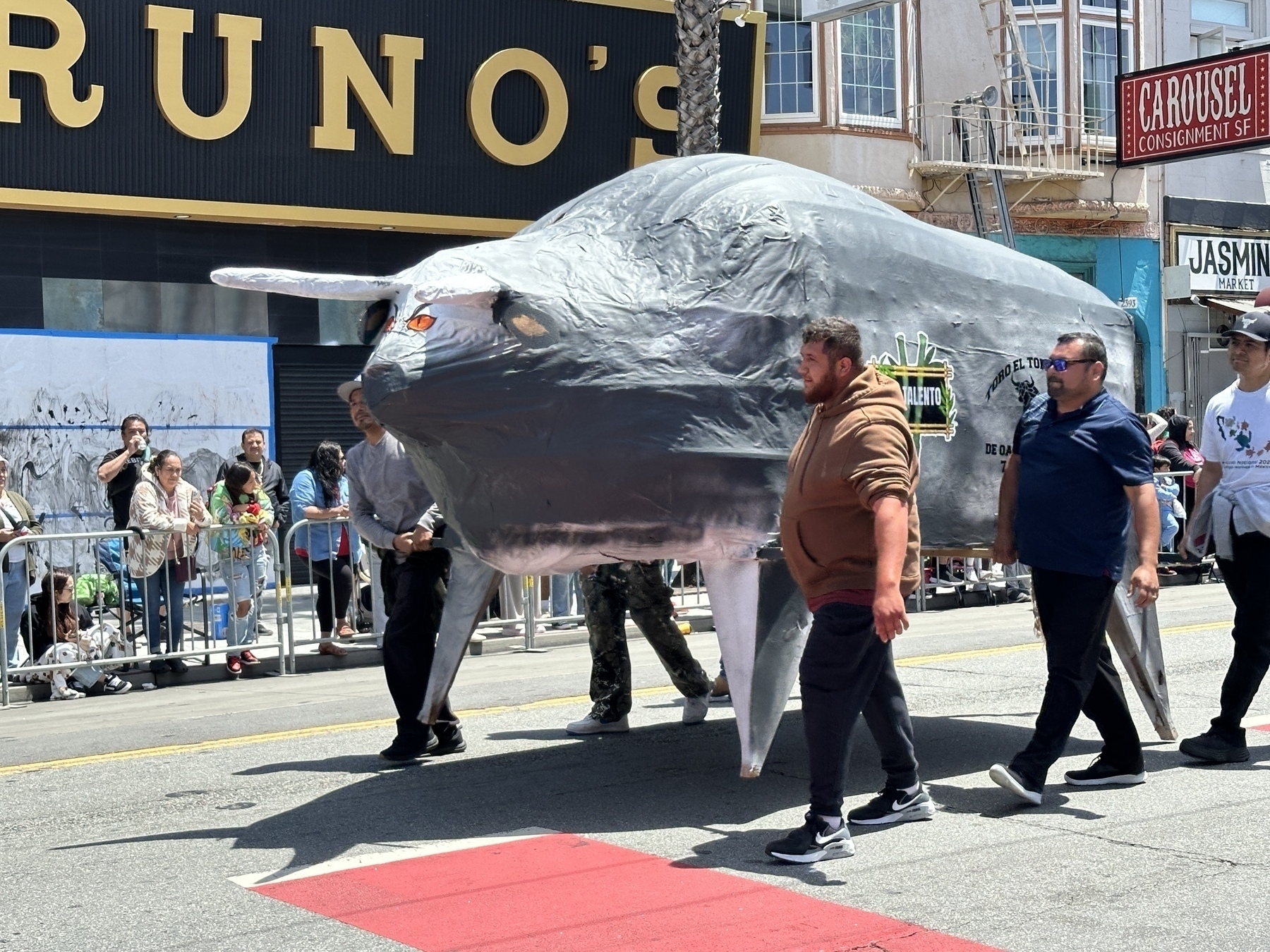
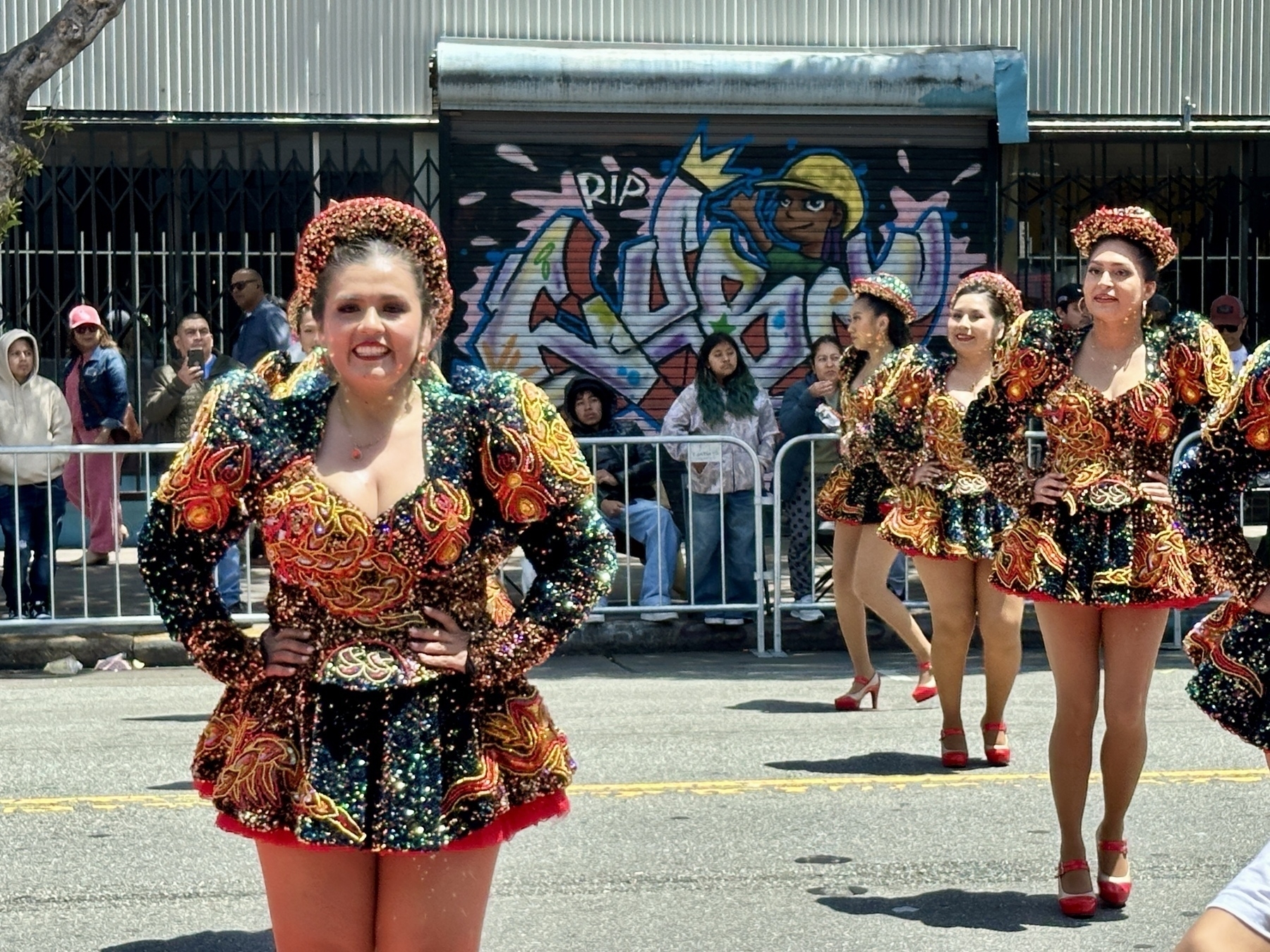
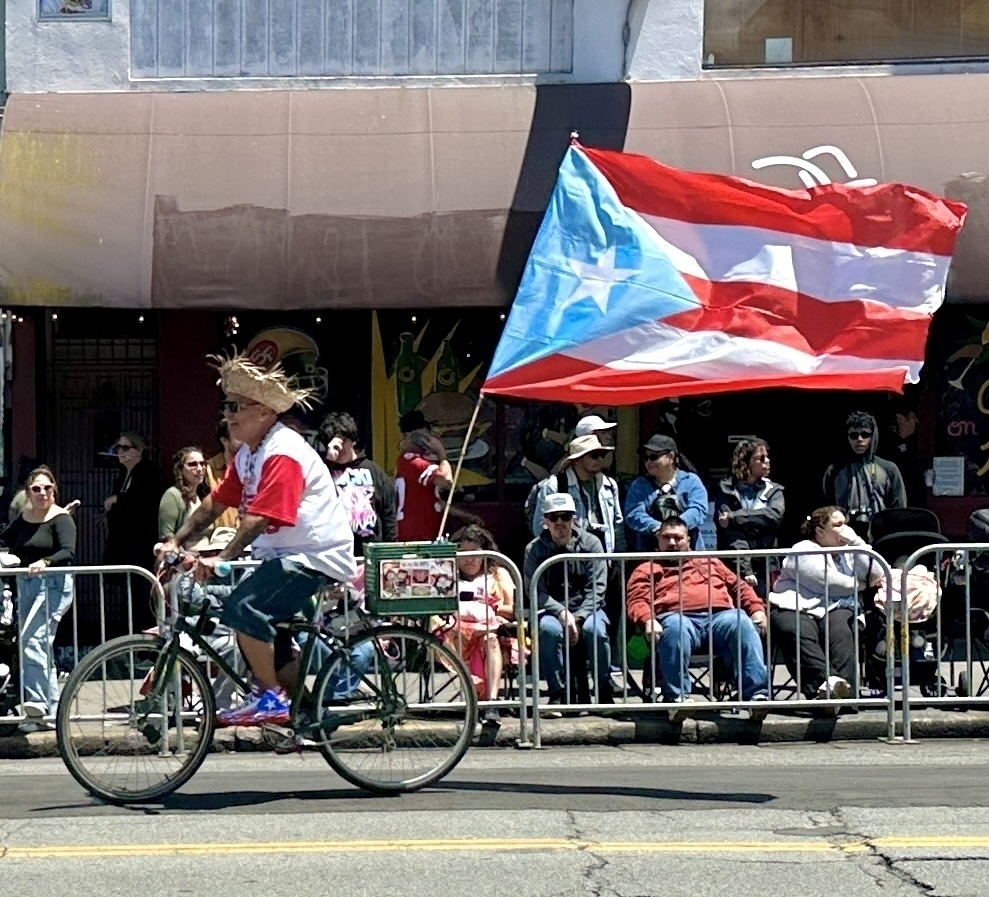
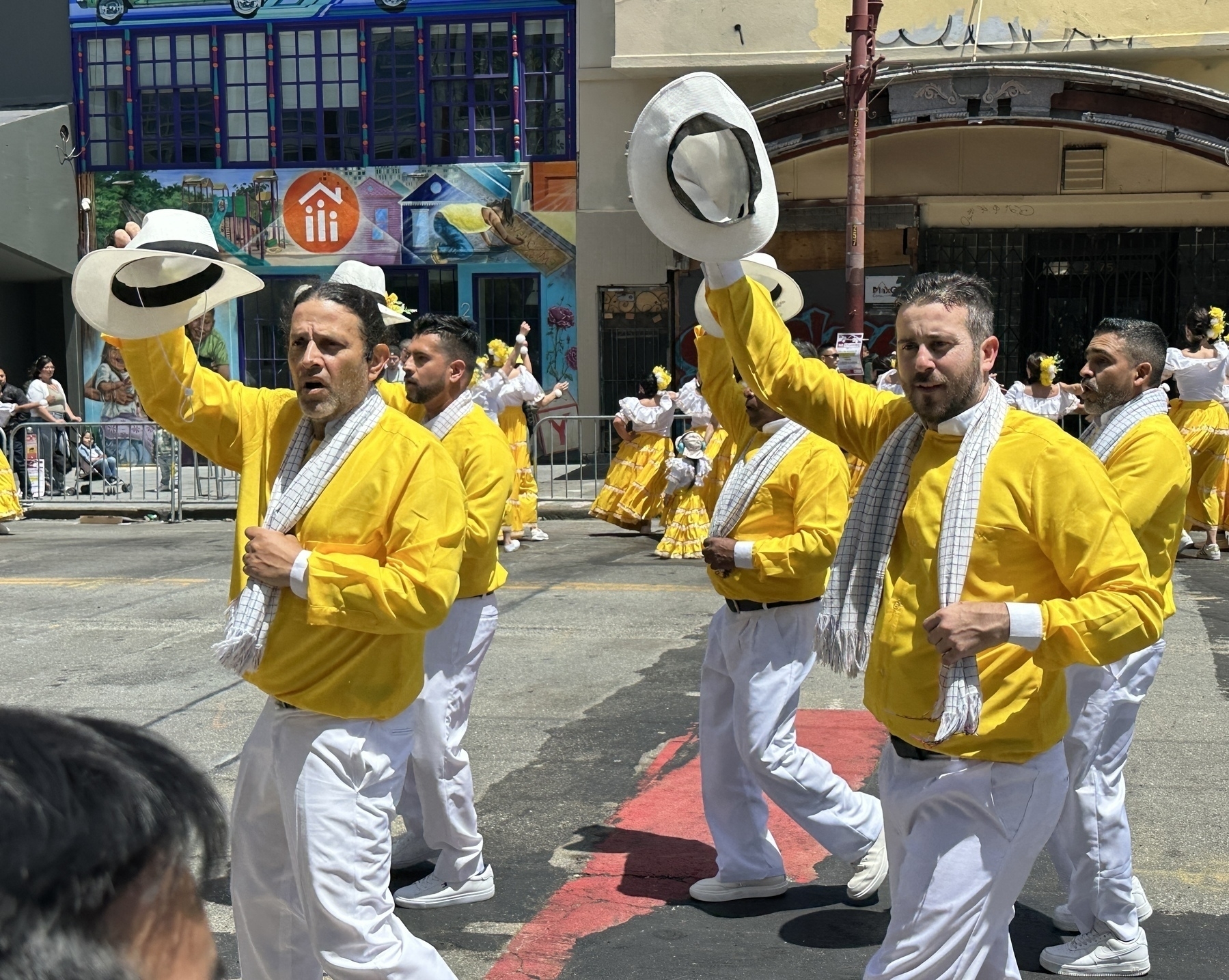
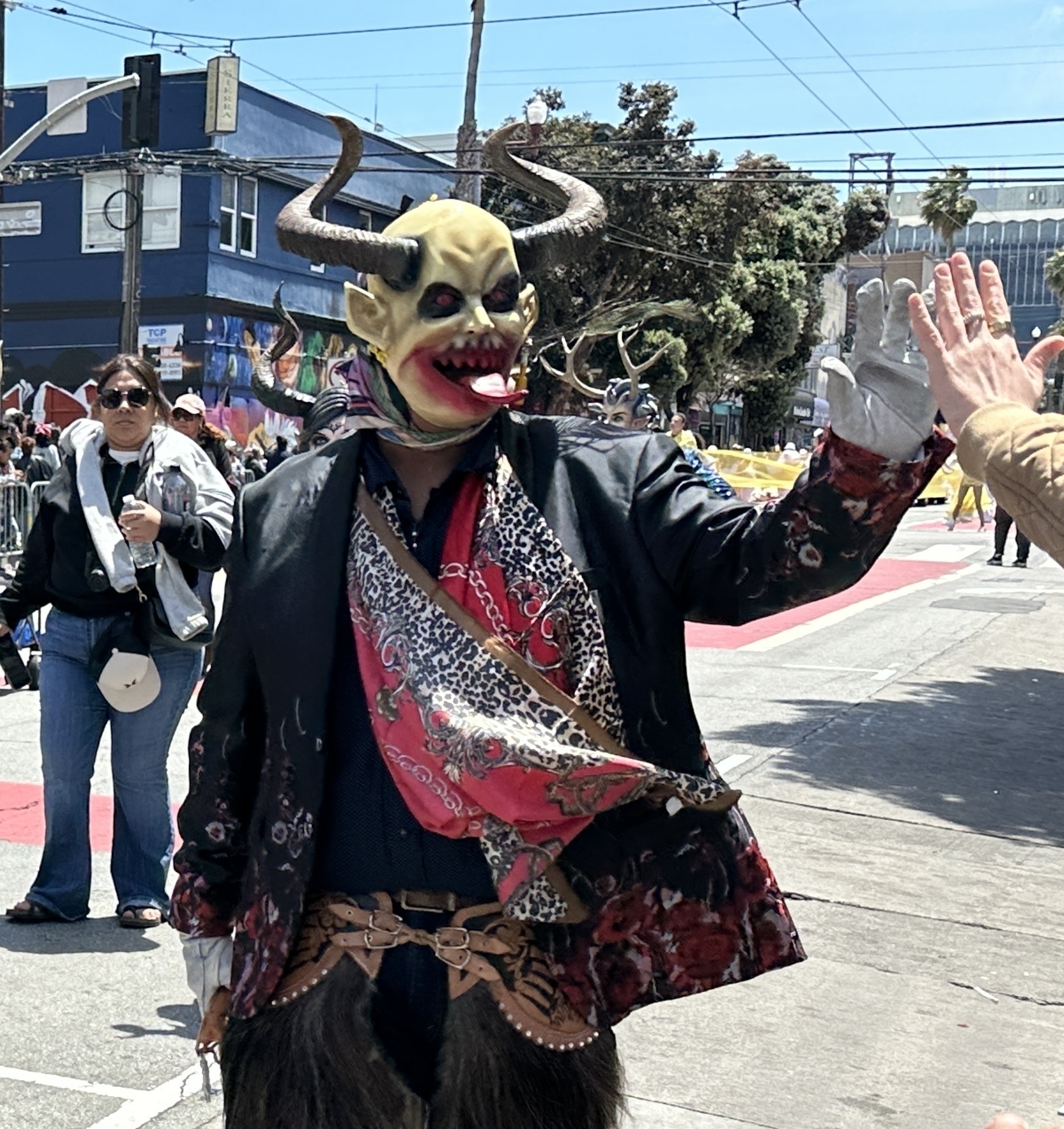
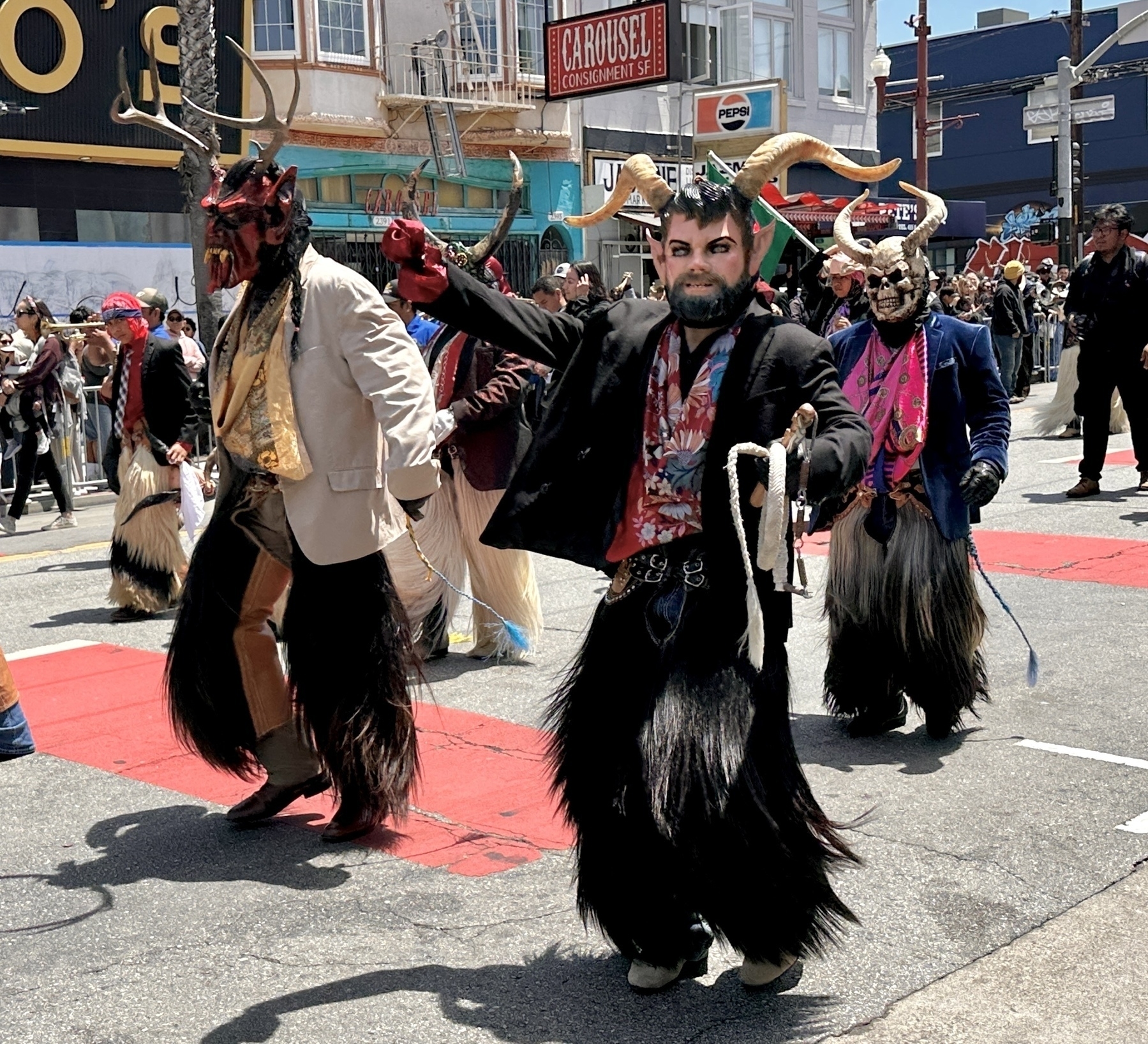
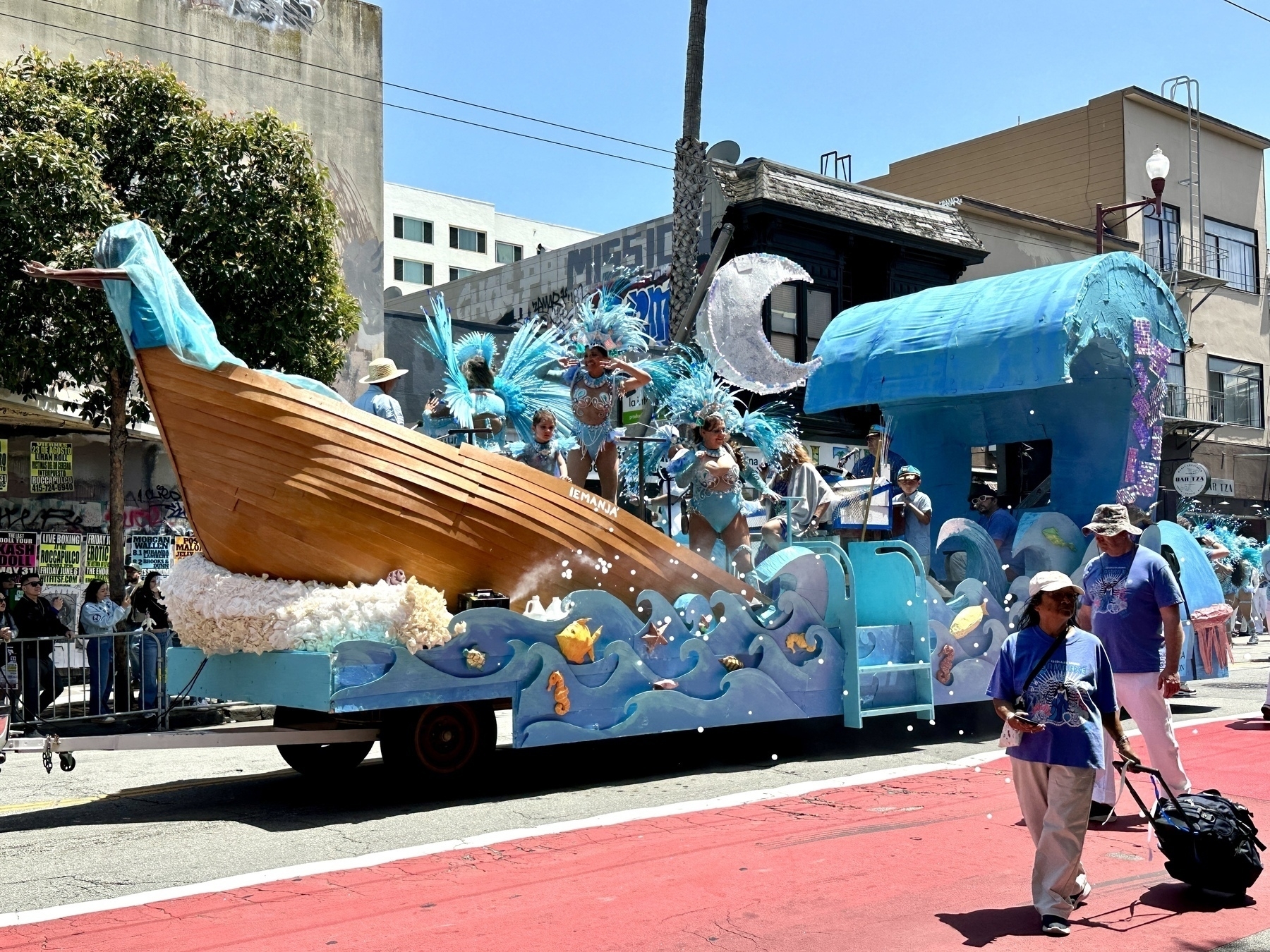
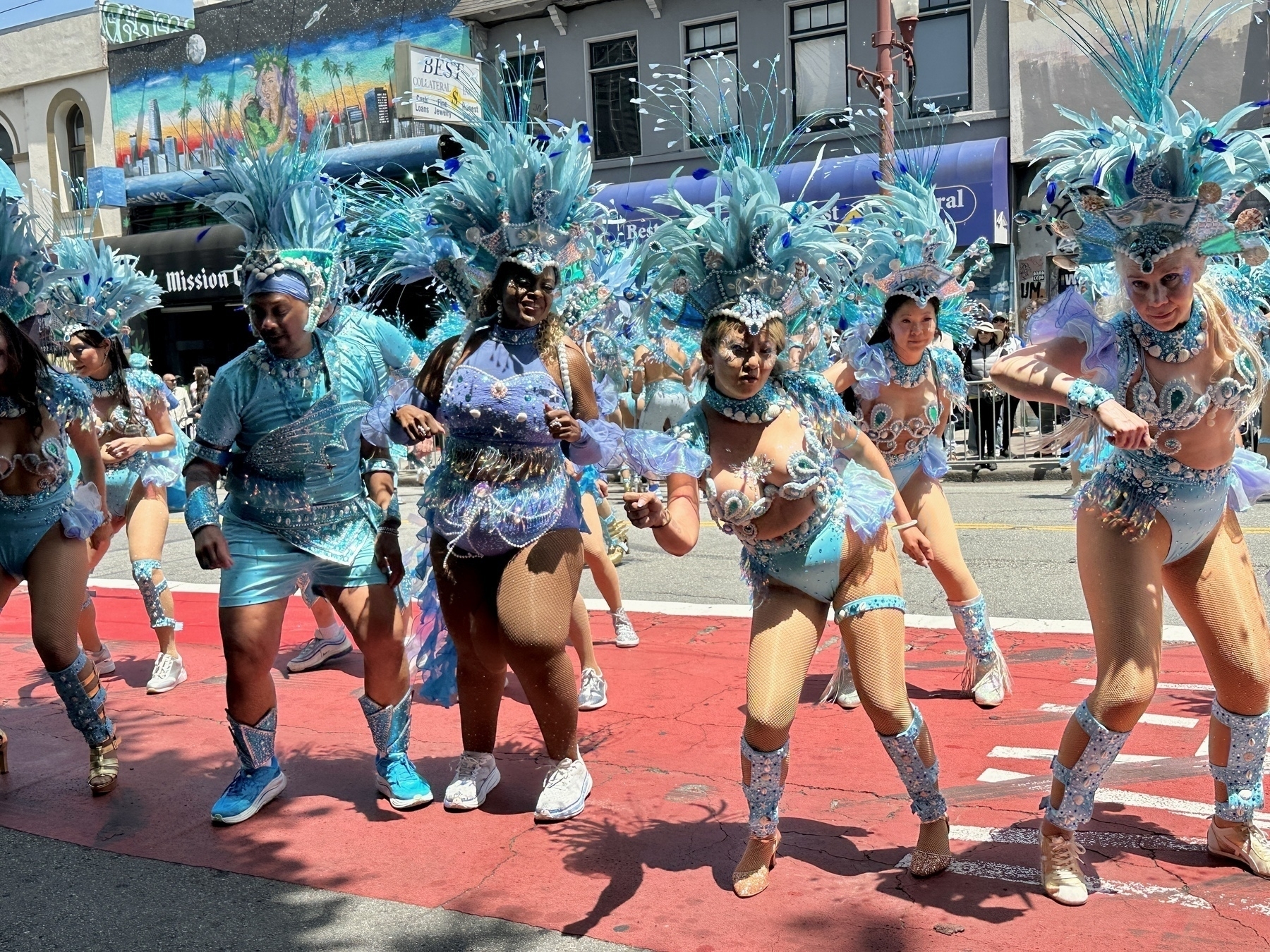
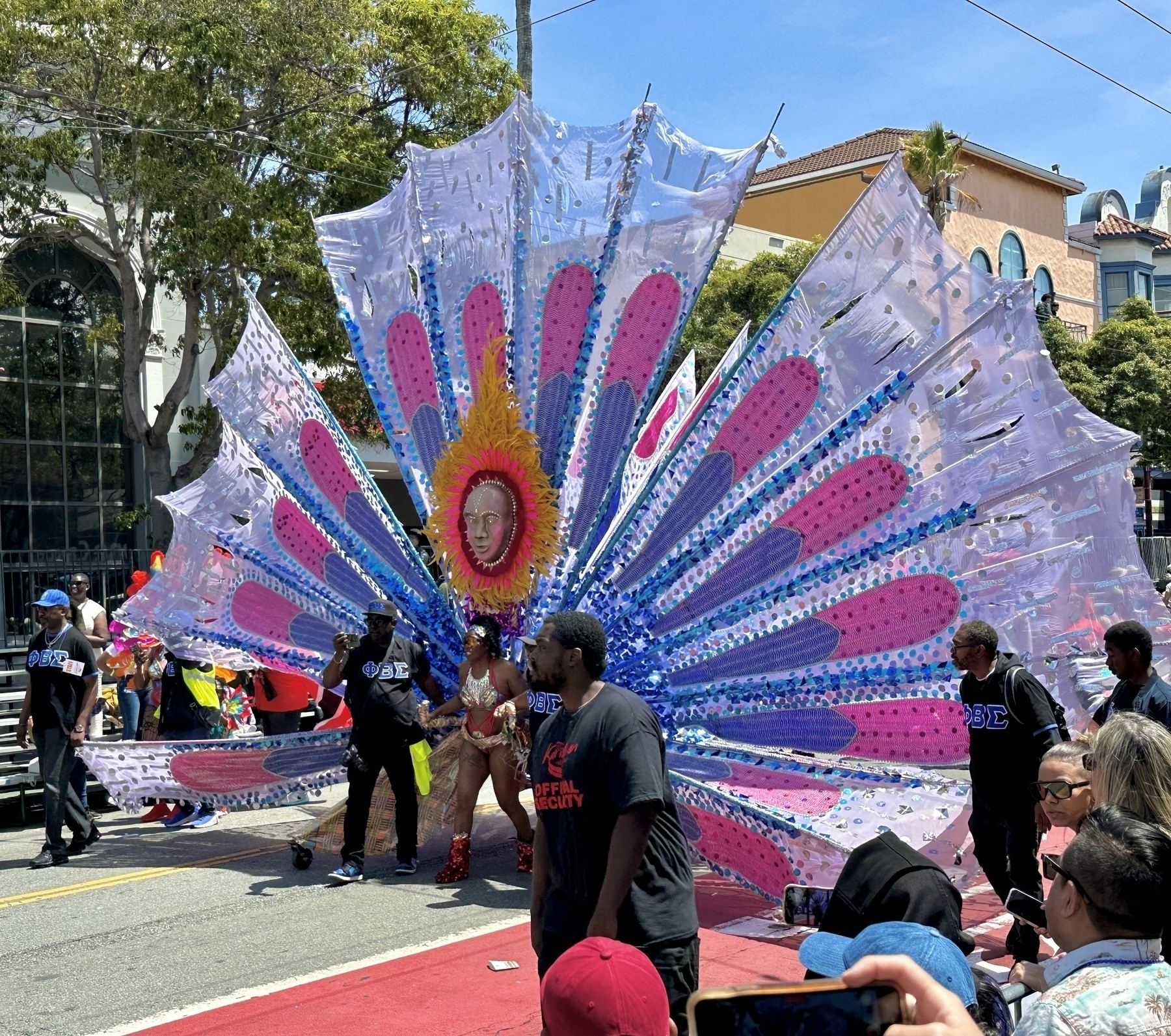
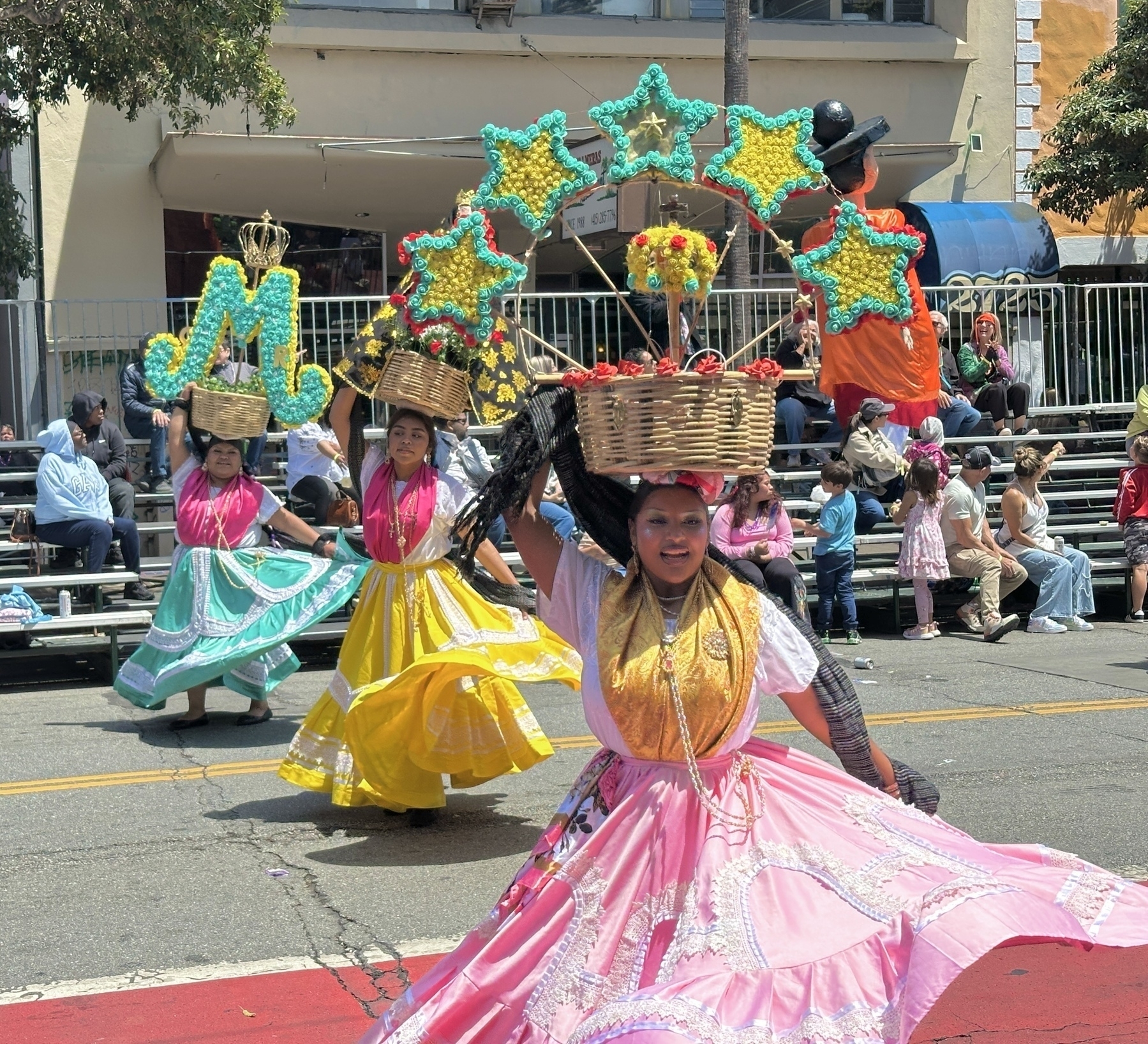
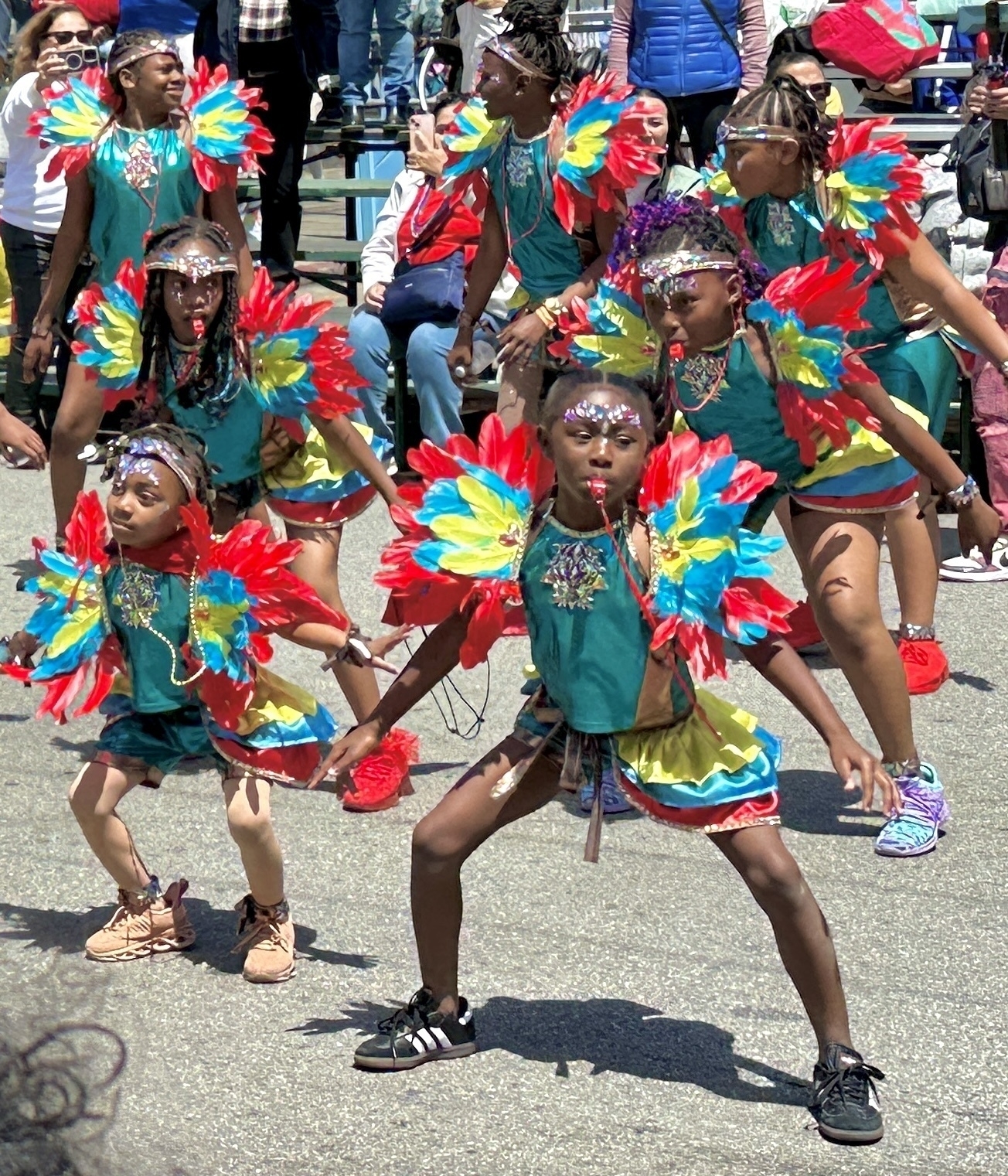
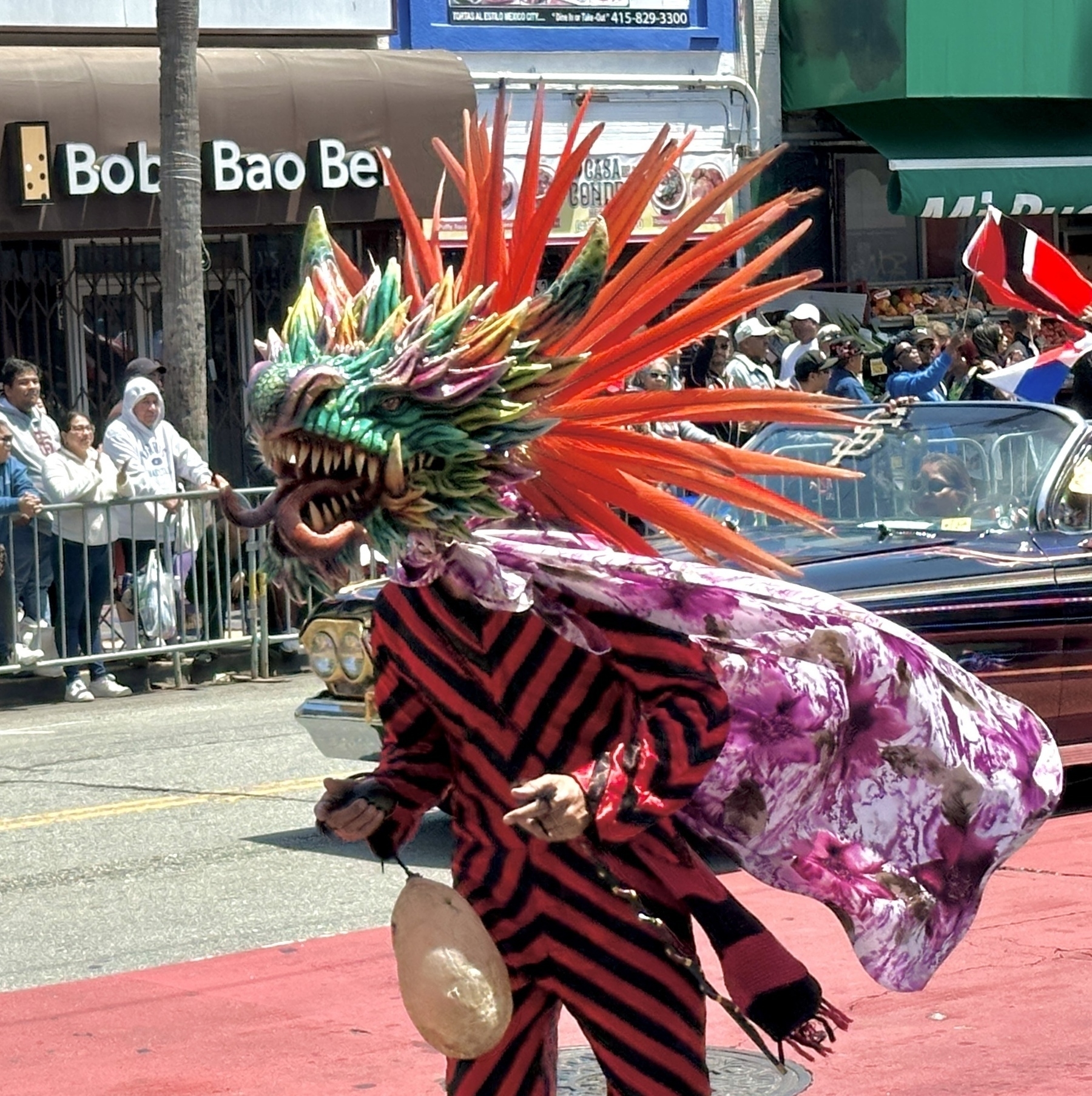
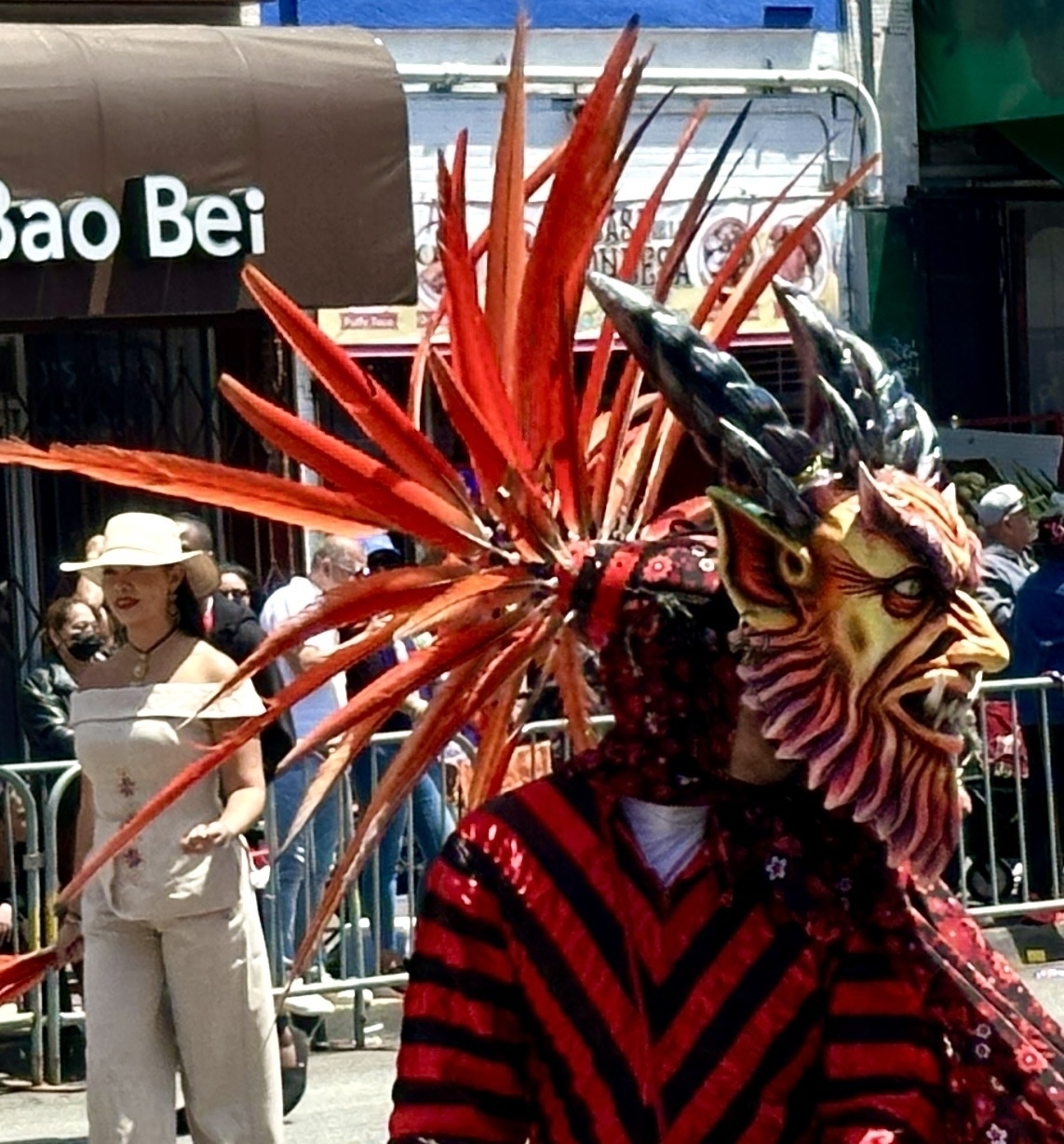
Vegan Ice Cream Experiment #3
Unfortunately, I learned that I can only buy Califia non-dairy Heavy Whip at Rainbow Grocery, which is a pain to get to, so I decided to improvise. Working off of the results from my last attempt at vegan ice cream, which was based on my regular ice cream base recipe, I got Silk brand creamer (which did not have enough fat in it) and added 60g of cocoa butter to bring it closer to the fat content in heavy whipping cream (doing the math, it should have been 119g, but that seemed like too much). I also added 50 additional grams of light corn syrup to improve the scoopability. As usual, for the raspberry flavoring, I cooked 340g of raspberries on low until they became jammy.
Ingredients list:
- 340g Oatly full fat oat milk
- 460g Silk Original Creamer
- 60g cocoa butter (bought in bulk at Rainbow)
- 12g soy lecithin
- 60g NOW coconut milk powder for milk powder
- 200g sugar
- 100g corn syrup
- ⅛ tsp. Locust bean gum
- ¼ tsp. Guar gum
- Pinch of salt
- 340g raspberries (cooked separately)
It really seemed like it had too much water in it, so I let the base simmer for about 30 minutes to thicken it up. It was still very liquidy going into the machine, as well as coming out. But the ultimate texture was scoopable right out of the freezer, so a big improvement over prior batches. Unfortunately, the cocoa butter flavor was very strong, and almost drowned out the raspberry. I need to find a way to add vegan fat that’s not cocoa butter and isn’t coconut either (which also has a very strong flavor). I think I’ll go get the Califia Heavy Whip and try using that for the next batch.
Meanwhile, I’m going to bring it over to my vegan friend Nico’s today and see what he thinks.
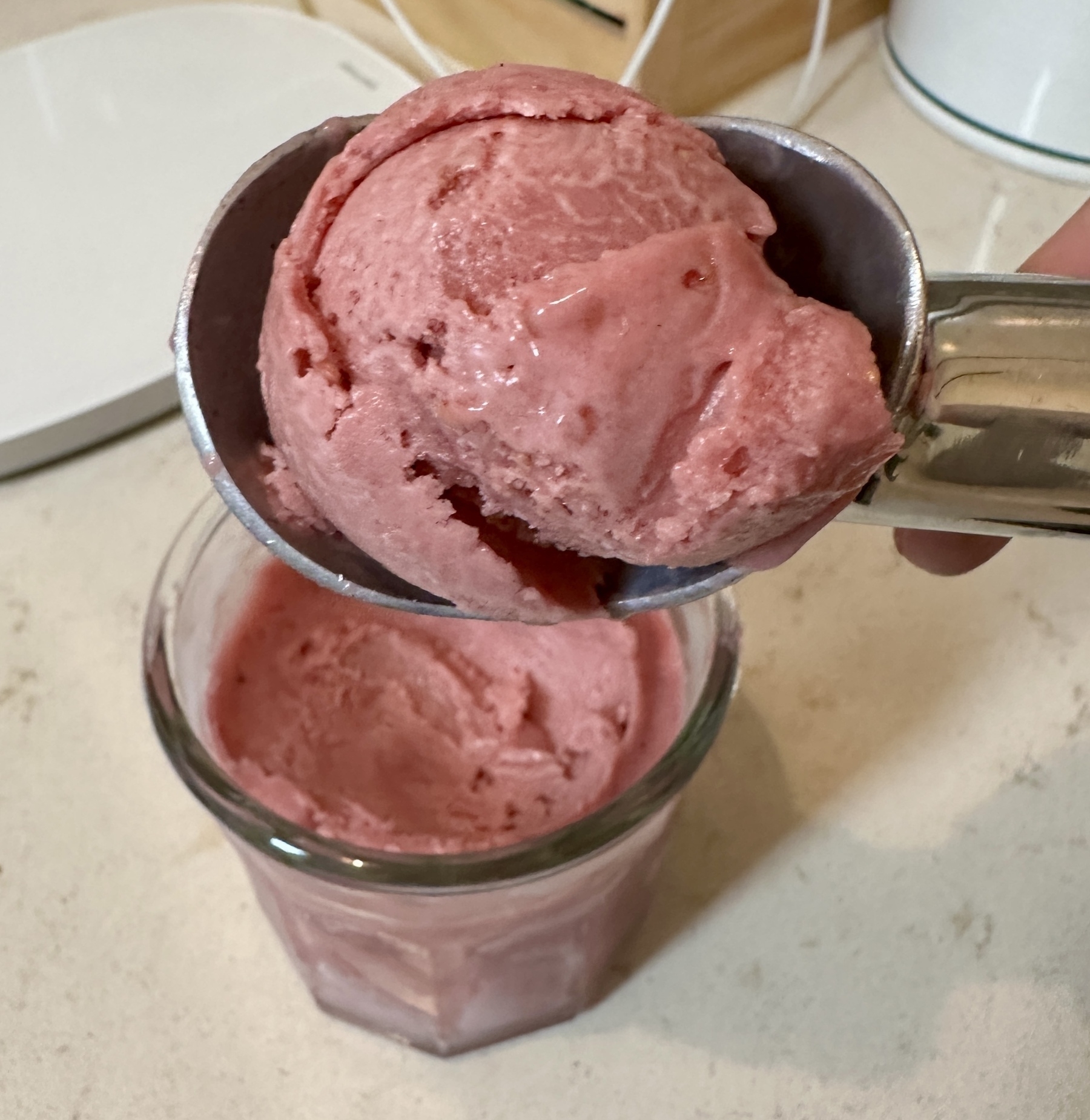
The 10-Year Odyssey of the Mystery Citrus
For friends who have been following the nearly 10-year odyssey of my MYSTERY CITRUS* tree, I’m excited to report that there are a few tiny, nascent, round fruits appearing on it! Please cross your fingers that they finally make it to ripeness!


*When we bought this house in 2015, there was a small, almost-dead tree that I thought was a lemon tree. It was completely shaded by a huge eucalyptus that was threatening to fall over, and which we quickly had removed. In the removal, they damaged the “lemon” tree further. I decided, now that the tree was actually getting sunlight, that I could bring it back to health.
For FIVE years I fertilized it, watered it, and protected it with a frost blanket when it got below freezing at night. It actually started having some healthy growth. But no fruit. I assumed it was just building up its strength again. Finally, it produced a handful of small fruits, which I was surprised to see were ROUND! But they dropped off the tree while they were still tiny and green, so it was impossible to tell what they were. They obviously weren’t lemons.
In year 6, I was excited to see that it had many small fruits on it, and I had hope that this would FINALLY be the year in which it would keep the fruit on the tree until it ripened, and we could find out what it is. Unfortunately, it was attacked by rats during the night (same thing that happened here), and they not only ate ALL THE LEAVES but also much of the bark off the tree. I had no idea that could happen. Any remaining fruits dropped off. I didn’t know if the tree would survive.
But that little sucker kept hanging on, and during years 7 and 8 it just kept growing more branches and leaves, presumably replenishing its stores of energy, and didn’t produce any fruit. So you can see why I am so excited that now in the 9th year, we may actually see some fruit. I’m crossing my fingers. My guess is that it’s a mandarin orange. But we shall see.
